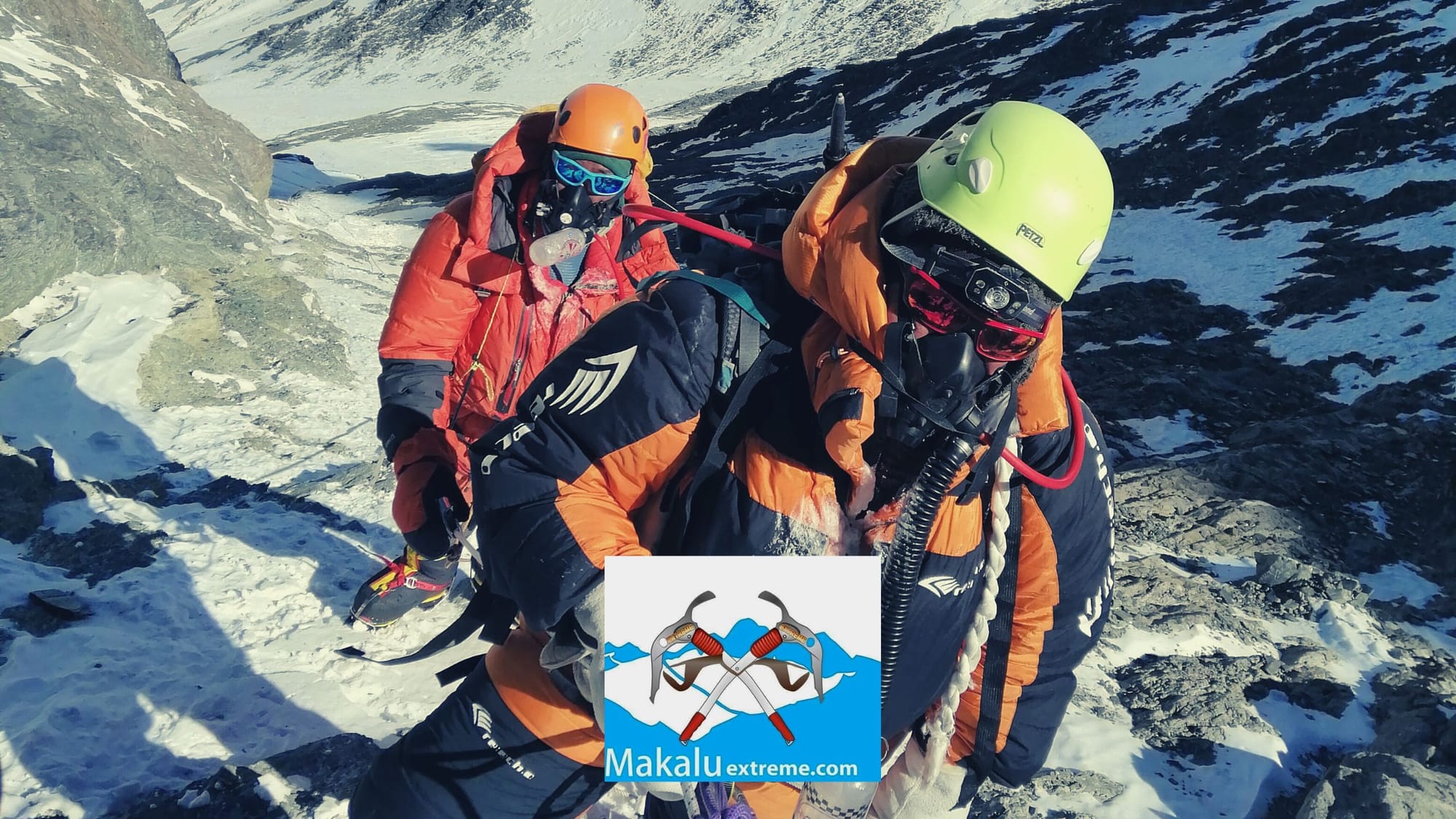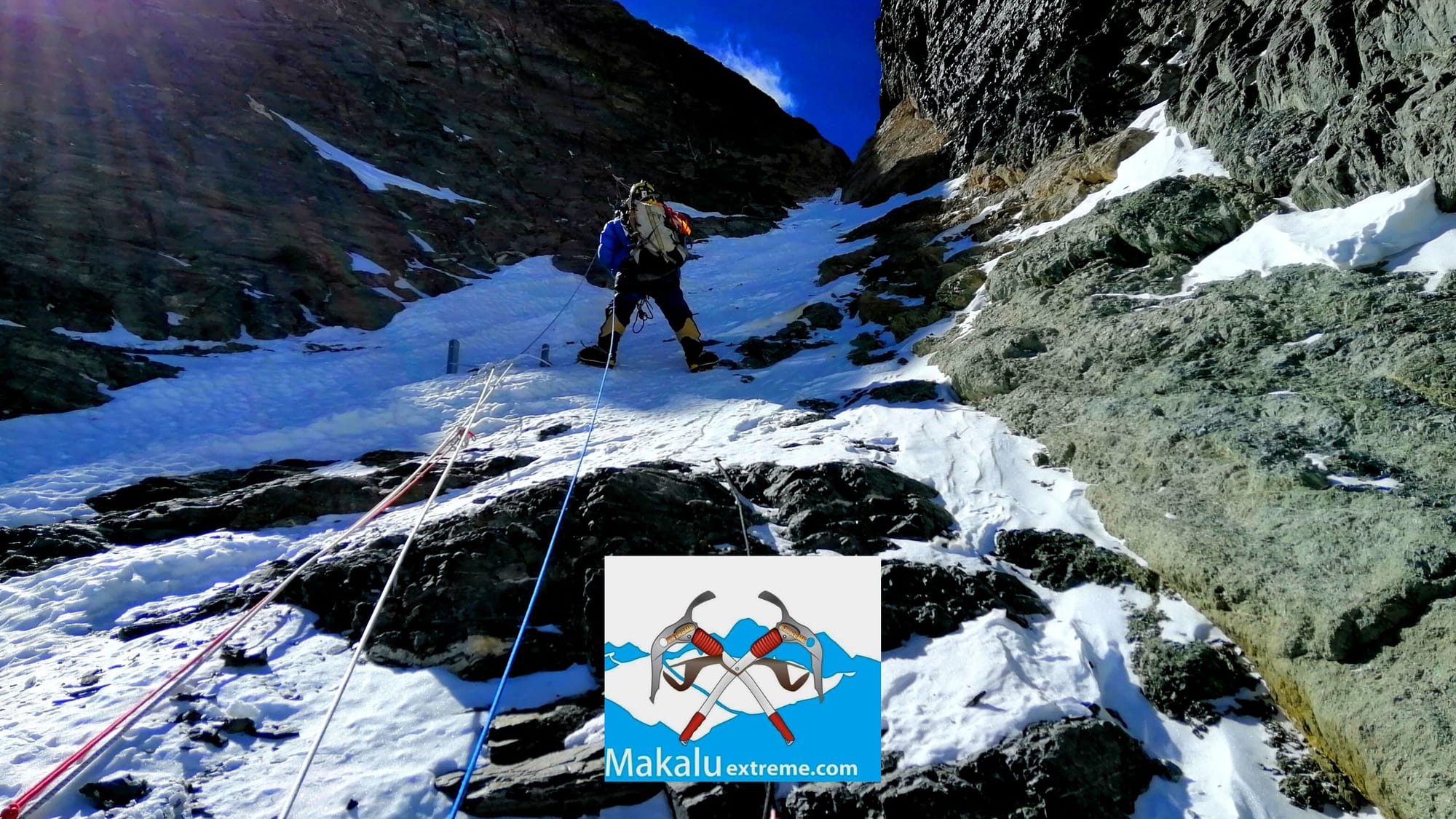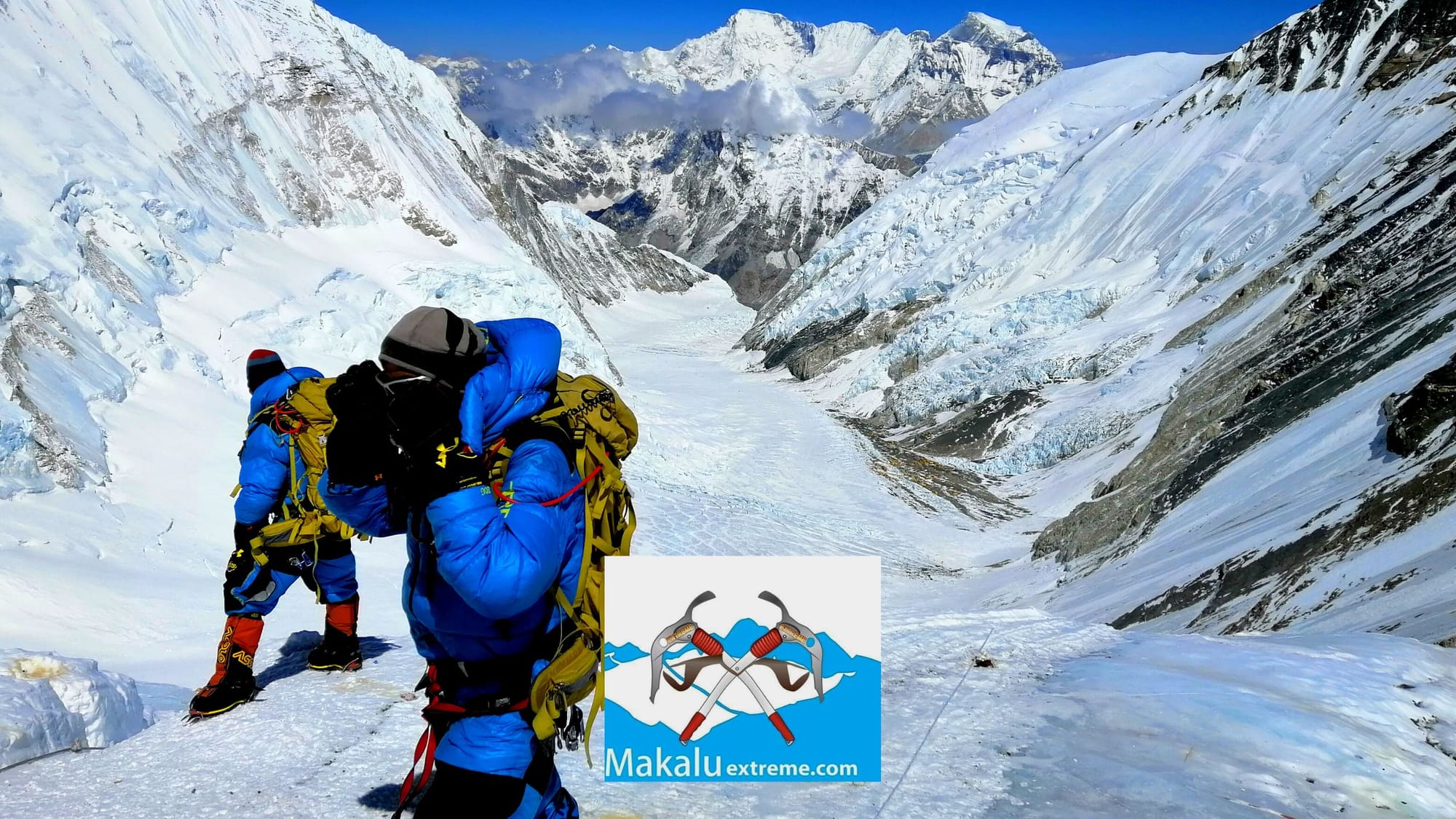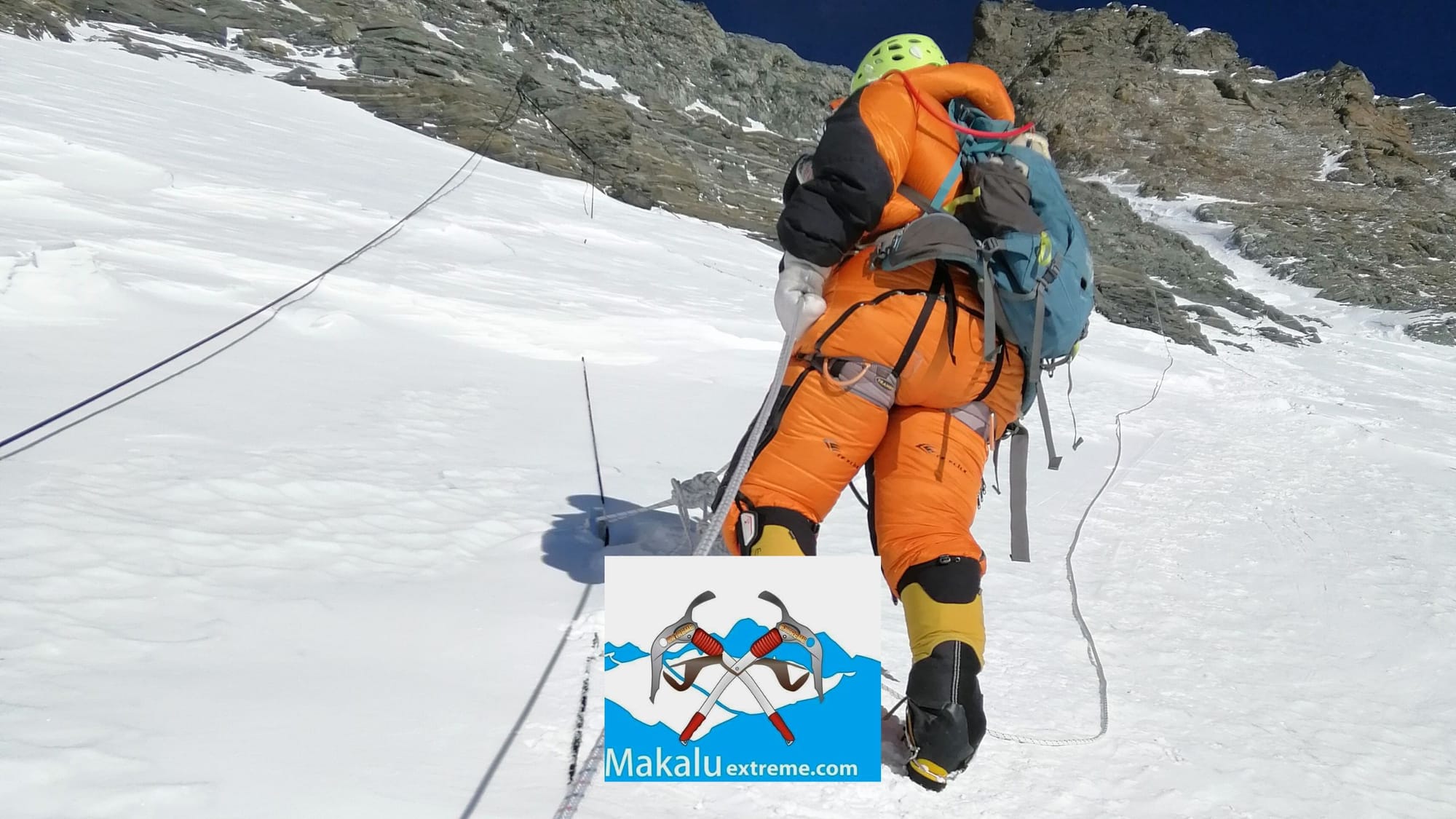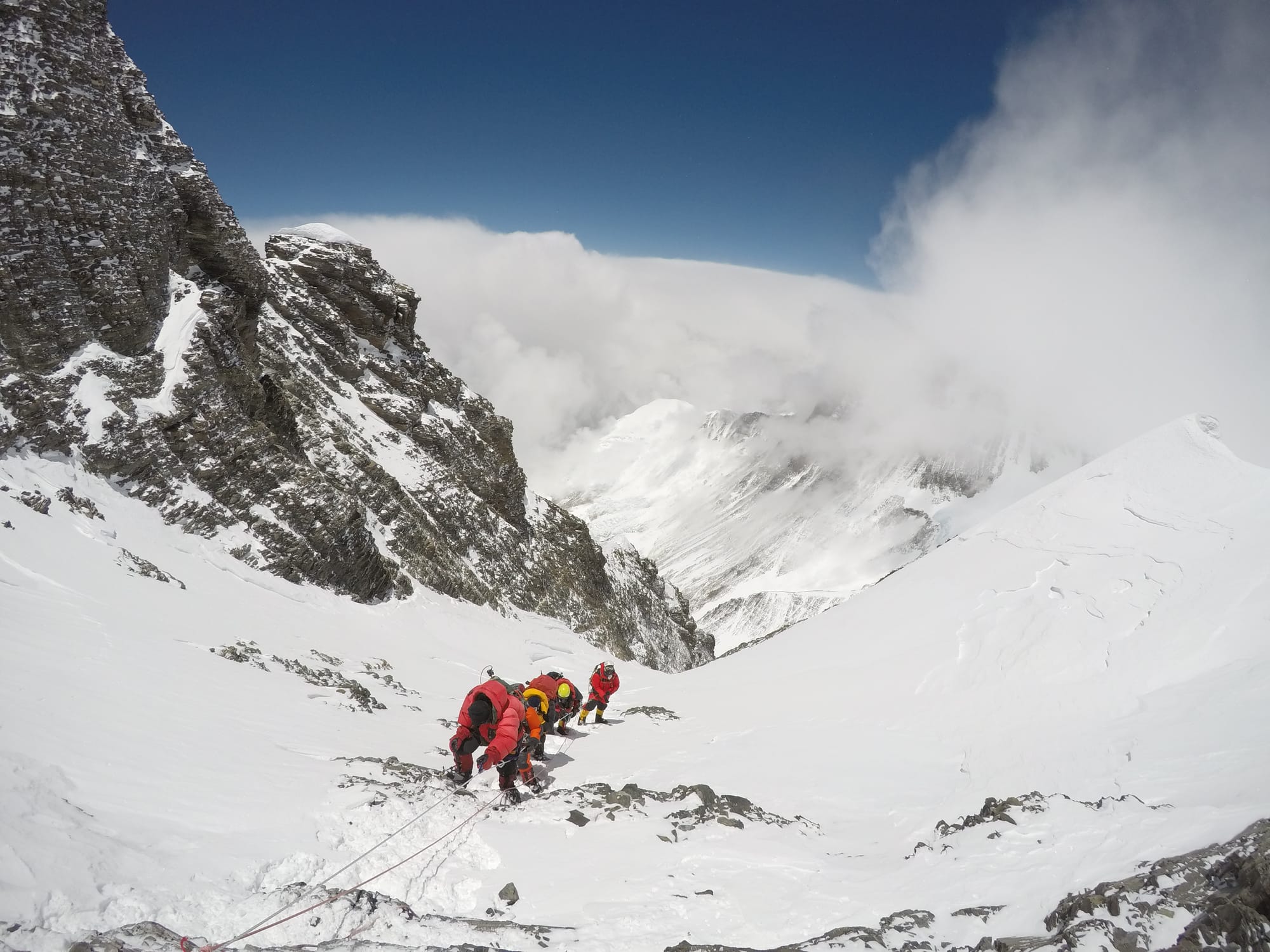Climbing Mount Lhotse 8516: Transparent Lhotse Expedition Costs, Detailed Itinerary, Fixed Departures, and Pricing Information
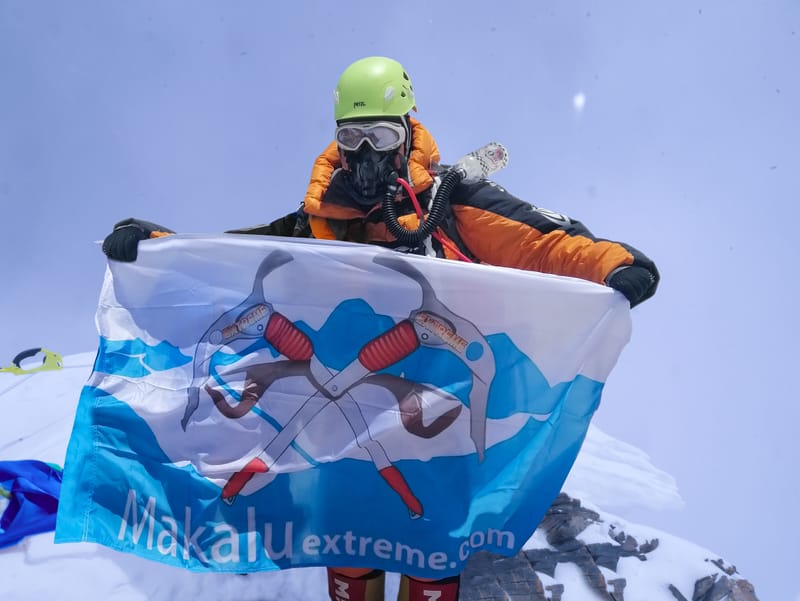
*Makalu Extreme Team offer the ultimate adventure of climbing Mount Lhotse 8516 in Nepal, Himalayas on 2026. Our Lhotse expedition guarantees a transparent and affordable experience, with no hidden expenses. Join us for an unforgettable journey towards the summit of one of the world's highest peaks.
*Our fixed departures for the Lhotse expedition are scheduled from April 8th to June 1st, 2026. Choose the dates that suit you best and embark on this thrilling adventure.
*Our Full Board Service, the cost per person up to the summit is $26,000. This comprehensive package includes all essential services required for a successful expedition.
*For those seeking the utmost luxury and support, our VIP Service offers two experienced climbing guides and 8 bottles of oxygen per member. The price for this exclusive package up to the summit is $36,000.
*If you prefer a more independent approach, our Base Camp Service is available at a cost of $9,500. This option allows you to lead your expedition while benefiting from the guidance and expertise of our experienced team members.
*Rest assured, our expedition will be led by an experienced and renowned Mount Lhotse world record holder Oxana Morneva, who is also an accomplished expedition leader and climbing guide. Our team members are seasoned climbers who have successfully summited Mount Lhotse.
*Join us for an exhilarating and safe climbing experience on Mount Lhotse on 2024. Book now and join the ranks of Mount Lhotse Summiteers.
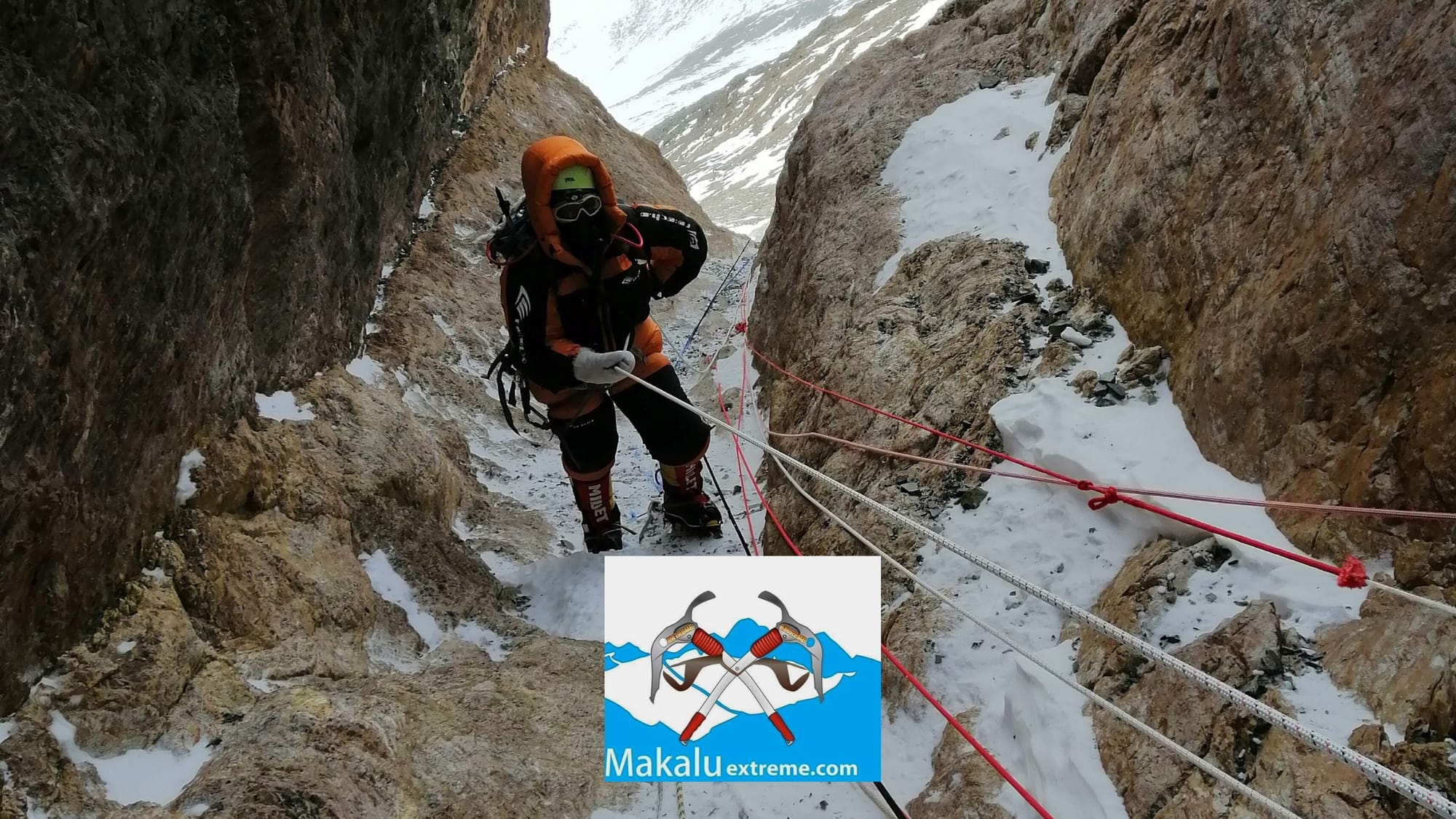
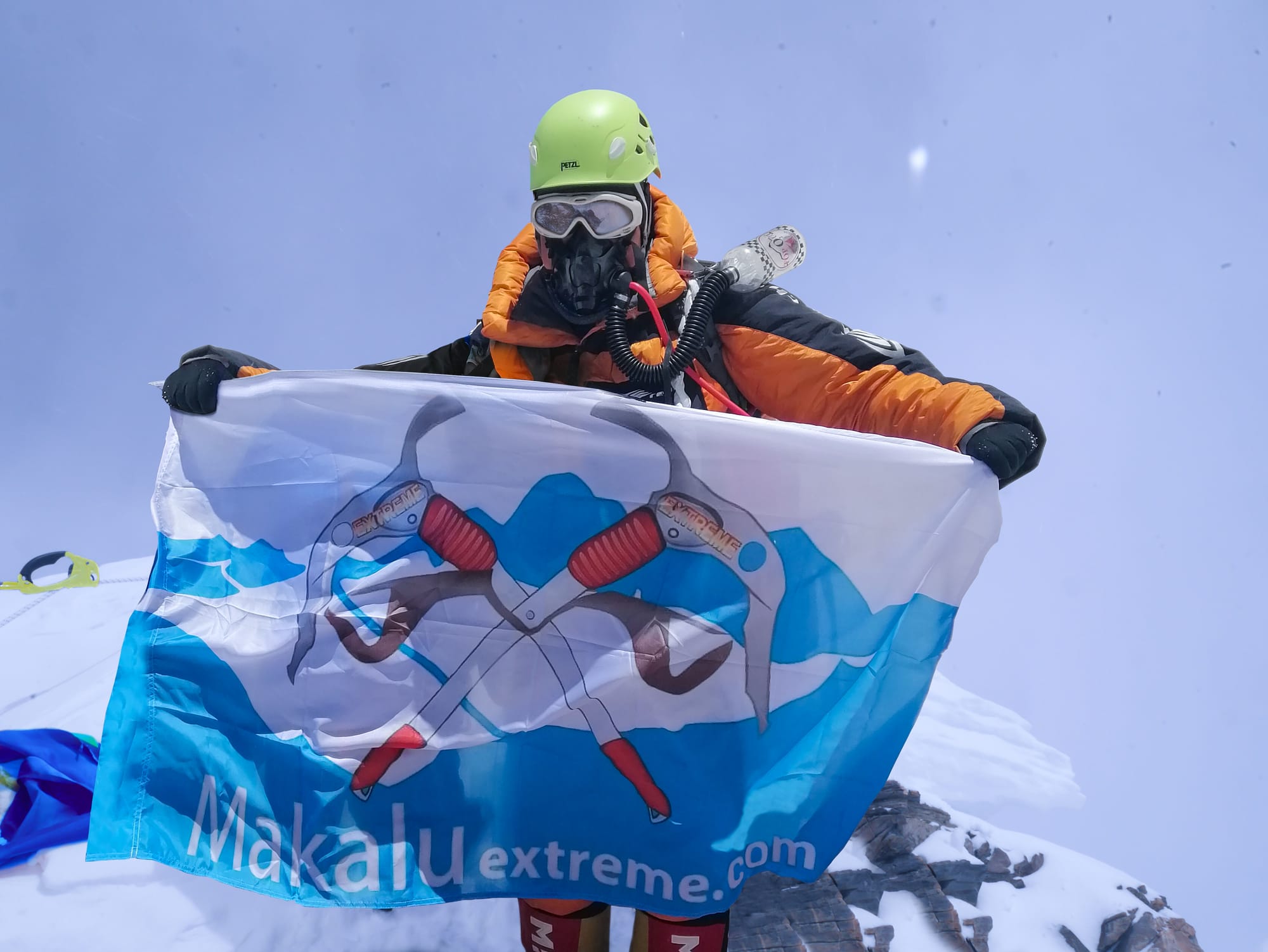
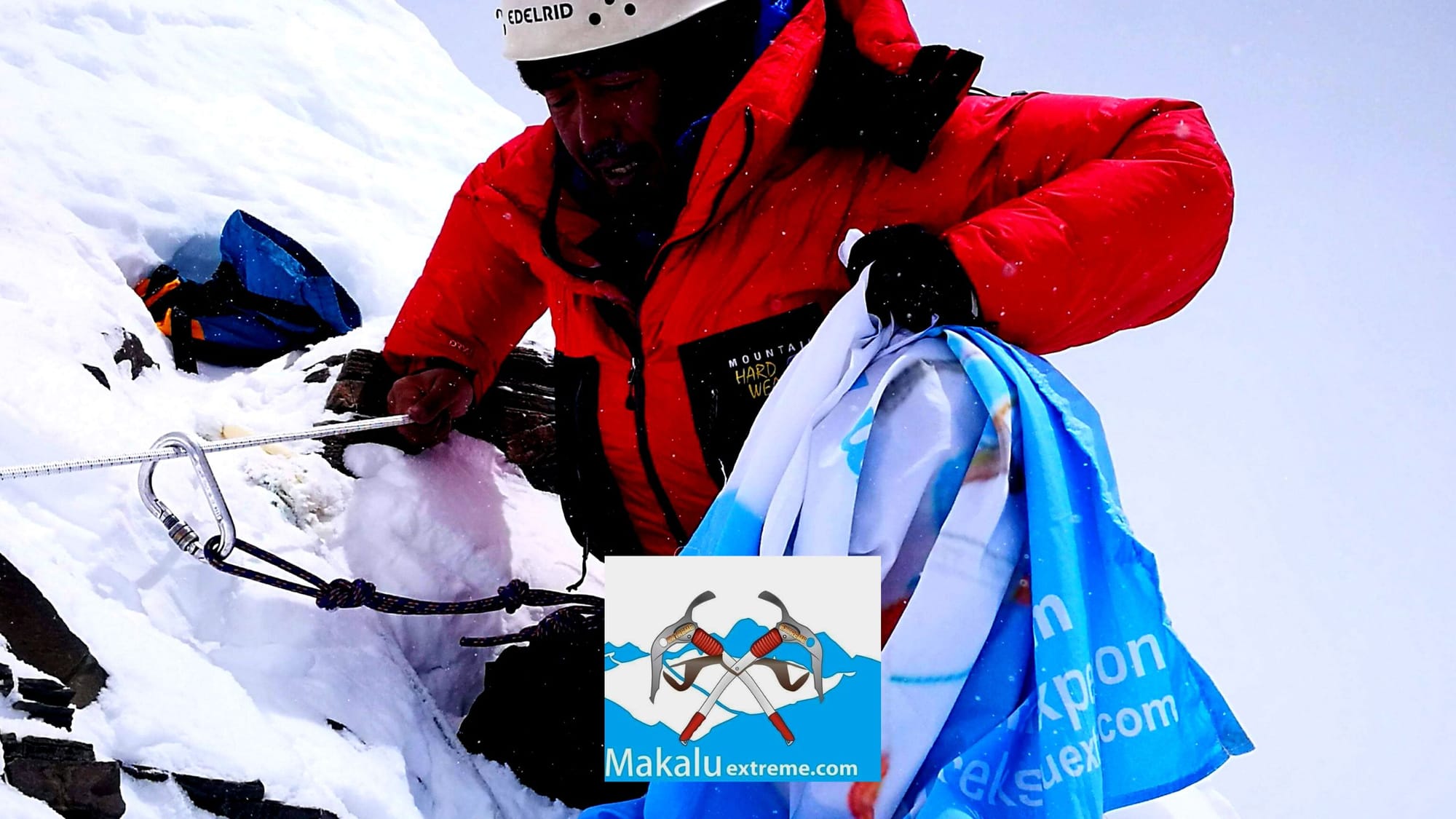
Mount Lhotse Climbing Expedition 2026 overview
Maximum Altitude 8516m
Total Duration 53 Days
Climbing Route JENEVA SPUR
Group Size 4- 24 Pax
Next Date April 8th - Jun 1th, 2026
*Lhotse 8516 Climbing Expedition Full Board service cost up to summit: 27000$ per person
*Lhotse 8516 Climbing Expedition VIP service cost up to summit: 36000$
*Lhotse 8516 Climbing Expedition Base Camp Service cost and price: 10000$
Lhotse 8516 Climbing Expedition 2026 Full Board Service
*The Lhotse Climbing Expedition 2026 price includes:
- Arrival and Departure: Airport - Hotel transfer – Airport (Pick Up and Drop).
- Hotel Accommodation in Kathmandu: 4 nights hotel in Kathmandu on bed & breakfast Sharing Basis (Twin Bed Room).
- Permit: Expedition Royalty and permit of Nepal Government to climb Mt. Lhotse, Sagarmatha National Park permit, TIMS CARD & Pasang Lhamu Rural Municipality entry Permit and its fee.
- Khumbu Ice Fall Climbing charge to (SPCC) Sagarmatha Pollution Control Committee.
- Liaison Officer:1 Government Liaison officer with full equipment ($2,500), salary and accommodation.
- Garbage Management: Stool Shipment Transfer & Garbage Deposit fees.
- Insurance: Medical & Emergency rescue Insurance for all involved Nepalese staffs during the trek and expedition.
- Member transportation:
- (*Standard Route Itinerary):(Domestic Flight) Fly from Kathmandu – Lukla and while returning Lukla - Kathmandu, as per itinerary.
- (*Heli Itinerary):Air Transportation (Domestic Flight): Fly from Kathmandu – Namche Bazaar and trek to Basecamp. While returning fly directly from Everest Basecamp to Kathmandu as per itinerary (with additional cost).
- Expedition Stuffs Transportation: Necessary all equipment Transportation for all Members and Staffs from Kathmandu to Lukla (by air cargo) and to Base camp (by Porters / Yak) – While returning: Base camp to Lukla (by porters / Yak) and Lukla to Kathmandu (by air cargo). Based on the condition expedition stuffs may transfer by land (KTM-Phaplu) or Heli (KTM-Lukla).
- Member Luggage: Up to 30 Kg per member for personal baggage during the trek carrying by porters or Yaks.
- Food and Lodging: 3 meals a day (BLD; including tea and coffee) along with accessible accommodation at Hotel/Lodge/Tea house/during the trek and at Basecamp. Well-managed base camp set up for member & Staffs.
- Base Camp Staff: Experienced and well-trained Base Camp Cook & kitchen Helpers as required.
- Staff Salary and allowance: All Nepalese staffs & porter’s daily wages, salary, equipment, foods & clothing.
- Base Camp Tent: Each member will have individual tent in Base Camp.
- Base Camp equipment: At Base camp: foam mattresses per member, 1 Dinning Tent, 1 Kitchen Tent, 1 Communication tent, 1 Toilet & 1 Shower Tent, Staffs Tent, , Store tents, Tables & chairs & all necessary cooking gears.
- Heater: Heater for base camp in each Dining and other necessary camp.
- Solar/Generator/Light:1 Solar panel and Generator for lights at base camp, battery charge, for laptop and other electronic devices.
- High Altitude Climbing Sherpa: 1 veteran and Government Licensed per member. (1 Member : 1 Sherpa).
- Climbing Sherpa Salary & Allowance: Climbing Sherpa Salary, Equipment, Food And Clothing.
- Bonus: Carry Bonus of Sherpas and Route Fixing Charges.
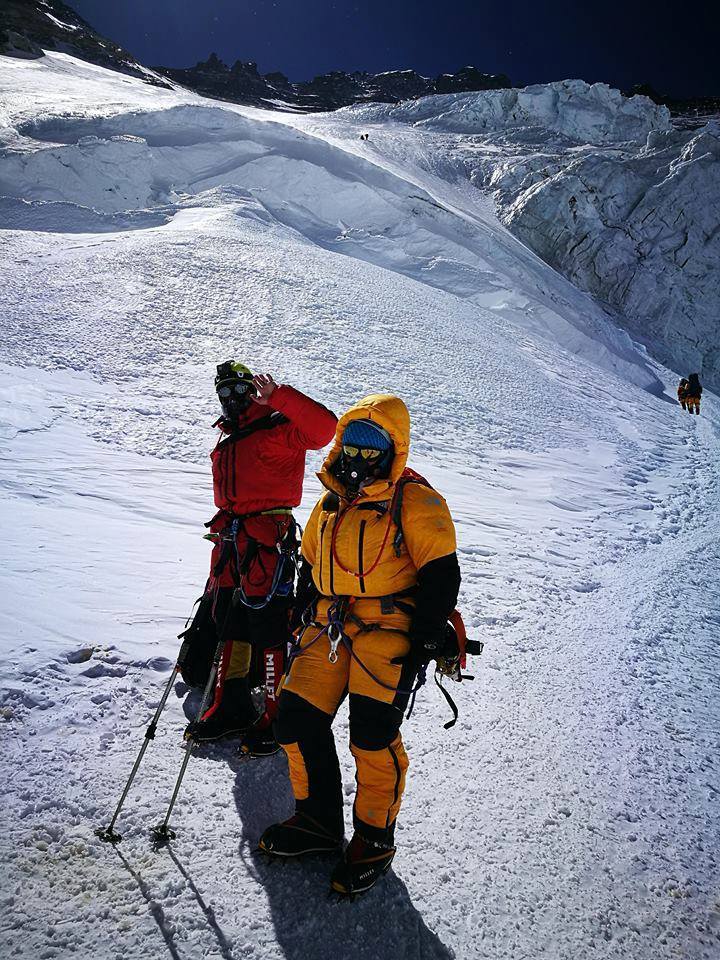
- Oxygen Bottle (O2):Summit Oxygen cylinder: 3 oxygen bottles (4 ltrs.) for each member and 2-oxygen bottle for each high-altitude Sherpa. **
- Oxygen Mask & Regulator: 1 Set of Summit Oxygen mask for each member and high-altitude Sherpa. **
- Back up Oxygen Cylinder, mask and regulator (with appropriate charge).
- Gamow Bag: 1 Rescue sled (Gamow bag) for emergency.
- High camp service: High Altitude Tent, Necessary cooking EPI gas, cooking pot for member, High food for member, Sherpa, all climbing and cooking crew. (C1) (C2) (C3) (C4). Group climbing gears, fixed and dynamic rope during the climbing period as required.
- Rope Fixing Team: The team of experienced Sherpas will fix the route on Lhotse (no extra charge will be applied to members).
- Satellite Phone for emergency communication carrying by Sherpa, also available for members with appropriate charge.
- Walkie-Talkie: Walkie –Talkie for communicating from Base Camp to Mountain and Mountain to Base Camp.
- Permit: Satellite Phone / walkie-talkie permit for all members and staffs.
- Internet Service: Internet facility (1 Mbps) will be available at the Base Camp (subject to a charge).
- Weather Forecast: Weather forecast report during the entire expedition.
- Comprehensive Medical kit for members and staffs.
- Certificate: Lhotse climbing certificate issued by Mo CTCA (after climbing Mt. Lhotse successfully).
**Note : All expedition stuffs and equipment has to be return after the expedition.
*The Lhotse climbing expedition 2024 price dose not include:
*International airfare from / to your country
*Nepal entry visa fee (can be obtained at the airport upon arrival)
*Lunch and dinner in Kathmandu- around 200$
*Hotel after 4 night stay in Kathmandu.
*Personal climbing gear and equipment
*Personal climbing insurance such as, accident, medical, emergency evacuation and lost luggage
*Expenses of personal nature such as drinks, laundry, postage, telephone etc.
*Summit bonus for climbing Sherpa for Lhotse Summit-1500$
*Mount Lhotse 8516 climbing expedition- 2026, VIP service
The cost and price of the VIP package is 36000$
The Mount Lhotse Climbing Expedition VIP package cost includes:
*ENGLISH- SPEAKING CONSULTANT THROUGHOUT THE ENTIRE ROUTE
*Quilted jacket with the company and expedition logo
*Duffle bag with the company logo, size XL
*Hotel in Kathmandu NORLING RESORT (4 nights) + Breakfast; single occupancy
*Permit for mount Lhotse 8516 climbing expedition
*Two guides per participant (climbers 5-6 8000+). Guides accompany their participants to the Lhotse Summit, carry their oxygen, throw and set up high-altitude camps, and prepare food in high-altitude camps.
*The cost of the liaison officer;
*Shipping of personal goods in the Camp - 30kg - one participant
*The fixed rope on the route
*Generator at base camp;
*Heater in the dining tent of the base camp;
*The kitchen tent
*Kitchen equipment;
*Dining tent;
*Toilet;
*Shower;
*Satellite phone for emergency communication
*Walkie-talkie
*Cook and his assistant;
*Tents for accommodation in the base camp: one tent per participant
*Accommodation on the track and throughout the expedition in the Base camp
*Group climbing Equipment and equipment for high-altitude camps;
*Meals at Base Camp and high-altitude camps
*All transfers under the program within Nepal
*Staff insurance;
*Oxygen equipment
*Oxygen for participants - 8 cylinders for 1 participant
*Oxygen to the guides 3 of the cylinder 1 guide
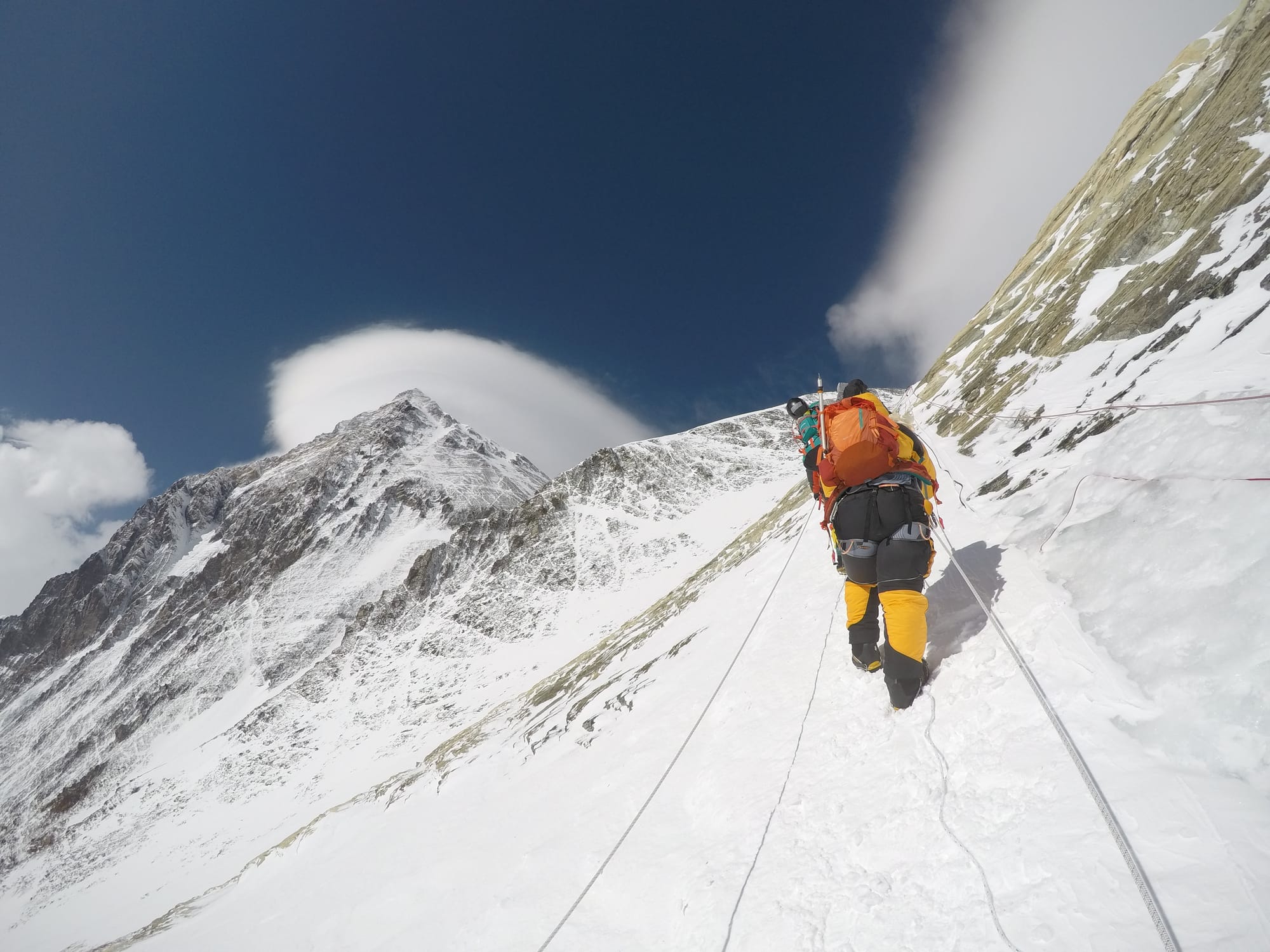
*Climbing Lhotse Necessary Information:
*The ascent to the top begins at 11 pm, the RETURN POINT is 12:OO of the day
*All instructions of the guide are MANDATORY
*The Lhotse 8516 Climbing Expedition price dose not include:
*Summit bonus for reaching the top-1500$ for each guide
*Personal expedition equipment
*Food on the track
*Personal mountaineering insurance;
*City tour;
*Personal equipment,
*Personal first aid kit;
*International flight
*Alcoholic and soft drinks
*Lunch and dinner in Kathmandu
*Rescue operation ( if necessary)
*Lhotse Climbing Expedition Additional Services:
*Oxygen bottle - $ 500 per piece. The oxygen is checked, the throat does not burn
*Climbing Lhotse: Additional Expenses:
*Summit bonus - $ 1500 for each guide
*International flight 800 $
*Lunch and dinner in Kathmandu
*Personal insurance-about $800
Climbing Mount Lhotse 8516: The Lhotse Expedition introduction
Mount Lhotse stands at 8516 M, making it the fourth highest mountain in the world. It is situated at the border of Tibet and Nepal. Its long east-west crest is located immediately south of Mount Everest, and the South Col, a vertical ridge that never drops below 8,000m, connects the summits of the two mountains. Mount Lhotse has three summits: Lhotse Main 8516m, Lhotse Shar 8383m and Lhotse Middle or East 8413m.Sometimes mistakenly Lhotse has been identified as the south peak of the Everest massif. No serious attention was given to climbing Lhotse until Everest had finally been ascended. Mount Lhotse first climbed in 1956 as an alternative route towards the summit of Everest.
Ernst Reiss and Fritz Luchsinger who were part of a Swiss expedition first climbed Main Lhotse in 1956. Sepp Mayerl and Rolf Walter first climbed Lhotse Shar on December 5, 1979 by taking the SE-ridge.
A deep scar, an icy gully known as the Lhotse Couloir, marks The West Face of Lhotse; the couloir is the crucial test to the Lhotse climb, mainly because the climbing conditions of the couloir are affected by weather and seasonal snowfall.The route progresses through Khumbu icefall. Moving further, we will reach Camp 1 that exists at the top of Khumbu icefall that is surrounded with crevasses. From Camp 1, we will pass through lateral moraine to west ridge that greets us with close-up view of Mount Lhotse. This place is perfect for Camp2. Leaving Camp2, we will reach near to Lhotse wall by crossing glacier and ice cliffs where we will set Camp3. Camp4 is located near to South Col. From Camp 4, we will proceed through steep rock sections to the summit of Mount Lhotse 8516.
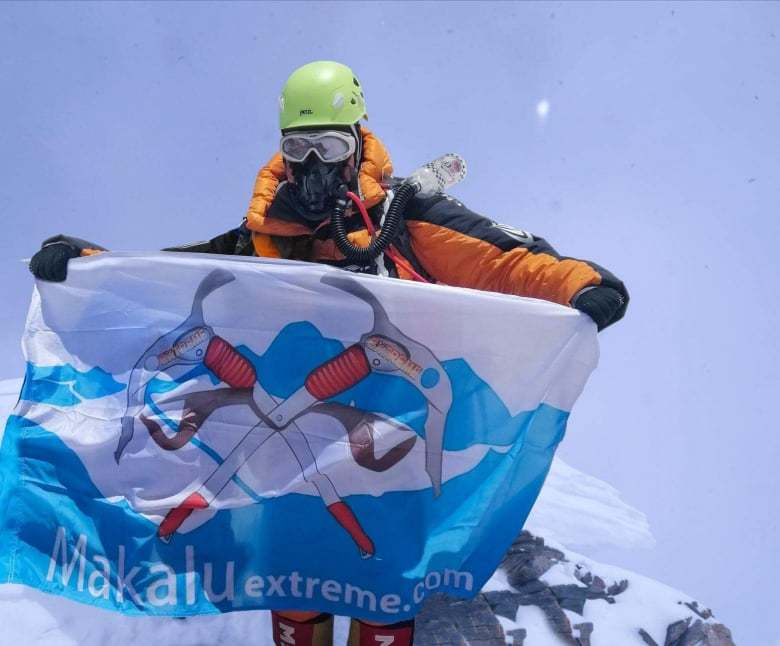
Consider Climbing Lobuche for Extra Acclimatization
For people with a sufficient time frame, an excursion to nearby Lobuche Peak, 6119m, is a great way to ensure you are well acclimatized before you start the Lhotse Climbing Expedition.
Climbing Lhotse 8516:
Equipment list, what to take
Travel Documents
Valid Passport ¨ Credit Cards ¨ Pp Size Photo (4 Pieces) ¨ Insurance Paper And Contact Address. ¨ Family Members / Company’s Contact Address
Foot Wear
¨ Kailas / Lasportiva / Millet (Summit Shoe) ¨ Normal Socks (5-6 Pairs) ¨ Summit Socks (2 Pairs) ¨ Trekking Shoes (1 Pair) ¨ Camp Booties (1 Pair) ¨ Basecamp Slipper (1 Pair)
Upper Body
¨ Light Weight Top / Thermo Coat (2-3 Layers) ¨ Mid Weight Top (2-3 Layers) ¨ Heavy Weight Top (2 Layers) ¨ Fleece Jacket (1) ¨ Gore Text Jacket (1) ¨ Down Jacket (1) ¨ Wind Proof Jacket ¨ Cotton T-Shirt For Base Camp. (2-3)
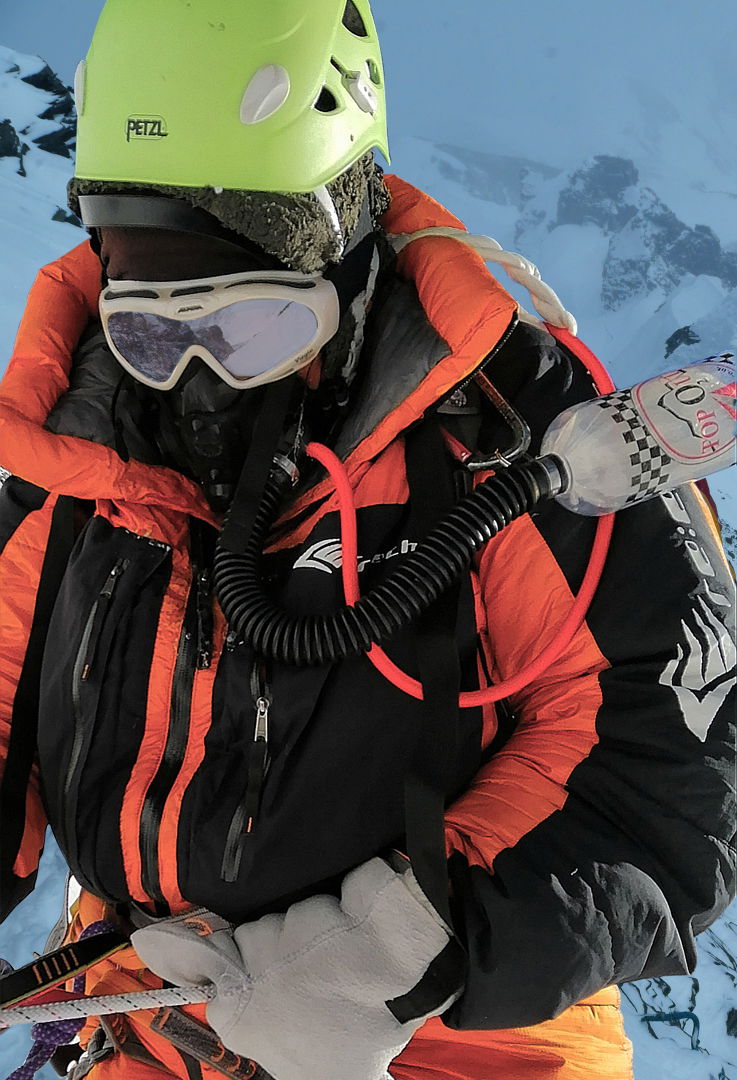 Lower Body
Lower Body
¨ Light Weight Long Under Pants (2-3 Pairs) ¨ Under Wear (5-7 Pairs) ¨ Mid Weight Long Under Pants (2-3 Pairs) ¨ Heavy Weight Long Under Wear ¨ Gore Text Pant. (1) ¨ Down Pants. (1) ¨ Water Proof Pant. (1)
Head
¨ Sun Cap ¨ Desert Cap ¨ Balaclava ¨ Fleece Hat ¨ Neck Gaiter (2-3)
Hands
¨ Thin Fleece Gloves (2 Pairs) ¨ Wind Stopper Fleece Gloves ¨ Heavy Gloves (Mitten) ¨ Summit Gloves
Sleeping Bags
¨ Sleeping Bag - 20 Degree Celsius (For Base Camp) ¨ Down Sleeping Bag - 20 To -40 Degree Celsius (Extreme Comfort) ¨ Thermarest Mattress (Cell Foam) ¨ Thermarest Mattress (Inflatable)
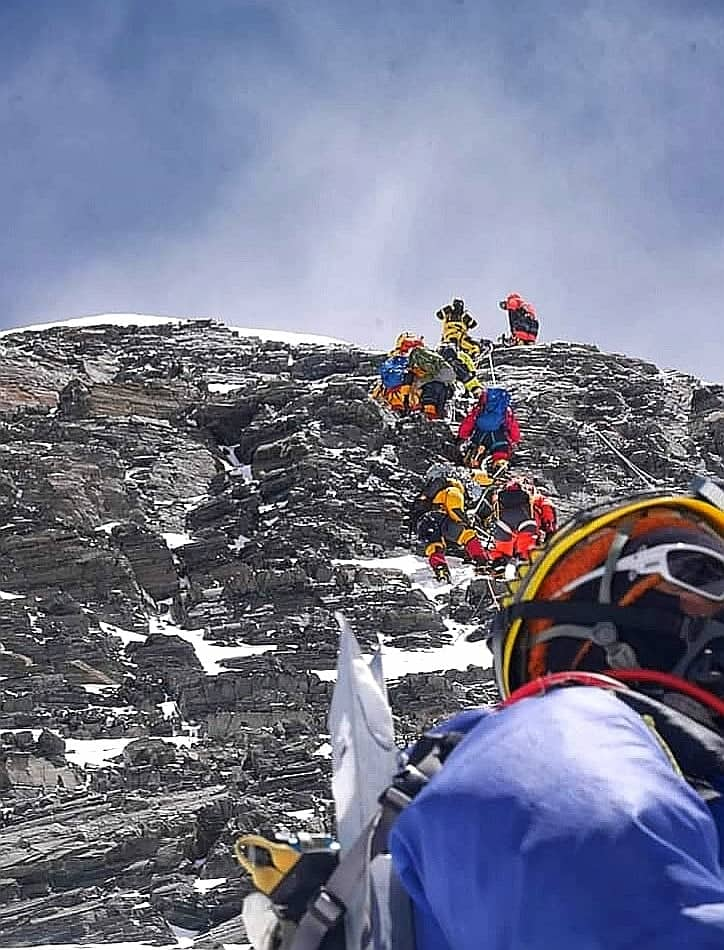 Climbing Equipment
Climbing Equipment
¨ Climbing Helmet ¨ Down Suit (Kailas / Marmot / Mountain Hardware / North Face / Millet ) ¨ Crampons (Fit with Boot) ¨ Ice Axe ¨ Harness ¨ Atc Guide ¨ Jummer / Ascender ¨ Lock Carabiner (3) ¨ Unlock Carabiner (3) ¨ Tape Slings (2) ¨ Prusik Loops (1) ¨ Snow Goggle ¨ Head Light (4 Pairs Rechargeable Batteries Recommended) ¨ Satellite Phone ¨ ¨ Hand Warmer (If Possible) Bag Packs ¨ Rucksacks 45L - 55L ¨ Duffle Bag 90 L -120 L (2 Pieces) ¨ Water Proof Stuff Sacks Large (2 Pieces) ¨ Water Proof Stuff Sacks Small (2 Pieces) Sun Stuffs ¨ Banana Boat/ Nivea Sun Cream -50 (Spf) ¨ Lip Guard -20 / -50 (Spf) ¨ Sun Glasses (Uv Protection) ¨ Glaciers Glasses (Uv Protection)
Toiletries
¨ Hand Disinfectant ¨ Wet Tissue ¨ Toothpaste ¨ Toothbrush ¨ Soap ¨ Shampoo ¨ Garbage Bag
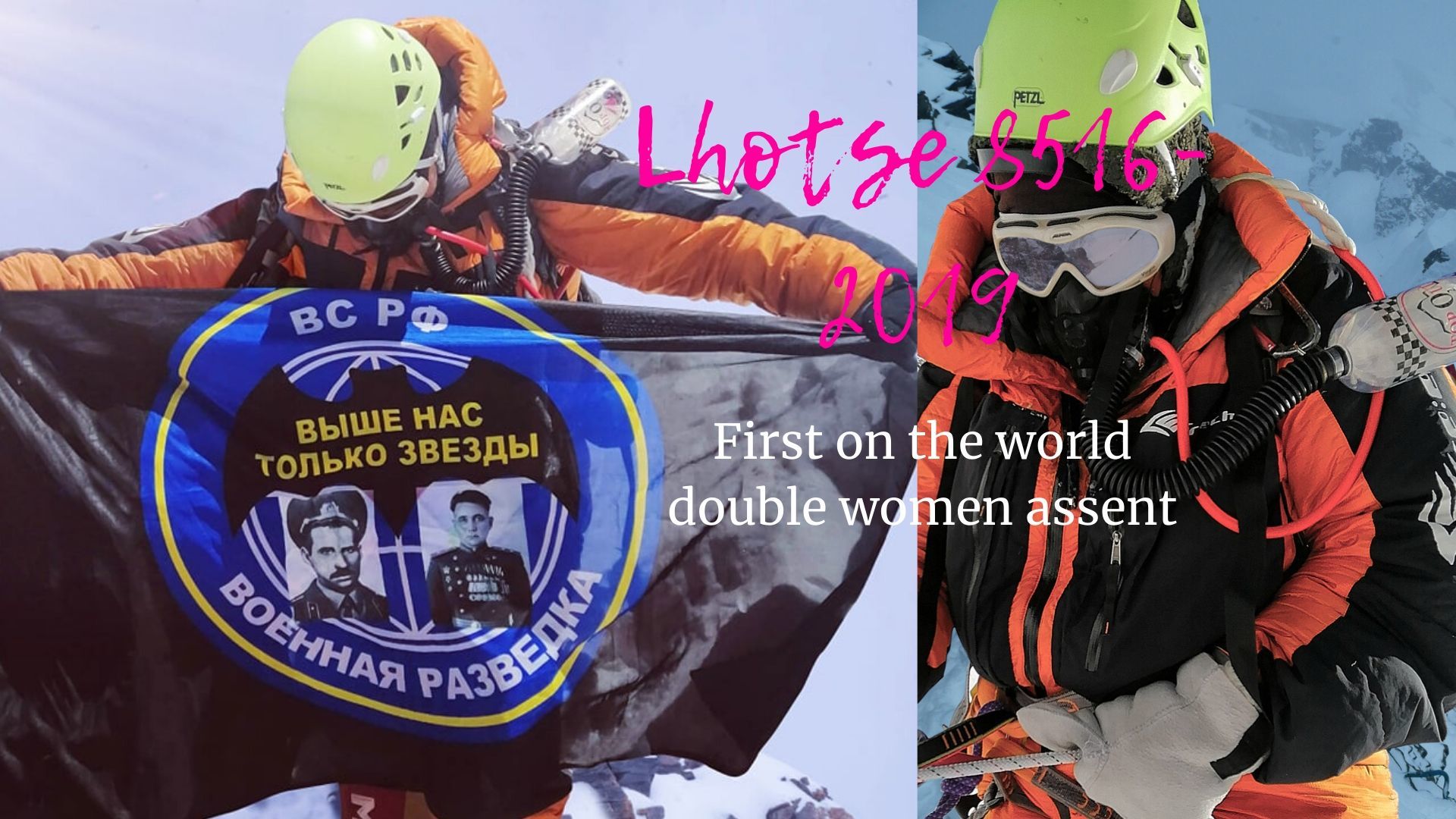
Eating & Drinking
¨ Water Bottle (2) ¨ Thermos ¨ Mug ¨ Spoon/ Fork ¨
Bowl Medical ¨ Brufen / Ibuprofens ¨ Antibiotic ¨ Diamox ¨ Paracetamol ¨ Handy Plaster ¨ Crack Bandage ¨ Tincture Iodine Miscellaneous
¨ Walking Stick ¨
Pocket Knife (Swiss)
¨ Umbrella / Rain Coat
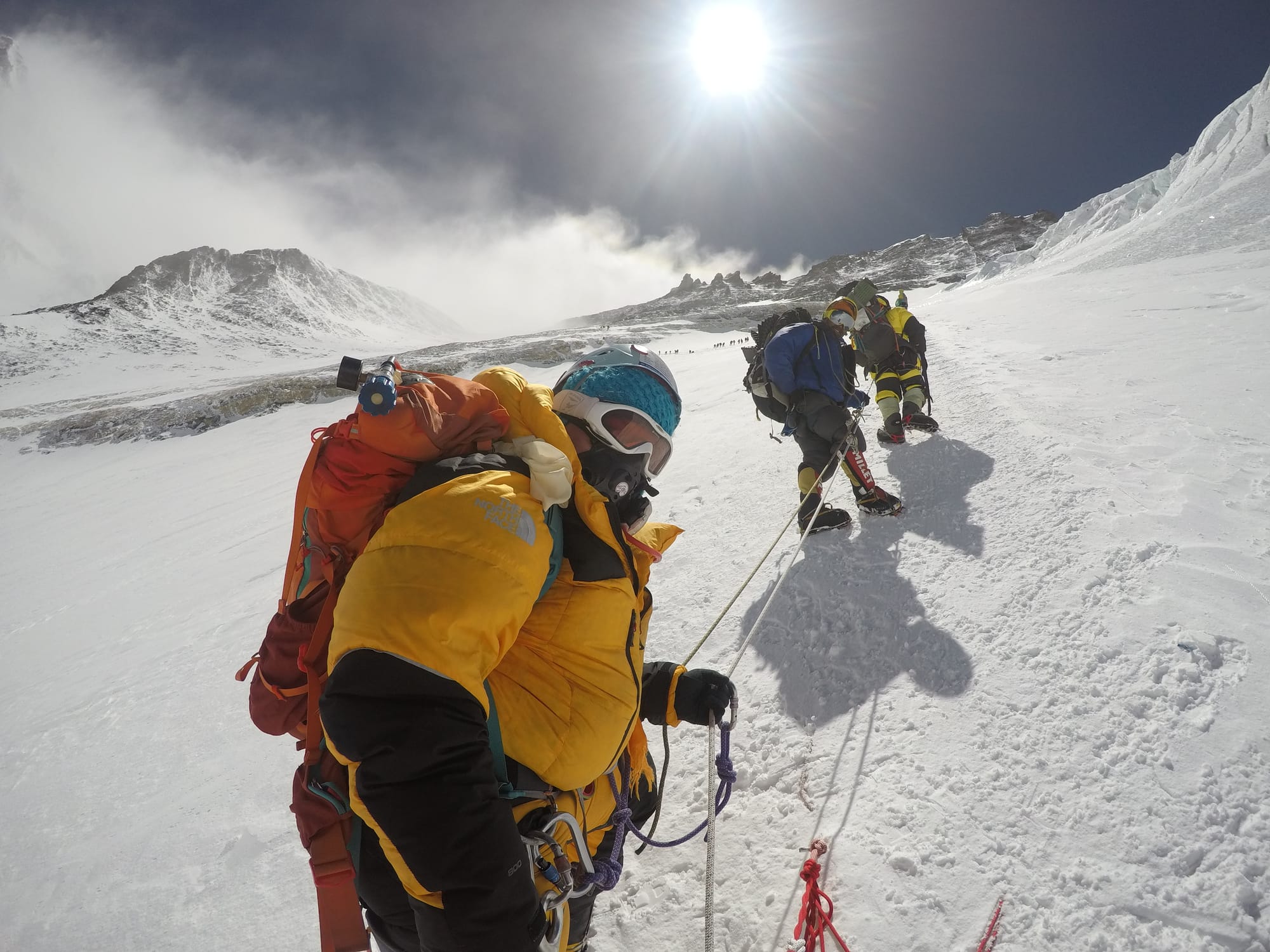
LHOTSE 8516 CLIMBING EXPEDITION 2023, NEPAL, HIMALAYA
THE FIXED DEPARTURE:
8 APRIL-1 ST JUNE 2023 +5 MEMBERS ALREADY IN GROUP
LHOTSE CLIMBING EXPEDITION fULL BOARD SERVICE COST AND PRICE UP TO SUMMIT: 20000$ PER PERSON
COST AND PRICE INCLUDES:
- Arrival and Departure: Airport - Hotel transfer – Airport (Pick Up and Drop).
- Hotel Accommodation in Kathmandu: 4 nights hotel in Kathmandu (3-star category) on bed & breakfast Sharing Basis (Twin Bed Room).
- Permit: Expedition Royalty and permit of Nepal Government to climb Mt. Lhotse, Sagarmatha National Park permit, TIMS CARD & Pasang Lhamu Rural Municipality entry Permit and its fee.
- Khumbu Ice Fall Climbingcharge to (SPCC) Sagarmatha Pollution Control Committee.
- Liaison Officer:1 Government Liaison officer with full equipment ($2,500), salary and accommodation.
- Garbage Management:Stool Shipment Transfer & Garbage Deposit fees.
- Insurance:Medical & Emergency rescue Insurance for all involved Nepalese staffs during the trek and expedition.
- Member transportation:
- (*Standard Route Itinerary):(Domestic Flight) Fly from Kathmandu – Lukla and while returning Lukla - Kathmandu, as per itinerary.
- (*Heli Itinerary):Air Transportation (Domestic Flight): Fly from Kathmandu – Namche Bazaar and trek to Basecamp. While returning fly directly from Everest Basecamp to Kathmandu as per itinerary (with additional cost).
- Expedition Stuffs Transportation:Necessary all equipment Transportation for all Members and Staffs from Kathmandu to Lukla (by air cargo) and to Base camp (by Porters / Yak) – While returning: Base camp to Lukla (by porters / Yak) and Lukla to Kathmandu (by air cargo). Based on the condition expedition stuffs may transfer by land (KTM-Phaplu) or Heli (KTM-Lukla).
- Member Luggage:Up to 30 Kg per member for personal baggage during the trek carrying by porters or Yaks.
- Food and Lodging: 3 meals a day (BLD; including tea and coffee) along with accessible accommodation at Hotel/Lodge/Tea house/during the trek and at Basecamp. Well-managed base camp set up for member & Staffs.
- Base Camp Staff: Experienced and well-trained Base Camp Cook & kitchen Helpers as required.
- Staff Salary and allowance:All Nepalese staffs & porter’s daily wages, salary, equipment, foods & clothing.
- Base Camp Tent: Each member will have individual tent in Base Camp.
- Base Camp equipment: At Base camp: foam mattresses per member, 1 Dinning Tent, 1 Kitchen Tent, 1 Communication tent, 1 Toilet & 1 Shower Tent, Staffs Tent, , Store tents, Tables & chairs & all necessary cooking gears.
- Heater:Heater for base camp in each Dining and other necessary camp.
- Solar/Generator/Light:1 Solar panel and Generator for lights at base camp, battery charge, for laptop and other electronic devices.
- High Altitude Climbing Sherpa: 1 veteran and Government Licensed per member. (1 Member : 1 Sherpa).
- Climbing Sherpa Salary & Allowance:Climbing Sherpa Salary, Equipment, Food And Clothing.
- Bonus: Carry Bonus of Sherpas and Route Fixing Charges.

- Oxygen Bottle (O2):Summit Oxygen cylinder: 3 oxygen bottles (4 ltrs.) for each member and 2-oxygen bottle for each high-altitude Sherpa. **
- Oxygen Mask & Regulator: 1 Set of Summit Oxygen mask for each member and high-altitude Sherpa. **
- Back up Oxygen Cylinder, mask and regulator (with appropriate charge).
- Gamow Bag: 1 Rescue sled (Gamow bag) for emergency.
- High camp service: High Altitude Tent, Necessary cooking EPI gas, cooking pot for member, High food for member, Sherpa, all climbing and cooking crew. (C1) (C2) (C3) (C4). Group climbing gears, fixed and dynamic rope during the climbing period as required.
- Rope Fixing Team: The team of experienced Sherpas will fix the route on Lhotse (no extra charge will be applied to members).
- Satellite Phone for emergency communication carrying by Sherpa, also available for members with appropriate charge.
- Walkie-Talkie: Walkie –Talkie for communicating from Base Camp to Mountain and Mountain to Base Camp.
- Permit: Satellite Phone / walkie-talkie permit for all members and staffs.
- Internet Service:Internet facility (1 Mbps) will be available at the Base Camp (subject to a charge).
- Weather Forecast: Weather forecast report during the entire expedition.
- Comprehensive Medical kit for members and staffs.
- Certificate: Lhotse climbing certificate issued by MoCTCA (after climbing Mt. Lhotse successfully).
**Note : All expedition stuffs and equipment has to be return after the expedition.
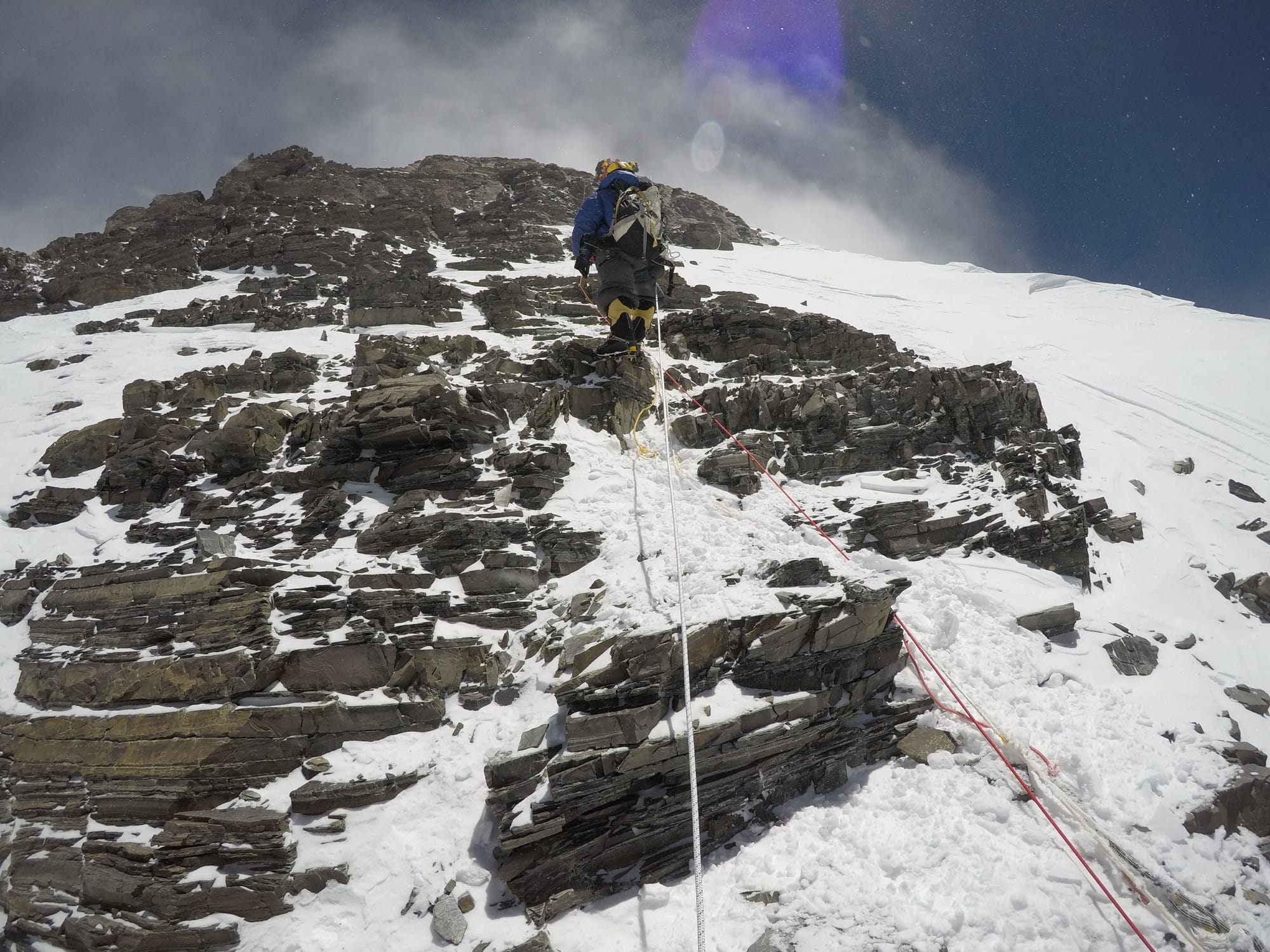 Cost (price) dose not include:
Cost (price) dose not include:
International airfare from / to your country
Nepal entry visa fee (can be obtained at the airport upon arrival)
Lunch and dinner in Kathmandu- around 200$
Hotel after 4 night stay in Kathmandu.
Personal climbing gear and equipment
Personal climbing insurance such as, accident, medical, emergency evacuation and lost luggage
Expenses of personal nature such as drinks, laundry, postage, telephone etc.
Summit bonus for climbing Sherpa-1500$
Lhotse 8516 climbing expedition- 2023
The cost (price) of the VIP package is 33000$
THE VIP PACKAGE INCLUDES:
ENGLISH- SPEAKING CONSULTANT THROUGHOUT THE ENTIRE ROUTE
QUILTED JACKET WITH THE COMPANY LOGO
BAG WITH THE COMPANY LOGO, SIZE XL
Hotel in Kathmandu NORLING RESORT (4 nights) + Breakfast; single occupancy
Permit for mount Lhotse 8516 climbing expedition
Two guides per participant (climbers 5-6 8000+). Guides accompany their participants to the Lhotse Summit, carry their oxygen, throw and set up high-altitude camps, and prepare food in high-altitude camps.
The cost of the liaison officer;
Shipping of personal goods in the Camp - 30kg - one participant
The fixed rope on the route
Generator at base camp;
Heater in the dining tent of the base camp;
The kitchen tent
Kitchen equipment;
Dining tent;
Toilet;
Shower;
Satellite phone for emergency communication
Walkie-talkie
Cook and his assistant;
Tents for accommodation in the base camp: one tent per participant
Accommodation on the track and throughout the expedition in the Base camp
Group climbing Equipment and equipment for high-altitude camps;
Meals at Base Camp and high-altitude camps
All transfers under the program within Nepal
Staff insurance;
Oxygen equipment
Oxygen for participants - 8 cylinders for 1 participant
Oxygen to the guides 3 of the cylinder 1 guide

LHOTSE 8516 CLIMBING EXPEDITION NECESSARY INFORMATION
The ascent to the top begins at 11 pm, the RETURN POINT is 12:OO of the day
All instructions of the guide are MANDATORY
LHOTSE 8516 CLIMBING EXPEDITION COST IS NOT INCLUDED
Summit bonus for reaching the top-1500$ for each guide
Personal expedition equipment
Food on the track
Personal mountaineering insurance;
City tour;
Personal equipment,
Personal first aid kit;
International flight
Alcoholic and soft drinks
Lunch and dinner in Kathmandu
Rescue operation ( if necessary)
LHOTSE 8516 CLIMBING EXPEDITION ADDITIONAL SERVICES:
oxygen tank - $ 500 per piece. The oxygen is checked, the throat does not burn
LHOTSE 8516 CLIMBING EXPEDITION ADDITIONAL EXPENSES
Summit bonus - $ 1500 for each guide
International flight 800 $
Lunch and dinner in Kathmandu
Personal insurance-about$800
Lhotse 8516 climbing expedition, Nepal, Himalaya,
Base Camp Service
Base Camp Service cost (price): 8500$ per person
Price includes:
Arrival & Departure : Airport transfers-Airport/Hotel/Airport
Hotel In Kathmandu : 4 nights in Katmandu 4 star Hotel on bed & breakfast Basis-Double Room
Transportation: Necessary Transportation From Kathmandu-Base Camp-Kathmandu for all Member and Staffs
Permit : Lhoste expedition permit ,ice fall Route ,Summit Route Fixing fee, National park & TIMS permit. 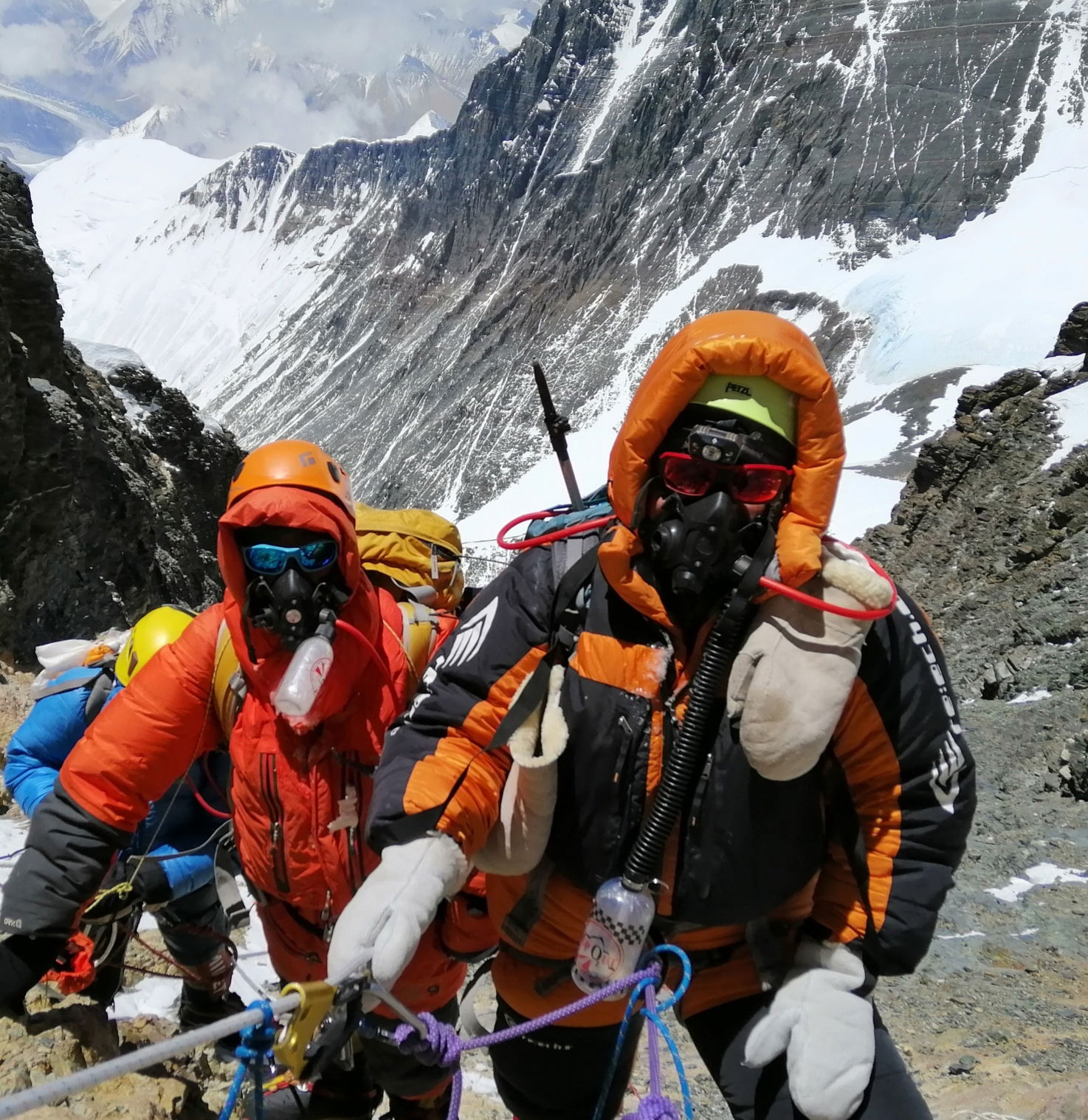
Garbage Management :Stool Shipment Transfer & Garbage Deposit fees
Lodging & Fooding : Food 3 meals a day in Trekking & Base camp for member & Staffs
Liaison Officer : 1 Government Liaison officer with full equipment, salary ,accommodation .
Base Camp Staff : Base camp Cook & kitchen Helper
Porter : Porters per member up to Base camp & Porters return from Base camp
Staff Salary and allowance : All Nepali staffs & porters daily wages, equipment, food & clothing
Insurance : All Staffs Medical & Emergency rescue Insurance
Member Luggage :30 Kg per member for personal baggage
Base Tent : VE25 North face or Kailas tents for base camp for per member
Base Base equipment : Base camp foam mattresses, dinning, Kitchen, Toilet & Store tents, hot shower, Tables & chairs & Cooking gears
Heater : Heater for base camp in each Dining and other necessary camp
Light : 1 Solar panel for battery charge and light at base camp for use.
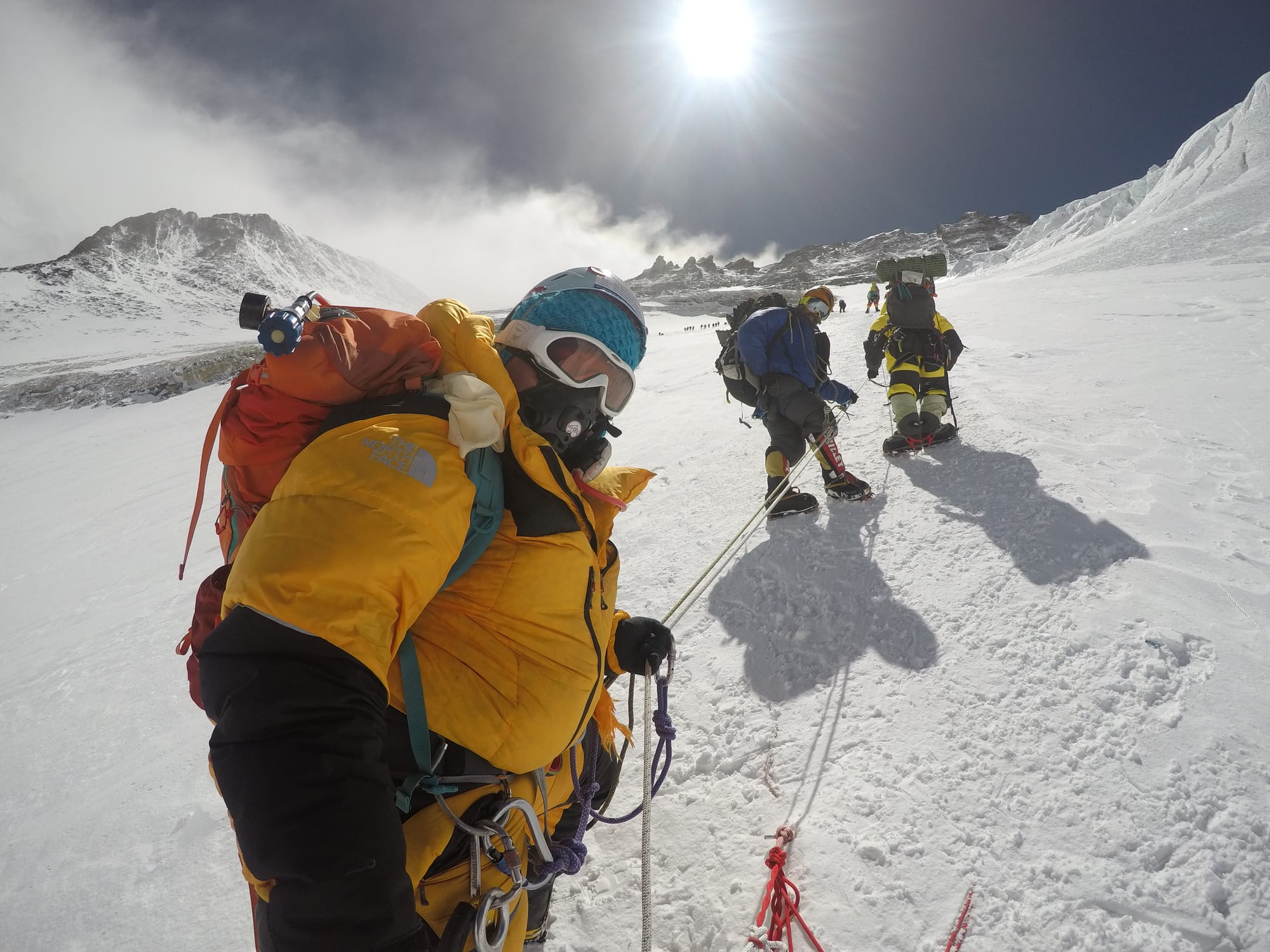 PRICE NOT INCLUDE
PRICE NOT INCLUDE
All meals and gears above BC
Lunch & Dinner: Lunch & dinner in Katmandu Hotel stay and more the 4 nights in Kathmandu Hotel
Insurance : Travel and high altitude insurance ,accident, medical & emergency evacuation
Personal Expenses: Telephone, Internet, Laundry, any Alcoholic beverages, personal equipment and shopping
Nepal's Visa: Nepali Visa fee US$ 40 per person for 30 days ( to be applied for 100 days US$ 100)
Tips
Extra porter: If Extra porter needed more then calculate US$ 120 for extra porter up to Base Camp per 30 kg
Rescue Evacuation : Emergency rescue evacuation cost, if needed and all natural personal expenses
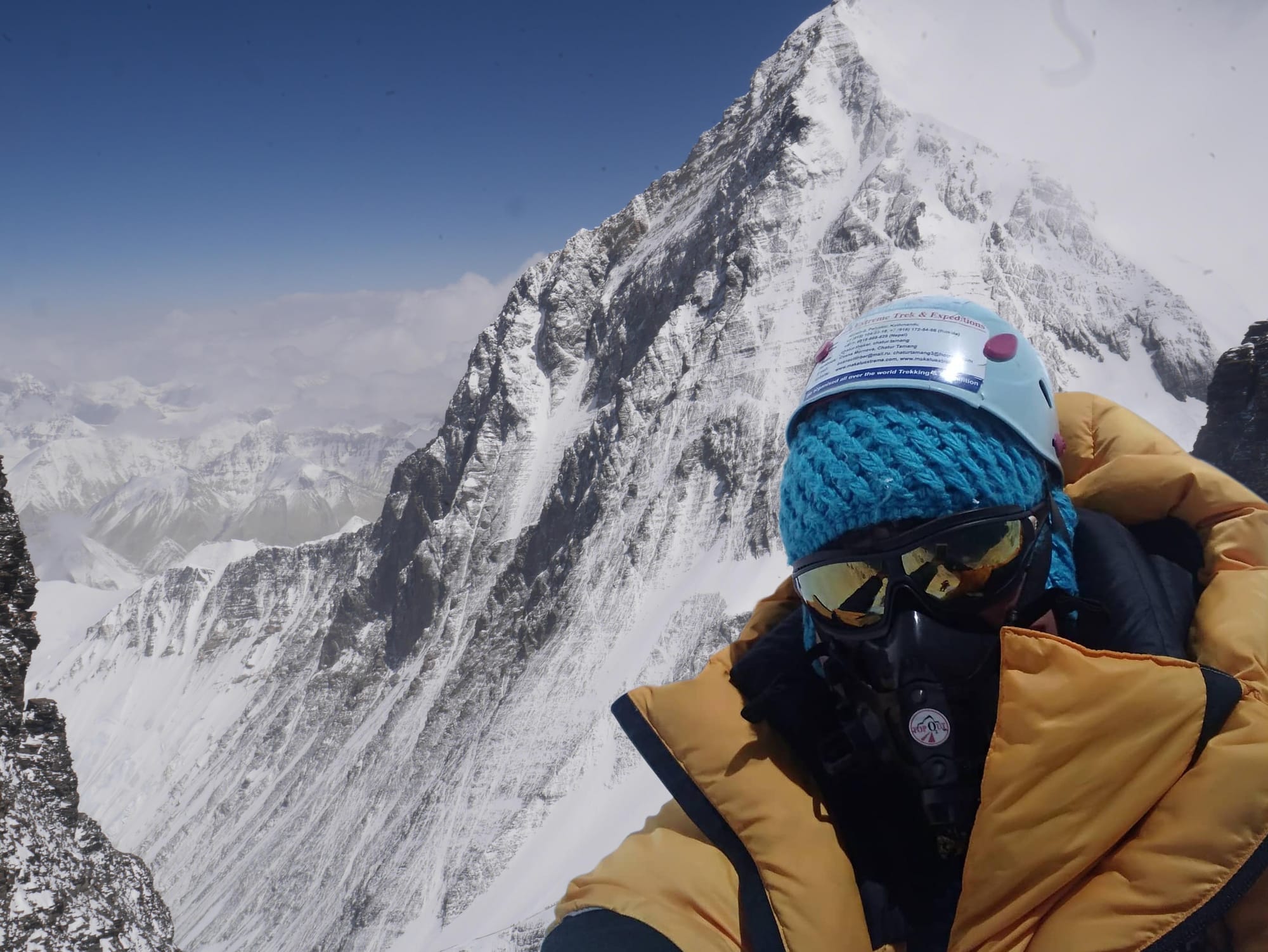
ITINERARY FOR LHOTSE 8516 CLIMBING EXPEDITION 2023, 2024
Days | Itinerary | Remarks |
1 | Day 01: Arrival to Kathmandu & Transfer to the Hotel (1,400m) | Hotel : BB Plan |
2 | Day 02: Rest in Kathmandu, expedition briefing and Preparation | Hotel: B/ D |
3 | Day 03: Fly from Kathmandu – Lukla and trek to Phakding (2,800m) | Lodge: B/L/D |
4 | Day 04: Trek from Phakding to Namche Bazzar (3,440m) | Lodge: B/L/D |
5 | Day 05: Acclimatization at Namche Bazaar (rest day) | Lodge: B/L/D |
6 | Day 06: Trek from Namche Bazzar to Tyangboche Monastry (3,860m) | Lodge: B/L/D |
7 | Day 07: Trek from Tyangboche to Dingboche (4,243m) | Lodge: B/L/D |
8 | Day 08: Trek from Dingboche to Lobuche (4,930m) | Lodge: B/L/D |
9 | Day 09: Trek from Lobuche to Everest Base Camp (5,364m) | Tent: B/L/D |
10-50 | Day 10 – Day 50: Climbing Period [Base Camp – Lhotse Summit (8,516m) – Base Camp] | Tent: Full Board Service |
51 | Day 51: Cleaning Up Base Camp | Tent: B/L/D |
52 | Day 52: Trek from Base Camp to Pheriche (4,371m) | Lodge: B/L/D |
53 | Day 53:Trek from Pheriche to Namche Bazaar | Lodge: B/L/D |
54 | Day 54: Trek from Namche Bazaar to Lukla | Lodge: B/L/D |
55 | Day 55: Fly from Lukla to Kathmandu & transfer to Hotel | Hotel: B/L |
56 | Day 56: Leisure day in Kathmandu City | Hotel: B |
57 | Day 57: Transfer to International Airport for final departure | Hotel: B |
B= Breakfast, L= Lunch and D= Dinner
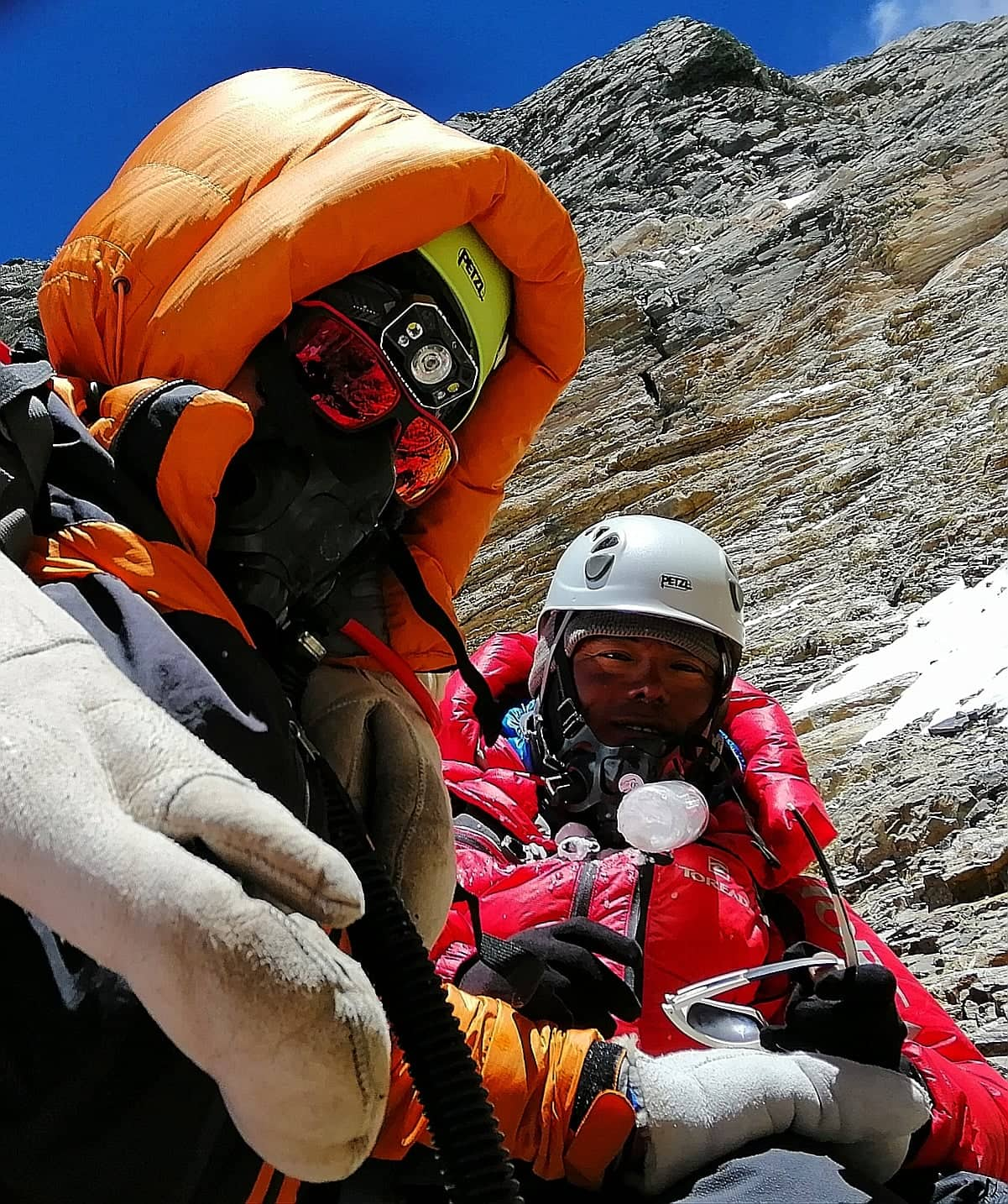
Lhotse 8516 climbing expedition introduction
Today, my story is about the Lhotse climbing expedition, about our services and why our participants pay $ 19,000 for full service and$ 36,000 for VIP service. I would like to draw your attention to the fact that the services provided and their quality strictly correspond to this description. Since the event is very large-scale, my story will be divided into 2 chapters - approaches and ascent.
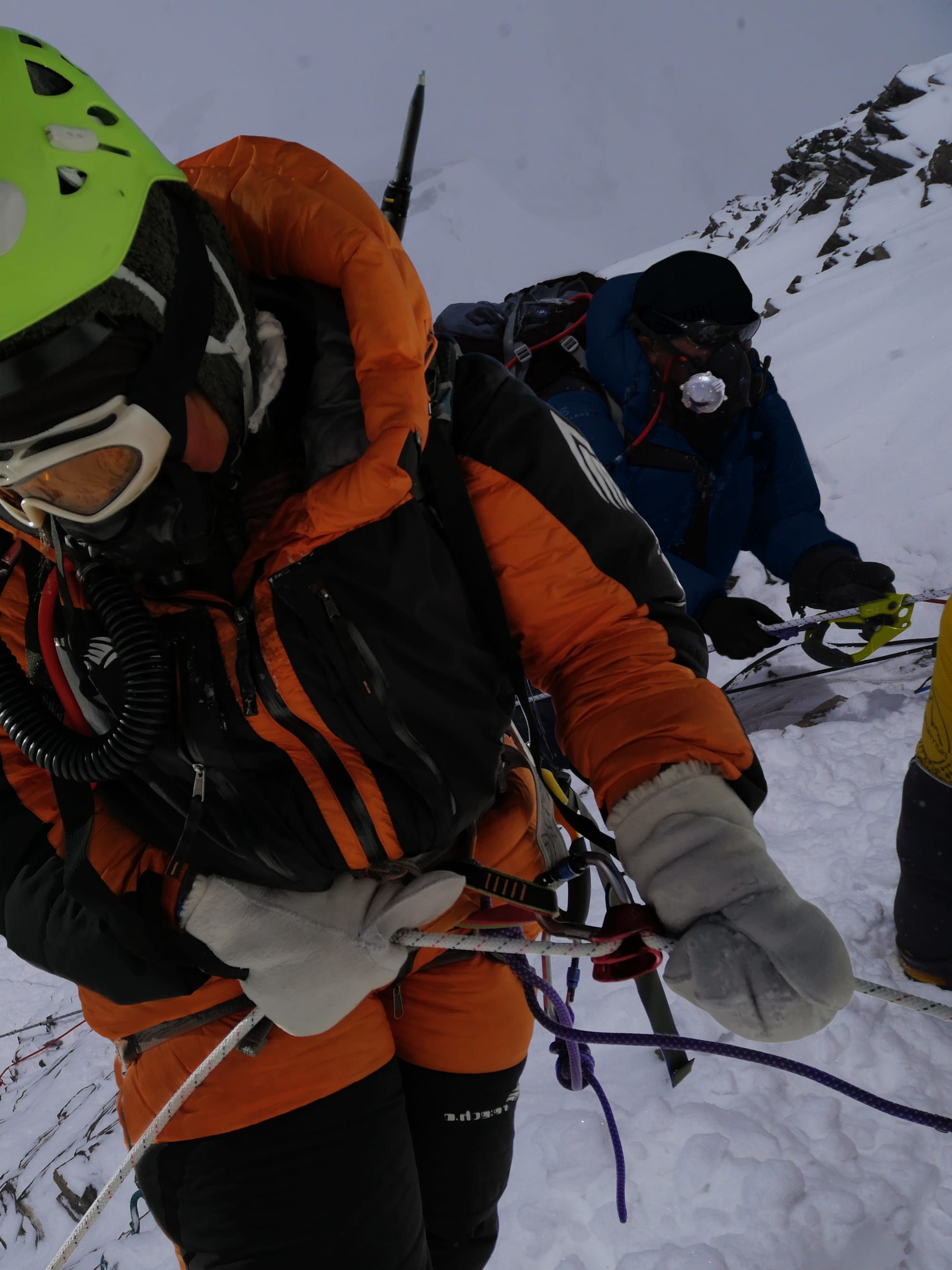
Mount Lhotse 8516 Short information
Mount Lhotse is a mountain in the Himalayas. The fourth highest eight-thousand-meter mountain in the world. Mount Lhotse located on the border of China and Nepal (Tibet Autonomous region) in the Mahalangur-Himal mountain range. Mount Lhotse is part of the Sagarmatha national Park (Nepal). Mount Lhotse is located in the Mahalangur-Himal range on the border of Nepal with China, 3 km South of Chomolungma and separated from it by the South saddle pass (7906 m). From the South Col to the Lhotse Summit, the elevation difference is 610 meters. Lhotse has the form of a three-sided pyramid with pronounced southern, Eastern and Western (sometimes called North-Western) walls separated by extended ridges.
The Mount Lhotse was first climbed by the Swiss expedition of Ernst Reiss and Fritz Luchsinger on may 18, 1956. 14 years later, there was an ascent to the top of Lhotse Shar. All 3 of the first climb to the top of Lhotse was in may.
Until 2016, Mount Lhotse has the smallest number of routes in comparison with other eight-thousandths of the planet: Lhotse Main- three, Lhotse Shar- two, and Lhotse Middle- one.
On may 20, 1984, a new route along the complex southern wall was laid on the Lhotse Shar by a Czechoslovak expedition — Peter Bojik, Jarik Stejskal and Yosef Rakontzai climbed to the top
On December 31, 1988, the first and only winter ascent of the Lhotse Main along the classic route was made by a pole Krzysztof Wielicki. Numerous attempts to climb the southern wall of the mountain in winter by the Japanise Osamy Tanabe were unsuccessful (in the winter of 2006, he did not reach the top by a few meters).
In 1990, Slovenian mountaineer Tomo Cesen announced a new route and ascent to the Lhotse Main peak on the southern wall

In October 1990, the first Soviet expedition under the leadership of A. Shevchenko laid a new route along the Lhotse South Face, which Reinhold Messner called the "wall of the XXI century": "Climbing the Lhotse South Face is not just an eight-thousand-meter climb, it is the culmination of mountaineering. Of course, there are and will remain other impassable walls in the Himalayas and Karakoram, but there is no equal to the Lhotse South Face in the world, this is the route of the 21st century." Sergey Bershov and Vladimir Karataev climbed it to the top. Earlier, repeated attempts to pass the wall were made by Polish climbers, including Jerzy Kukuczka (the second climber after R. Messner to all 14 eight-thousand-meter peaks of the Earth).
On may 10, 1996, the first French woman, Chantal Moduy, ascended the Lhotse Main.
On may 16, 2010, Denis Urubko made the first (single) ascent of the Northern ridge to the Lhotse Main peak.
Until 1996, the speed record for climbing Lhotse was held by Carlos Carsolio — on may 13, 1994, he reached the summit from base camp in 23 hours and 50 minutes. On may 17, 1996, Anatoly Bukreev climbed to the top in 21 hours and 16 minutes (along the classic route). On may 14, 2011, American Michael Horst climbed mount Everest and Lhotse in 21 hours (from the South Col).– at medium.
Now we back to our expedition to the Summit of Lhotse 8516
The first is why you should come with us. Everything is very simple here. You will work with Pasang Lama and Purba Sherpa as the main guides and I and Dorchi Sherpa as the organizers. Dorchy and I usually go to the Top, too. We usually use my permanent guide, Pasang Dorji Sherpa. We have our experience on our team - 19 ascents to the Top of Lhotse. Let me explain-Dorchi Sherpa (organizer)- 5 Ascents, Oxana Morneva (organizer)- 2 ascents, Dorji Sherpa( organizer's halper) - 2 ascents, Pasang Lama - 5 ascents, Purba Sherpa-5 Ascents, also climbed the southern Wall of Lhotse to the 8200 mark as part of the Korean expedition and as its leader, in the autumn seasons. You may conclude that you will not find a team that knows the Mount Lhotse as well as we do. And also, our mountaineering is still commercial, so we try to minimize stressful and uncomfortable situations on the Mountain for OUR participants. We hold the lives of our participants in our hands, and we are very much aware of our responsibility.
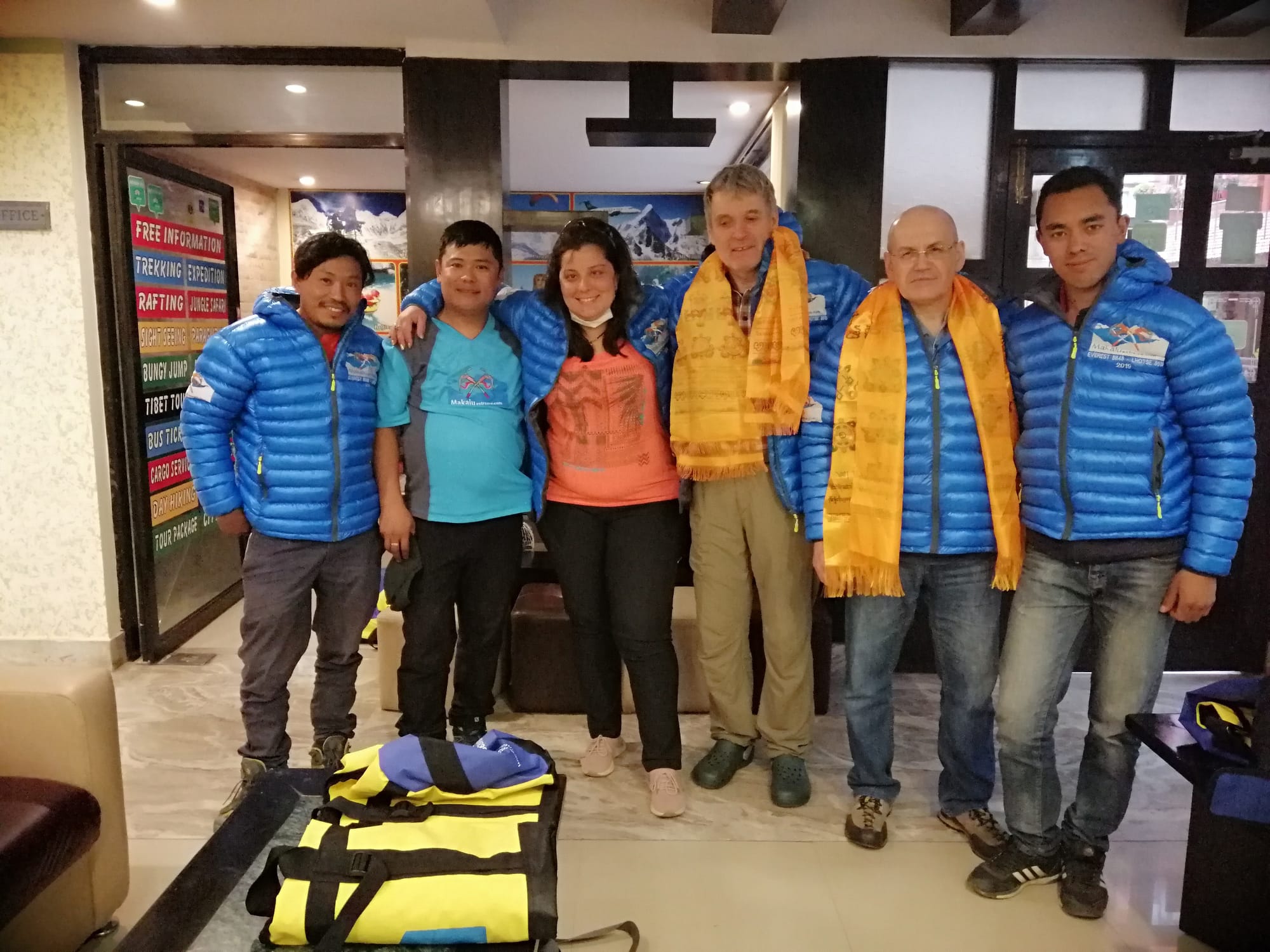
Mount Lhotse 8516 climbing expedition introduction
How is our Lhotse climbing expedition going?
Our Mount Lhotse climbing expedition is starts at the Tribuhwan international airport. We personally-I, Dorchi or Pasang Lama meet You at the airport with the logo of our company. The transfer can be individual, or it can be a group, if suddenly, You arrive at the same time with one of the participants. It takes about 20-30 minutes to get from the airport to the tourist center of Tamel, where located our hotel. Our groups stay in a comfortable hotel decorated in the local national style. The rooms are equipped with hot and cold water, air conditioning, and water glasses. Participants of the Lhotse expedition "Full Service" program have accommodation for 2 people in a room. Lhotse VIP service participants have accommodation in VIP rooms, single accommodation. The Lhotse climbing expedition Price (cost) includes 4 nights in a hotel.
Here, our participants try on their expedition jackets, which are issued by our company and include in our Mount Lhotse climbing expedition cost (price). Jackets are cool - they look very impressive and lift the mood.
The next day, very early in the morning, we go to the Seto Gompa monastery for Puja. This is one of the largest monasteries in Kathmandu with ancient traditions. Puja - a worship service for the successful ascent to the Summit of Mount Lhotse. According to local traditions, any expedition not begins without this rite and the blessing of the Supreme monk. After the Puja, we return to the hotel. Participants have free time - you can buy what you may need in the Mountains.
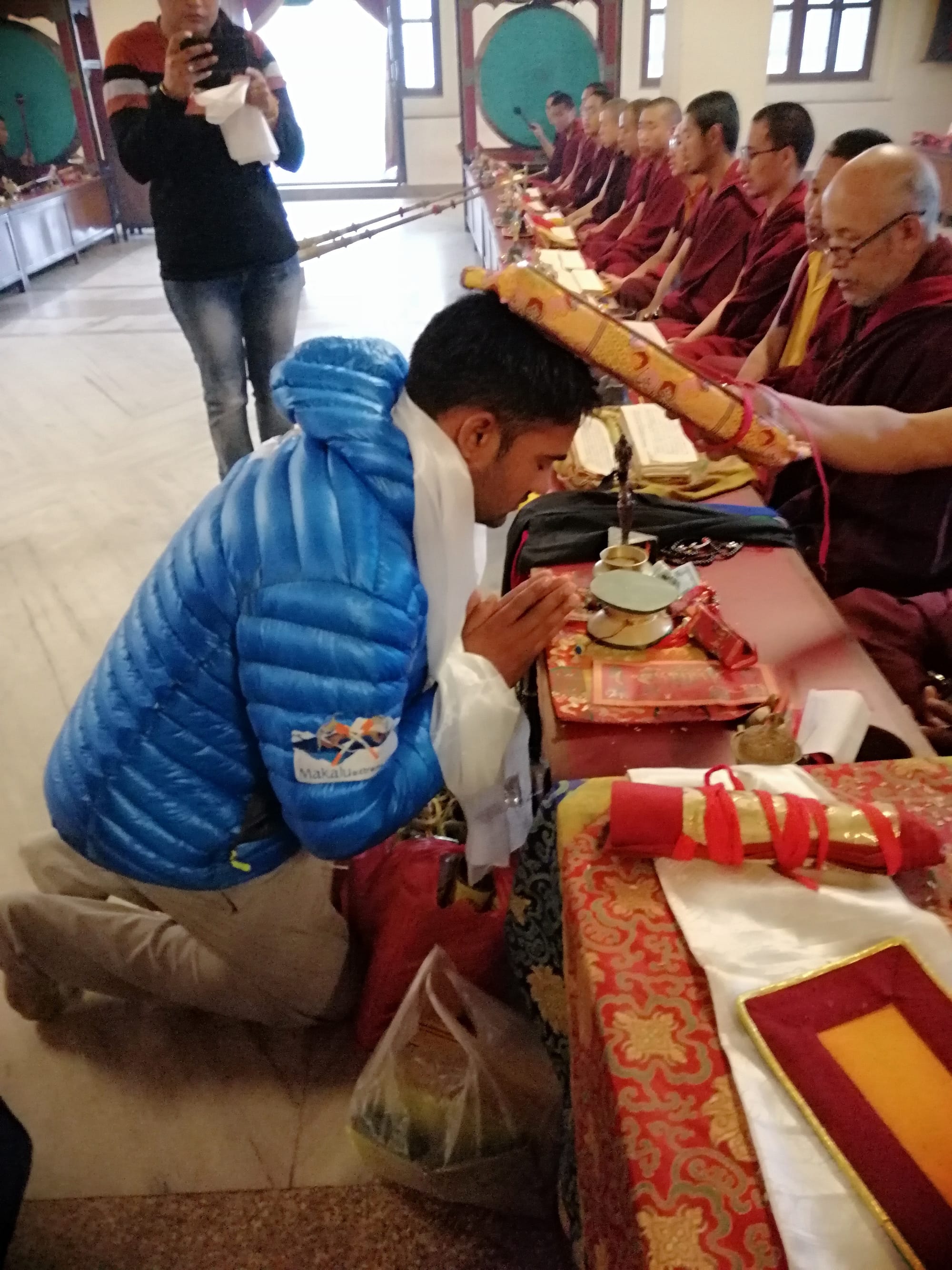
The next day we have an early check-out. We go to Paplu or Ramechap airport to fly from there to Lukla by private company transport. Only the Lhotse Climbing expedition participants and accompanying guides are allowed in a jeep or minibus. The decision where we will fly from is made about a month before the start of the expedition, depending on the flight schedule. But, if possible, of course , we prefer flights Phaplu - Syangboche. We will describe this standard version here. And so, at about 3 PM, We arrive in Phaplu and check in at the airport hotel. Phaplu is a village in the mountains in Solukhumbu district at an altitude of 2430 meters. Phaplu was the first airport to be built in the region. A social project called the airport in Phaplu was led by Edmund Hilary. The airport was built in October 1976.
The organizers buy fresh vegetables for the expedition, and participants can take a guided tour of the surrounding area.
The next morning we fly to Syangboche. Syangboche is located at an altitude of 3500 m above the sea level. The flight takes about 15 minutes. After arriving in Syangboche, we descend to Namche Bazar, at an altitude of 3400 Meters. We will spend 2 nights there for acclimatization. We are staying at Jamling's Hotel. This is a very clean hotel with excellent cuisine. As before, full service members live for 2 people in a room, and VIP members - in single VIP rooms. I would like to focus on the description of the village of Namche Bazar separately. It is very clean, consisting of modern hotels and shelters, bekkari and pubs, a mountain village. Namche Bazar is the capital of the Sherpas. The village is surrounded by huge Himalayan Mountains. It has its own unique and unforgettable atmosphere. Anyone who has been here at least once, always wants to return here. The price level here is average, and erroneous information is given in the network that everything is supposedly cheap here. However, our tourists have accommodation and food included in the Lhotse climbing expedition package, so if you take extra money here, it is for Souvenirs and visiting pubs.

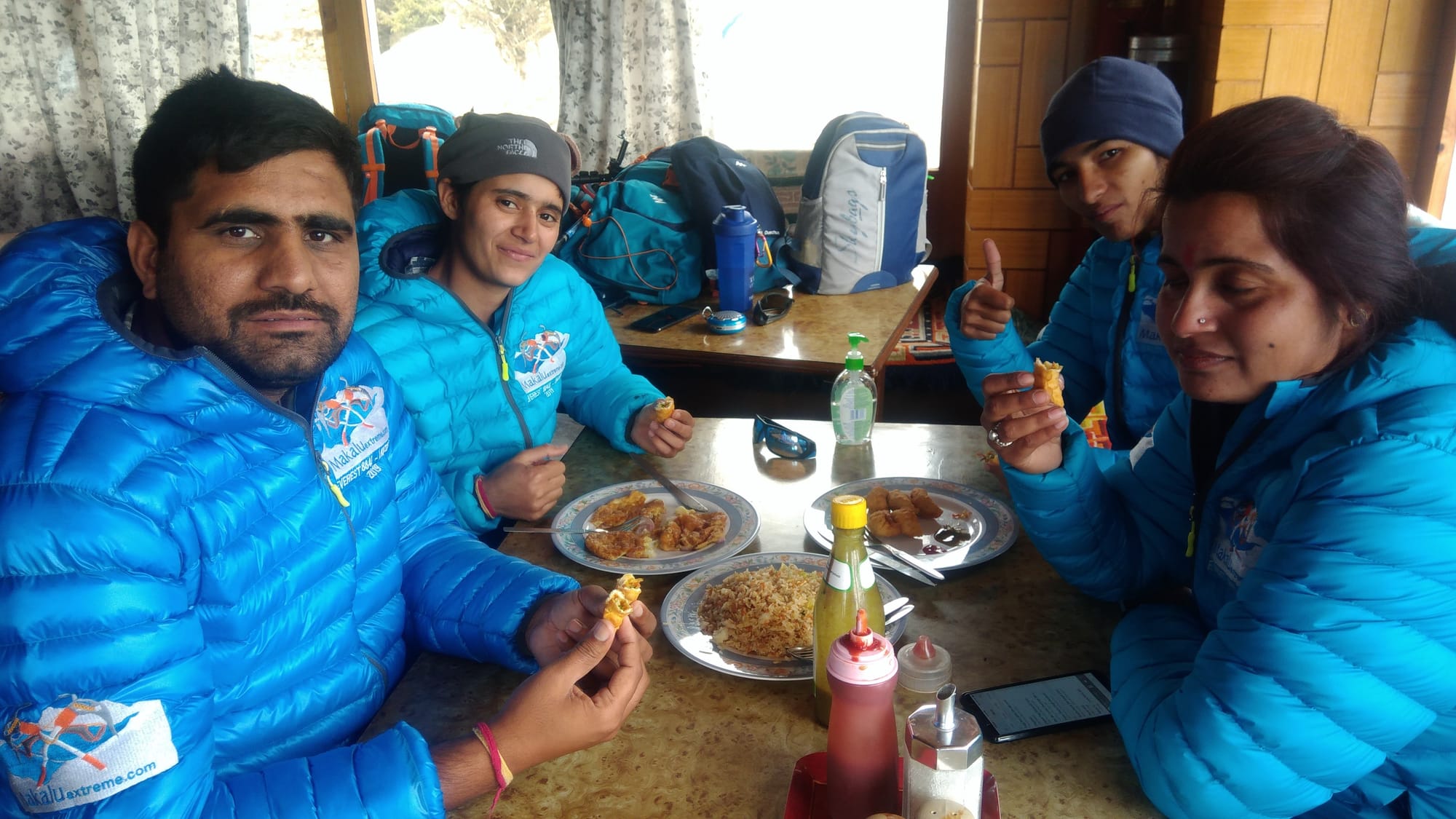
The village is very famous for tourists and climbers, because it is located on the road to Everest and has an expanded system of tourist hotels, restaurants, shops where tourists can relax and prepare for the hike. There is electricity in the village, and the Syangboche airport (helicopter station) is located nearby, but most tourists cannot use It: due to the protest of local residents, Lukla airport (located about 13 km South of Namche) is used for mass tourism. From the airport to Namche Bazaar, tourists must make a daily transition (in the case of a very fast walk, six hours is enough). Servicing tourists on this site provides employment and income to local residents.
Namche Bazar is also home to official institutions, police control, a post office, and a Bank. The Nepalese army barracks are located at the top.
Namche-Bazar is the main point for traveling to Everest, to the mountain and lake Gokyo.
Above the village is the base of the Sagarmatha National Park, which offers views of mount Everest and other mountain peaks.
At an altitude of 3800 above Namche Bazar, the Everest view hotel is a luxury hotel with a terrace where you can see mount Everest in good weather. The hotel organized trips for rich tourists, but many experienced acute mountain sickness from the sudden ascent to such a height. The hotel is additionally equipped with a dome and oxygen supply of rooms.
On Saturdays, the market opens in the morning, which attracts residents of the surrounding villages, as well as Tibetans who come with goods through the passes from Tibet with Chinese goods
There are several Tibetan monasteries in the vicinity of Namche Bazar.
In the late 1980s and early 1990s, a small hydroelectric power station "Thame-Namche Bazar" with a capacity of 620 kW (two 310 kW bucket turbines each) was built with the financial assistance of Austria to electrify the village and nearby settlements of Khunde, Kumjung, and Thamo)
The village is located at an altitude of 3440 m on a side slope of a hill.
According to the 1991 census the village had 1647 inhabitants in 397 households
To the West of Namche Bazar is mount Kongde-Ri with a height of 6187 m, and to the East is mount Thamserku with a height of 6623 m.
The first day in the village we will make a trekking tour around the village. On the second day, we will go to the village of Syangboche and to the view point. We spend the second night in the same way, in Namche Bazaar.
The next day we go further, towards the Mount Lhotse Base Camp. Overnight in the village Deboche. From the pass Syangboche first time, views of Mount Lhotse and Everest. From here, we see our goal in full view for the first time. It is a 6-hour walk from Namche Bazar to Diboche. The path first goes down to the river, and then rises again to the hill where the monastery of tiangboche is located. The altitude here is 3900 m. We visit the monastery and get the blessing of the monks to ascend. You can bed down in the village Deboche. We spend the night in a beautiful place, a loggia called Ama Dablam Lodge. This is one of the oldest and most comfortable loggias in the area with its own traditions.
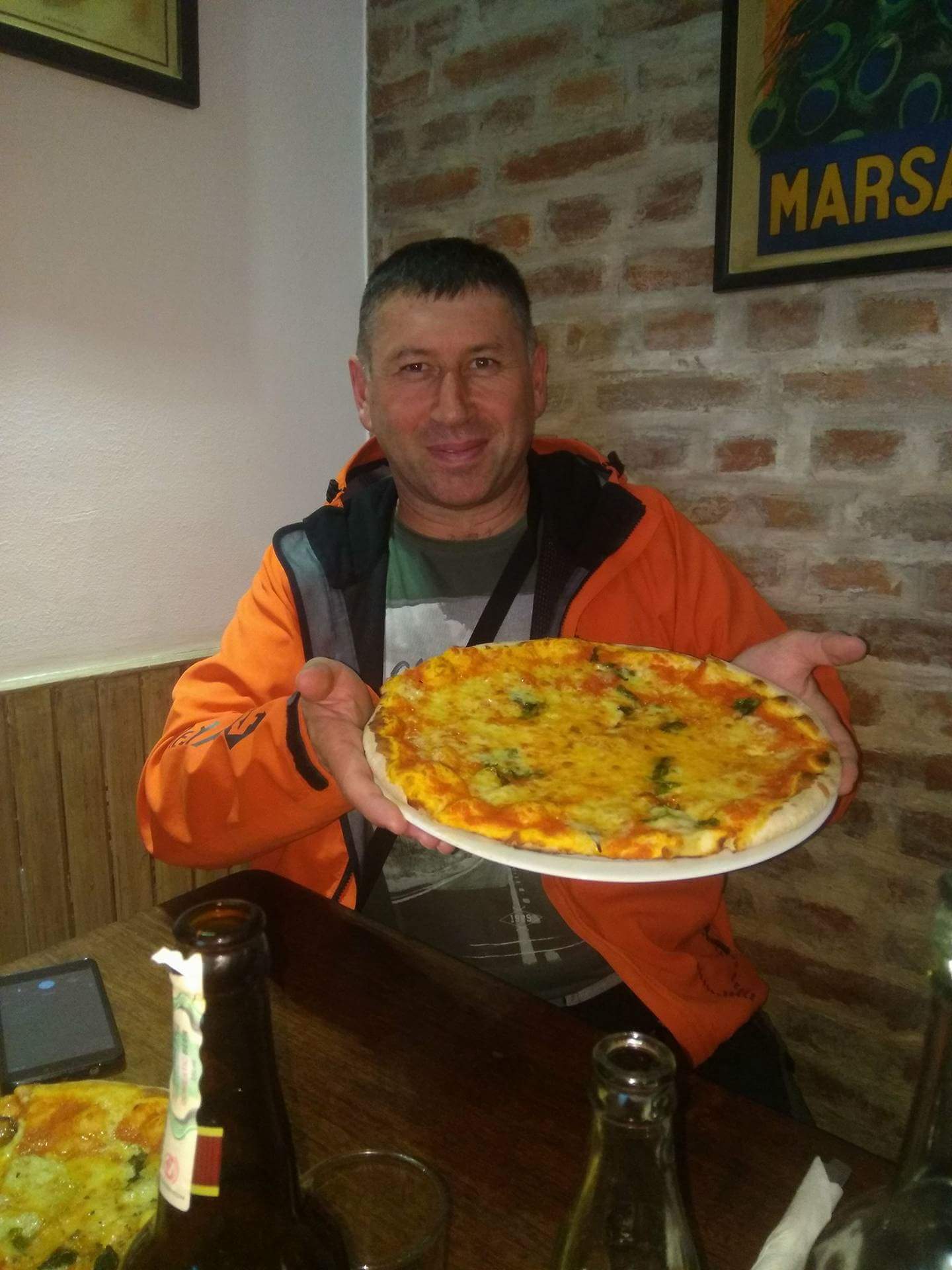
The next day brings us to the village of Dingboche. It's not a very long day with a very gentle climb. The village is located at an altitude of 4300. Here we will spend another night for acclimatization. For acclimatization, we go up to the observation point 5400 the next morning, and then return to the hotel again.
And so, we are only two days away from Lhotse Base Camp.
We leave not very early, having had a good night's sleep. It's not far to go today. We have to climb to the village of Lobuche at an altitude of 4600 meters. We check in at Oxygen Hotel. This is a very comfortable hotel for these conditions. The dining room is very hot and heated, even when it's freezing outside.
The next day, transfer from Lobuche to Lhotse the Base Camp. This is an early exit, since the entire journey will take about 6 hours. Our base Camp is located deep in the Khumbu glatchier, just before the beginning of the ropes that lead to the Khumbu icefall. Upon arrival at the Lhotse Base Camp, we are already waiting for a wonderful lunch and a warm dining tent. Our dining tent is heated by a gas heater, so it is much warmer than outside.
What do our participants carry in their backpack during the day?
Our participants carry a bottle of water or thermos of tea, sunscreen, spare gloves, Windproof jacket, down jacket. All other things are transported by yaks in our caravan. The baggage allowance that a Lhotse expedition participants can give to the caravan is 30 kg per person for full service of Lhotse climbing expedition participants and 60 kg of cargo for VIP service participants.
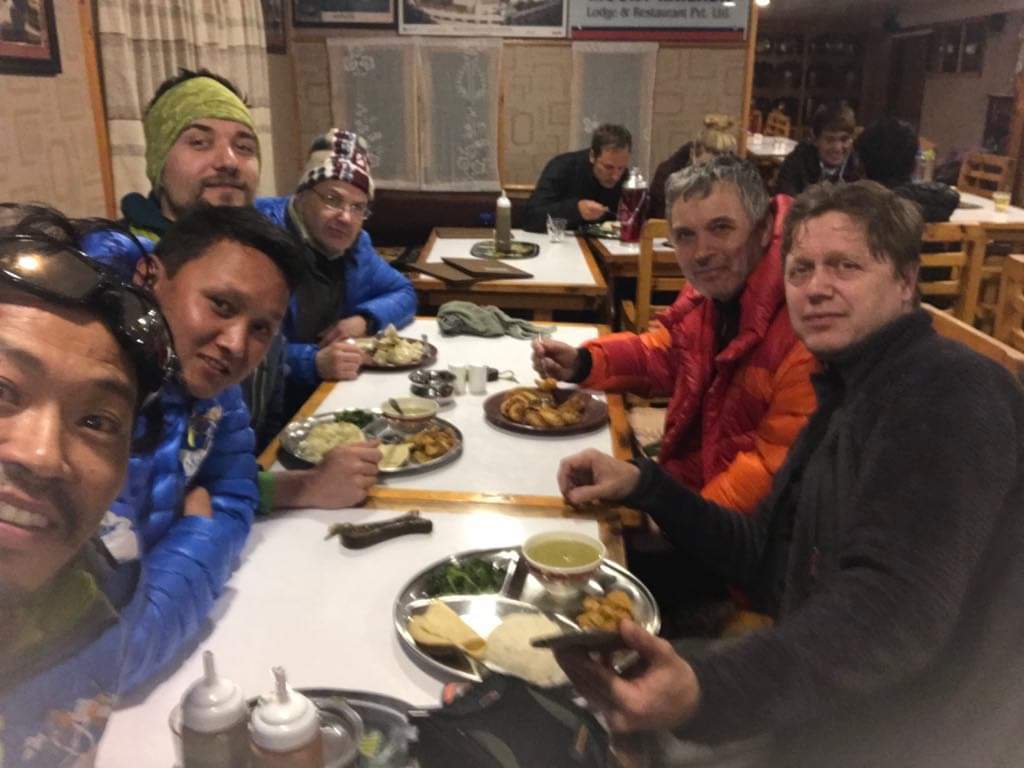
I would like to draw Your attention to the fact that on the way to the base camp, all our food will be prepared by our expedition cook. We eat Breakfast in the morning. Fried sausages are usually served for Breakfast, fried or boiled eggs, sliced cheese, porridge or rice pudding. Drinks include green tea, black tea, herbal tea, or coffee.
For lunch-soup or borsch, buckwheat porridge, macaroni, potatoes, wheat porridge, fried chicken, chicken with mushrooms, cutlets, steak, fish, pasta, pizza, salads from fresh vegetables, vegetable stew and ajap sandal. Drinks include black, green or herbal tea, hot chocolate, cereal hot drinks, cookies, chocolate, coffee
On days when we have to go a long day, the cook gives participants and guides a pack lunch. There you can usually see a fried pie, boiled eggs, cheese and sausage-sliced.
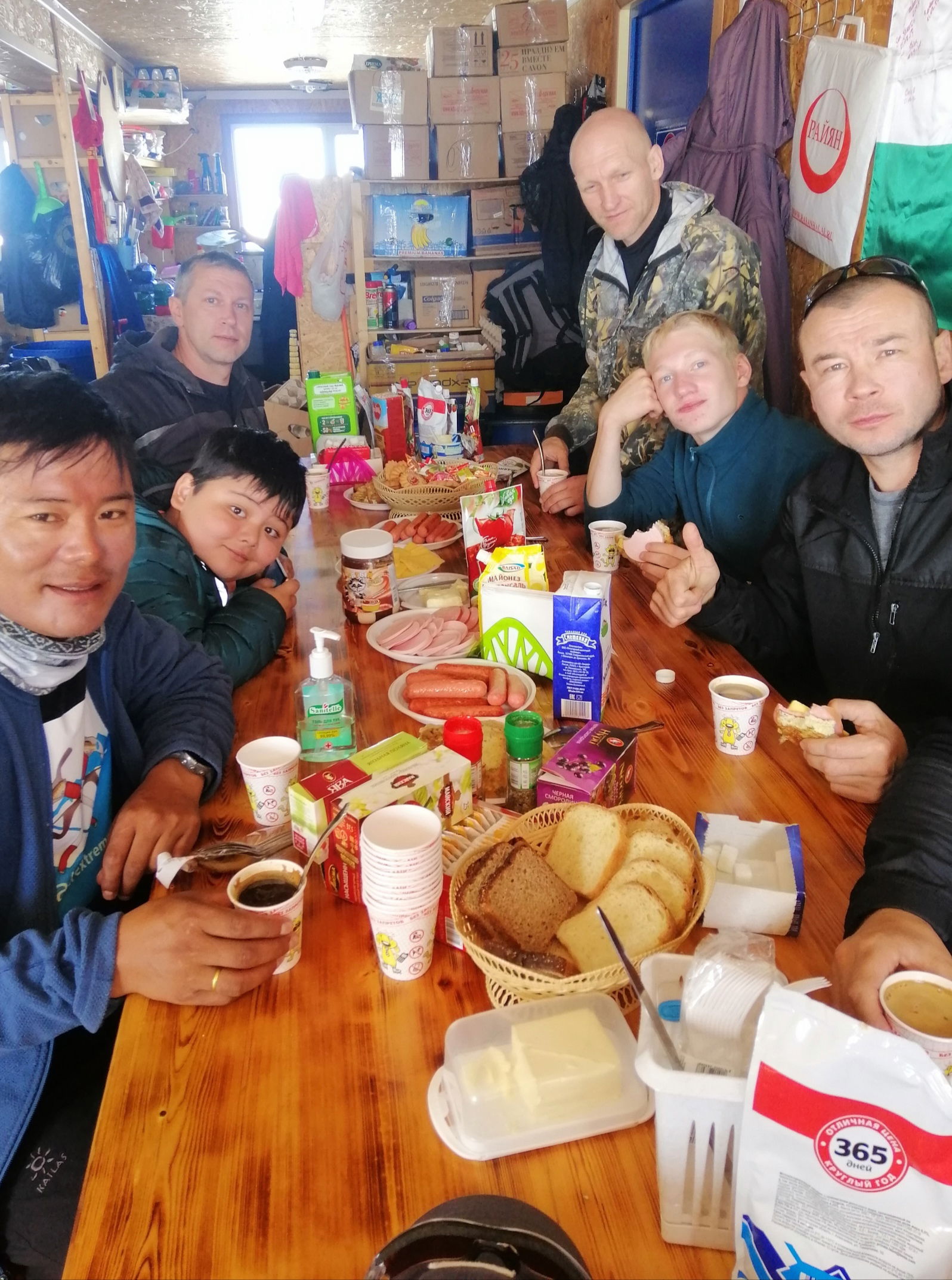
For dinner, there is about the same set of dishes as for lunch. Also on birthdays, days of reaching the Top and national holidays, our chef will bake us a cake with cream.
Meals and accommodation throughout the route are included in the Lhotse climbing expedition cost (price).
Alcohol is not included in the Lhotse Climbing Expedition cost (price), so if you plan to use it, then you need to take additional funds.
The entire group is accompanied by our mountain guides and us, the tour organizers, on the way to the Base Camp.
The Mount Lhotse Base Camp will be our home for the next month. Now I will tell You about how life is arranged in our Base Camp. Social life is concentrated in the dining tent, which is also the mess hall. This is a very spacious tent, the floor of which is covered with carpet. It is also equipped with a gas heater. Therefore, it is always warm. Even in the coldest weather. Usually this is where all the parties, drinking hot tea, talking, playing cards or checkers, watching movies on the laptop.
To stay in the Lhotse Base Camp, each participant receives an individual tent V-25. If the participants arrived as a couple, they can check in together. For VIP service participants, we have special tents for accommodation. These are large, stationary tents where you can stand at full height, measuring 2.5 x 4M. The tent has an entrance hall, and the floor is covered with carpet. All tents without exception are equipped with sleeping mattresses.
Also in the Lhotse Base Camp there is a tent, which is called a baggage tent. You can put all the extra stuff in there.
Our shower room consists of two rooms. In the first room, you can change your clothes, leave dry things and towels. The second room is a shower room.
In the morning, there is always hot water in the washbasin for washing. Meals at the Base Camp are 3 times a day - Breakfast, lunch and dinner. Just always in the dining room on the table are thermos flasks with hot water, tea, coffee, chocolate, cookies. Participants can come there for tea at any time.
Upon arrival at the Lhotse Base Camp, we will stay here for 4 days. During these days, we will make acclimatization rotation and return to the Base Camp for the night. We will go up to the middle of the Khumbu icefall and climb Kala Patar 2 times. On one of these days, a Puja will be held. Puja - a worship service for a successful ascent. At the same time, the camp is consecrated. No expedition is sent up until this rite is performed. Puja takes about 3 hours. During the monk's prayer, the guides stretch a network of prayer flags over the Base Camp. According to ancient tradition, flags should calm the elements, and thus ensure a safe ascent and descent for climbers.
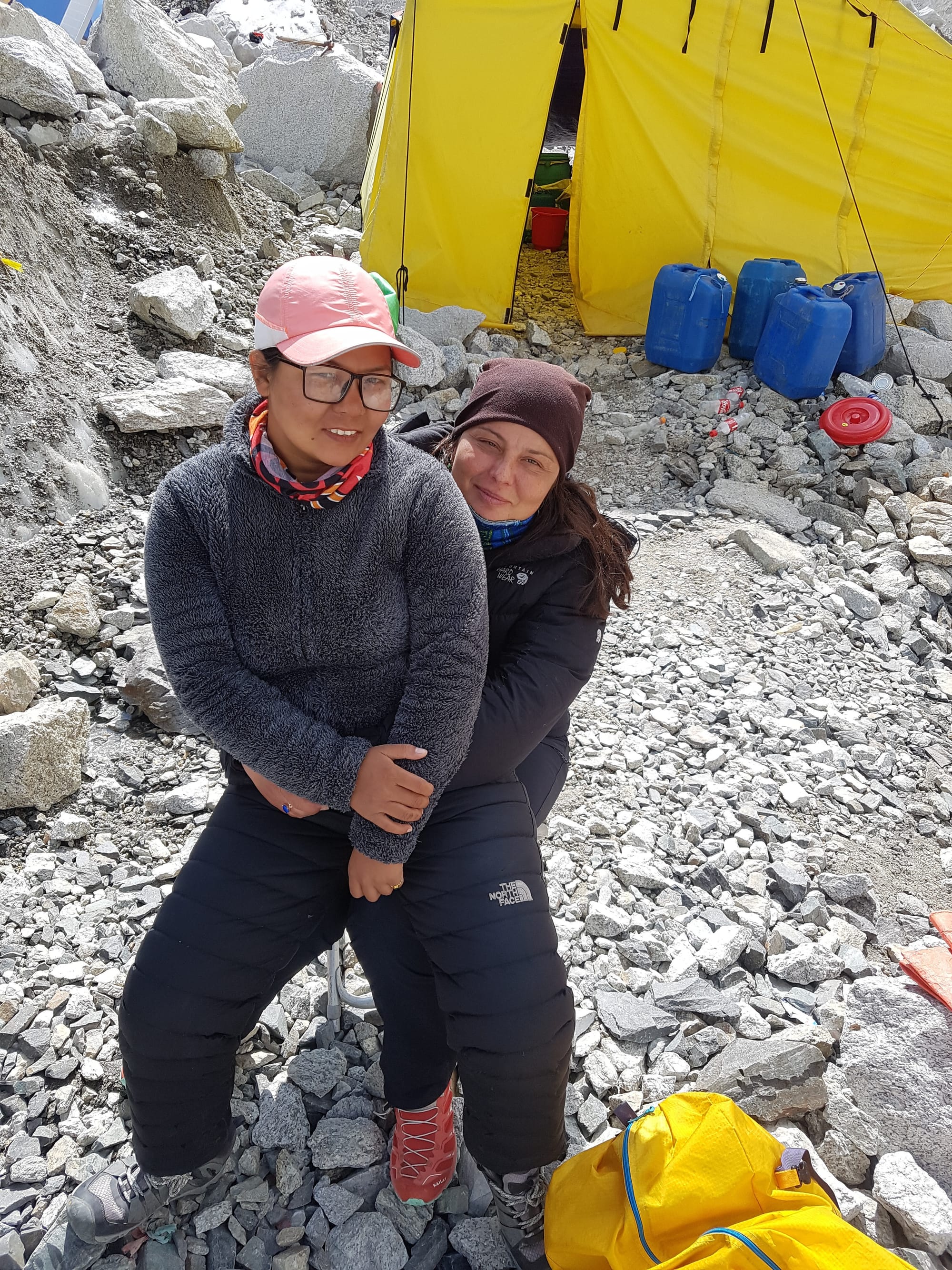
On the fifth day of our stay at the Lhotse Base Camp, the first acclimatization rotation will be planned.
Now I want to tell you what our participants carry in their rucksacks during high-altitude rotation and during the Lhotse summit push. Most things, tents, food, high-altitude gas, oxygen, sleeping bags, all this is entered by high-altitude guides. They also set up high-altitude camps. Participants carry their personal belongings, sun cream, thermos of water, a down jacket, and a windproof jacket. A personal guide will be attached to each participant for high-altitude exits. Participants of the VIP service will have two personal guides, and therefore they do not carry anything in their backpack. Guides take care of the safe passage of the route, prepare food for participants in high-altitude camps, and help on runs at high altitudes. VIP service participants do not need to fasten themselves at all - guides will do everything for them.
During this rotation, we will have to cross the Khumbu icefall and climb to Camp 1, and then the next day to Camp 2. The next day we will go up about 300-400 meters in height in the direction of Camp 3 and go down to spend the night in Camp 2. The next day we go down to the Base Camp. Walking on an icefall is a very exhausting story. Therefore, we will need at least three days to recover from the high-altitude exit. And then we are again waiting for the acclimatization round. Again we cross the Khumbu icefall, go up to Camp 1, the next day to Camp 2, the next day to Camp 3. We spend the night in camp 3. In the morning we go down to Camp 2, the next morning to the Base Camp. Now we need to recuperate, and we are ready for the Lhotse summit push. Now we will choose the appropriate weather window. The Base Camp has an Internet connection from the provider Everest Link, so we are constantly able to receive updates of the weather forecast.
Oxygen is another separate topic in the high-altitude expedition. According to our experience, we have included in the Lhotse Climbing Expedition cost (price) the minimum number of cylinders required for safe ascent to the Lhotse Summit
For a safe ascent, you need 4 oxygen cylinders. This is exactly the amount we have included in our commercial Lhotse climbing expedition cost (price). The company will also give You a set of oxygen equipment for use. I want to remind you once again that 4 cylinders is the minimum amount of oxygen for a successful ascent. If you want to make your Lhotse ascent more comfortable and safe, you can buy oxygen at your own expense. The cost of 1 cylinder of oxygen is 500 dollars. I would like to draw Your attention to the fact that the readings on the filling of the balloon in Kathmandu and at an altitude of 7000 and 8000m on the pressure gauge will differ greatly due to the huge difference in atmospheric pressure. If you plan to use 4 cylinders, then you can wear an oxygen mask no earlier than Camp 3 at an altitude of 7200 meters and you can only sleep when you feed 0.5. If you use more oxygen than you are supposed to, you will definitely not have enough oxygen to get to the Top and back. Therefore, in the oxygen issue, it is very important to assess your strength very soberly. We included 10 oxygen cylinders in the VIP package. Thus, VIP participants can use oxygen in the most comfortable mode. They can put on an oxygen mask already at the foot of the LHOTSE FACE wall and use oxygen on feed 1 during sleep. Also, during the assault, VIP participants will have enough oxygen to maintain a good climbing speed, which makes the summit push as safe as possible.
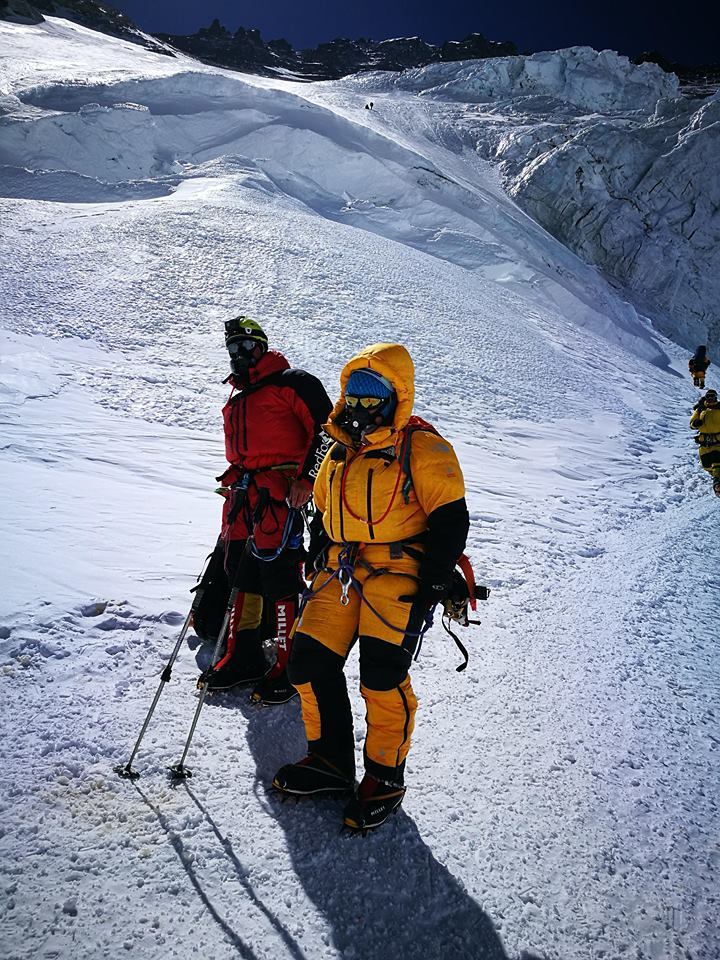
We leave for the Lhotse summit push in the nearest weather window after acclimatization rotation. Each of our participants has a personal guide, and VIP service participants have as many as 2 personal guides. Therefore, each group of participants-guides will move in a convenient speed and mode for the participant. It is not necessary to wait for each other, especially since the participants of the full service and VIP service are initially in unequal physiological conditions in terms of the number of guides and oxygen.
When participants of the Lhotse Climbing Expedition rest between high-altitude rotation, their guides continue to work. They build and equip a network of high-altitude camps. Thus, when we go to the assault, the entire infrastructure of high-altitude camps is already ready. I want to write about Camp 4 separately at the beginning of the couloir. This camp is located at an altitude of 7800 on a very steep slope. To install it, our guides will need to first stuff snow anchors into the slope, lock them with a rope, and fix them with them a rope net. Then the guides will fill the garbage bags brought from Kathmandu with snow and fill the makeshift retaining wall made of snow anchors with these bags. Only then will they set up tents on the site obtained during construction work. According to the laws of the community on the Mountain, only the company that owns them has the right to use this site and tents on it in any situations. This is very true, since the construction of Camp 4 is really a very difficult and financially expensive operation. The work of a qualified guide at these heights is very expensive and all these payments fall on the shoulders of the organizer.
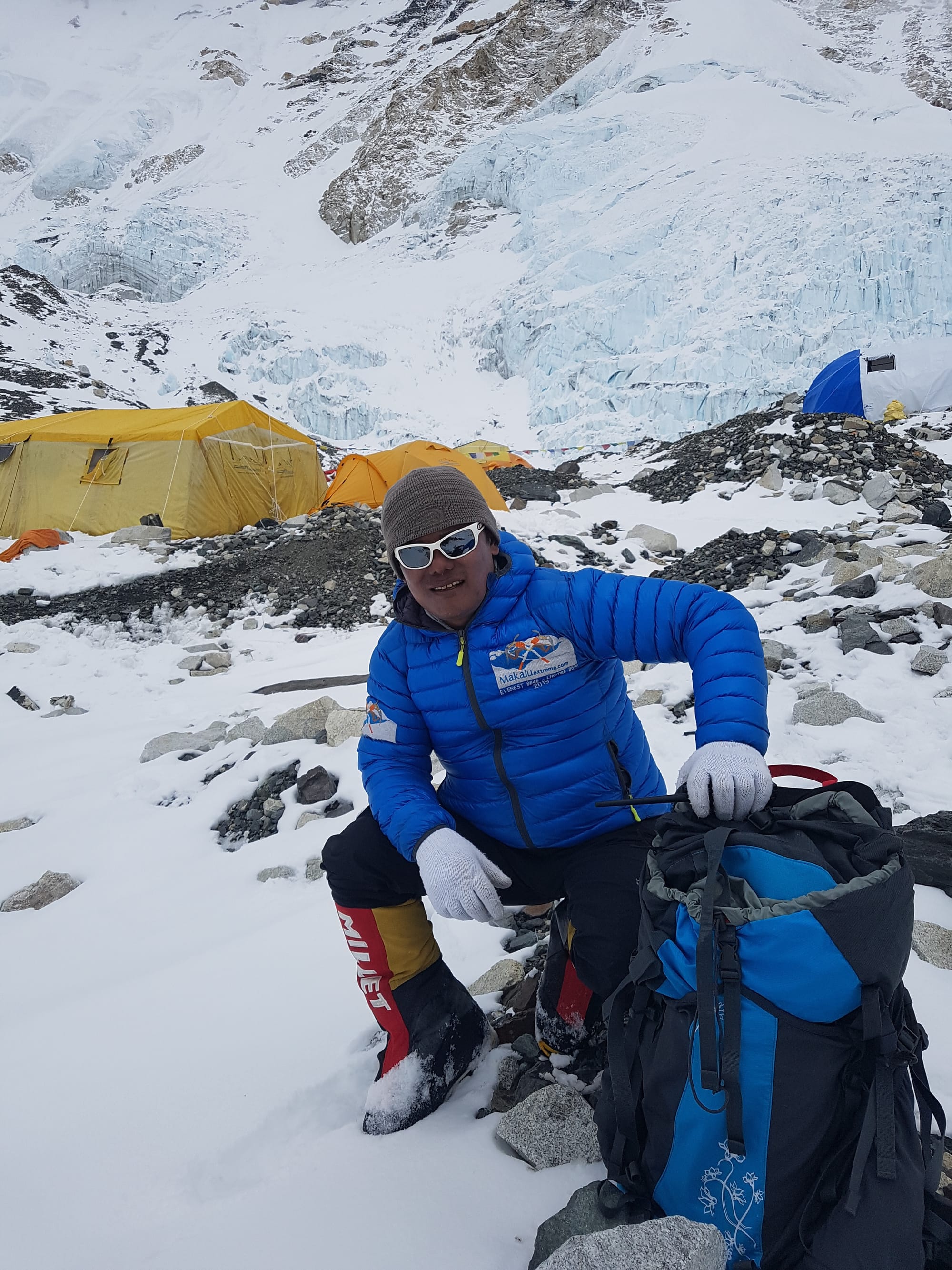
And so, we went on the Lhotse summit push. Each rope team of the guide-participant moves at its own pace. The way from Base Camp to Camp 1 is usually no later than 12 am, as it is desirable to pass the collapse of a dangerous icefall at night. Further, the other outputs may be later. I also want to pay attention to the section Camp3-Camp 4. in the area of the yellow belt, the route can be very dangerous on a Sunny day, so, again, it is necessary to go out on this section early.
We leave Camp 4 for the Mount Lhotse summit push no later than 10 PM. During the summit push, the participants only have a thermos with hot tea in their backpack and one oxygen cylinder, from which the participant directly breathes. This is going to be a hard day. The couloir of the Genevese, which leads to the Top, is very steep. Because of the passage of this couloir, Lhotse is considered one of the most difficult Peaks of our Planet. From the camp, first, we traverse the steep firn fields to the right, and then we get into a steep, ice-rock couloir, which in places becomes very narrow, like a chimney. After expanding the couloir, we get to the foot of two steep rock walls, which lead to the top of the dome. On the way up, we can see the most incredible views in the Himalayas. Lhotse is the place where a Dream comes True, and, in a few hours, comes a Dream again.
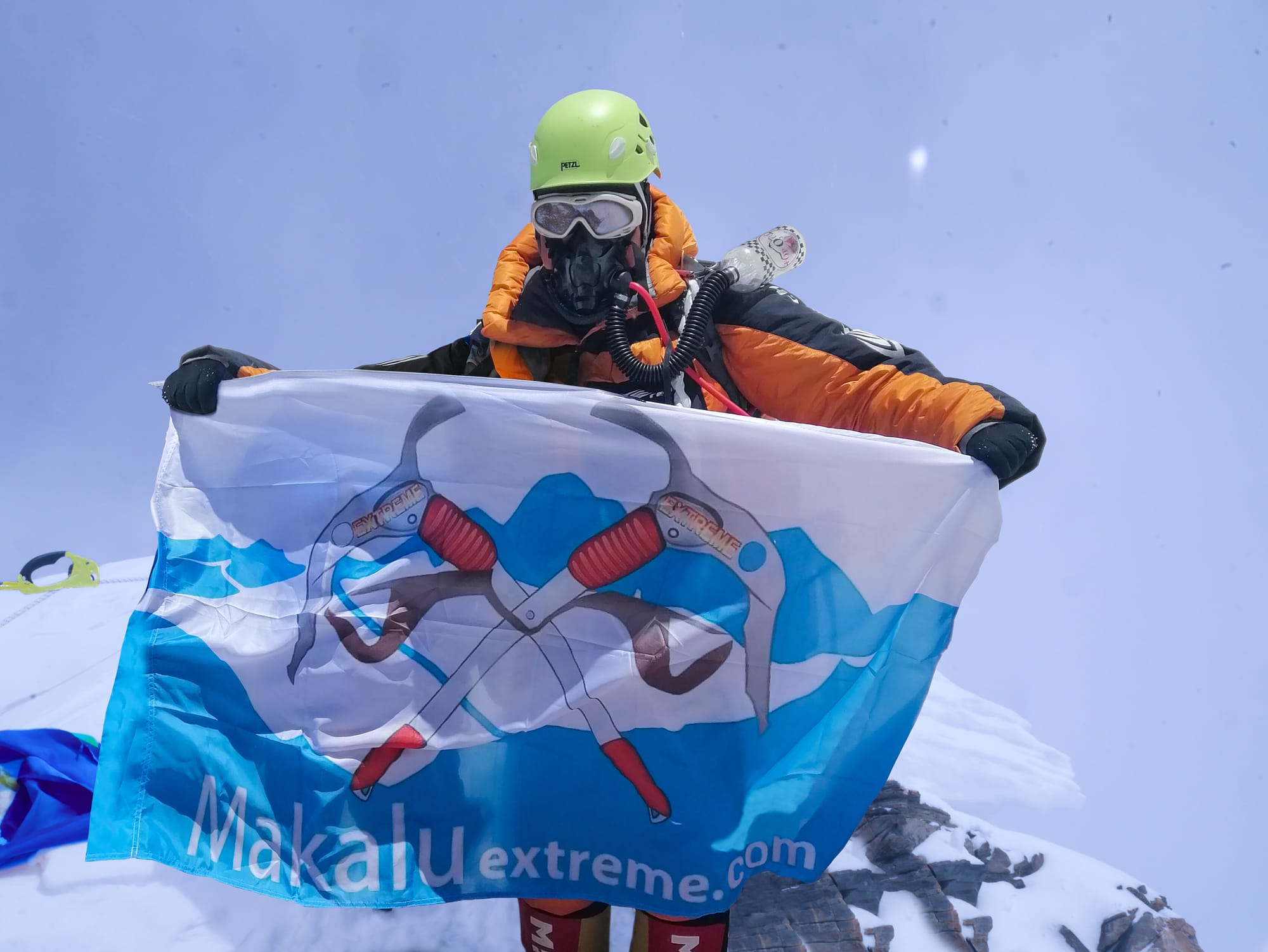
From the Top of Mount Lhotse we go down to Camp 4 or 3, which everyone chooses according to the physical condition and amount of oxygen.
Next day - the descent in Camp 2, and the following day descend to base camp. At the Base Camp, we will have a celebration dinner, cake, and a hot shower. The next day we rest and pack cargo. And finally, the next day we leave the Base Camp and go down. The descent takes place on the way up. We also stay in the same hotels as at the beginning of the Lhotse climbing expedition.
At Lukla airport, we say Goodbye to the Himalayas.
In Kathmandu, participants have another free day to buy Souvenirs, banquets and excursions.
The next morning, we escort the participants to the airport. We, the organizers, hope to see our participants in our next expeditions, because there are 14 eight-thousands on Earth!
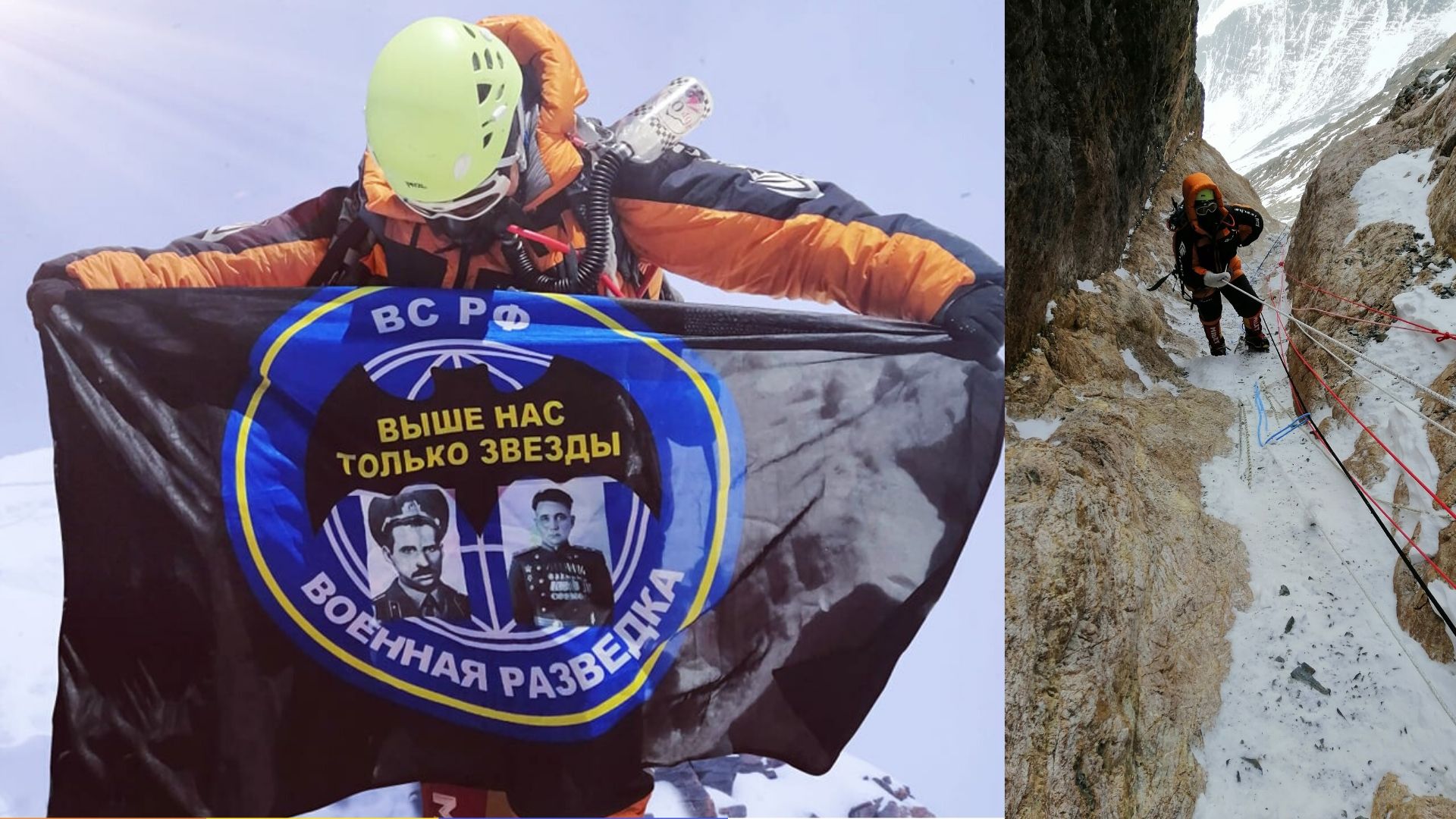
💪 💪 😲
Super Thriller and heroic Saga from Galina Pogodina about our Lhotse 8516 expedition -2019. Amazing writing, it takes your breath away! I'm impressed! And this really happened to us last year, at this time!
----------------------------------------------------------------------------------
Height and love
Today
Interview with Nepalese mountaineer Dorchi Sherpa about last year's ascent of Mount Lhotse , which he made with his wife Oxana Morneva-Sherpa.
Oksana and Dorchi were accompanied in Lhotse expedition by their company high-altitude guides Pasang Lama and Pasang Dorji Sherpa. Despite the vast experience of all participants, the ascent was not an easy task. First of all, an eight-thousand-footer is always over the edge. Secondly, in 2012, Oxana almost lost her leg (her story "instructions to survive"), and this injury had severe consequences. In fact, she doesn't have a knee. Therefore, the team could not go fast.
Oxana was on Lhotse Summit in 2018, and this ascent was very difficult for her. After the Lhotse expedition, she spent a long time in the hospital.
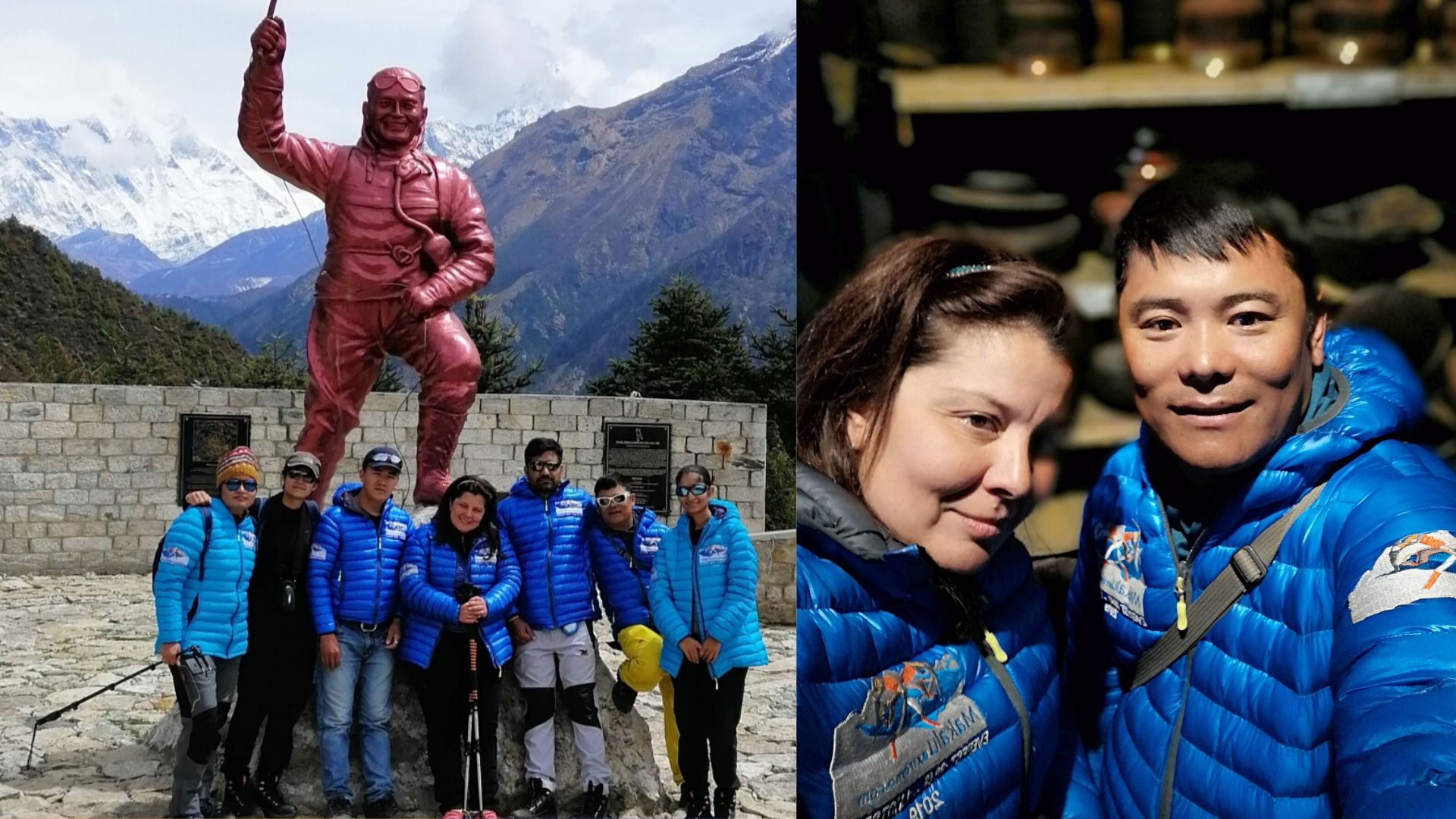
Oxana Morneva-Sherpa:
Lhotse was a difficult mountain, and I didn't think I would want to come back here. But life ordered was different. Immediately after the hospital, Marat Khamitsayev, a mountaineer and the Creator of a number of interesting projects, got in touch. He said: "If you climb Lhotse again, you will be the first woman in the world to do so. And you can take part in our project "battle standards of military intelligence on the top of the world". It was great, I didn't hesitate to agree! I told Dorchi about it, and He said, "Oh, great, let's get in."
Oxana and Dorchi arrived in Kathmandu and were stuck waiting for the Indian group, which was two weeks late. Thay had to reschedule everything: flights, acclimatization...
While waiting, the guys went to a restaurant for a snack. For religious reasons they don't eat beef: Dorchy ordered lamb, and Oxana ordered chicken steak, which tasted very strange. Oxana strongly doubted, but still ate this meat. And - caught bird flu...

Says Oxana:
And then I felt an deeply twinge. I had a temperature of 39 for a week. At the same time, there was no way to be treated. We went on the bike to meet the group, and I thought that I would lose consciousness and fall on the road. Naturally, I bought masks and kept my distance so as not to infect anyone. As a result, no one was infected, and only now I learned that this infection is not transmitted from person to person.
The group arrived without equipment, and had to dress everyone, and again had to change tickets. The Indian team are a slow people: it took half a day for each of them. In total, 5 people took 2.5 days. And then came the non-flying weather.
Finally flew by helicopter to Syangboche, starting trekking point for Lhotse expedition, abandoned expedition cargo. Oxana still had a fever, but since a lot of time was lost, they did not wait. And when we got to the base camp, all that was left of the disease was weakness. Therefore, Oxana acclimated only on Kala Patar and the nearby hills, while the guides brought their equipment to the high-altitude camps. Choosing the weather window, we went up, without preliminary ascents and descents.
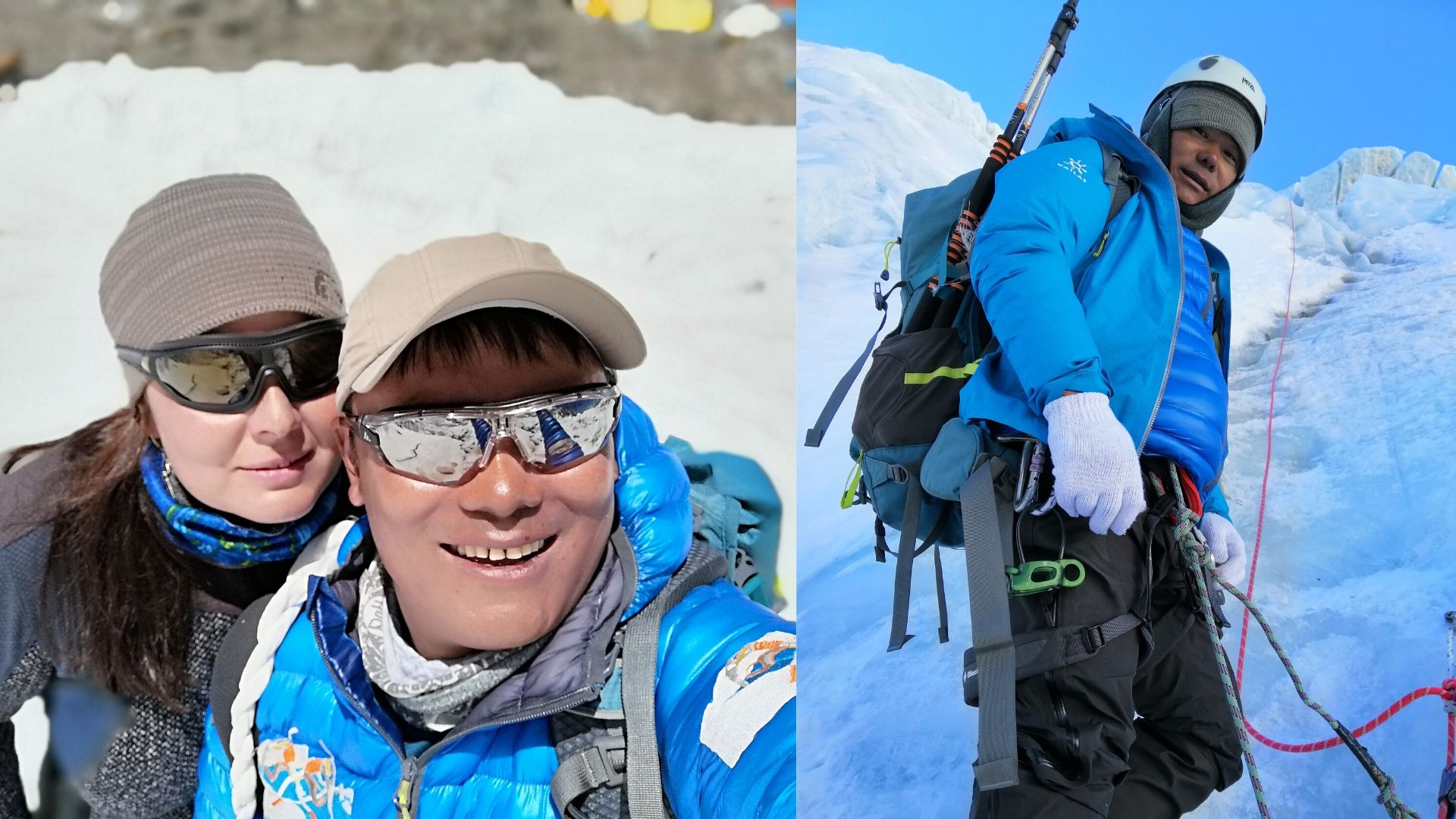
And then the rope road on the Khumbu icefall collapsed - this is the very beginning of the way. The ropre team receives $ 800 per person only for Icefall way, and their responsibilities include prompt repairs. But no one did.
Says Oxana:
“Dorchi said that he knew the mountain well and we would get through anyway, and if we waited, we might not get through. There were a lot of people going down the icefall and we were warned that we would not pass. Of course, in 3-4 places I specifically stuck, just tin, and I twice fell into the crack, not jumping to the edge. Several times Dorchi and I stopped and kissed, and he told me, " You can!" “
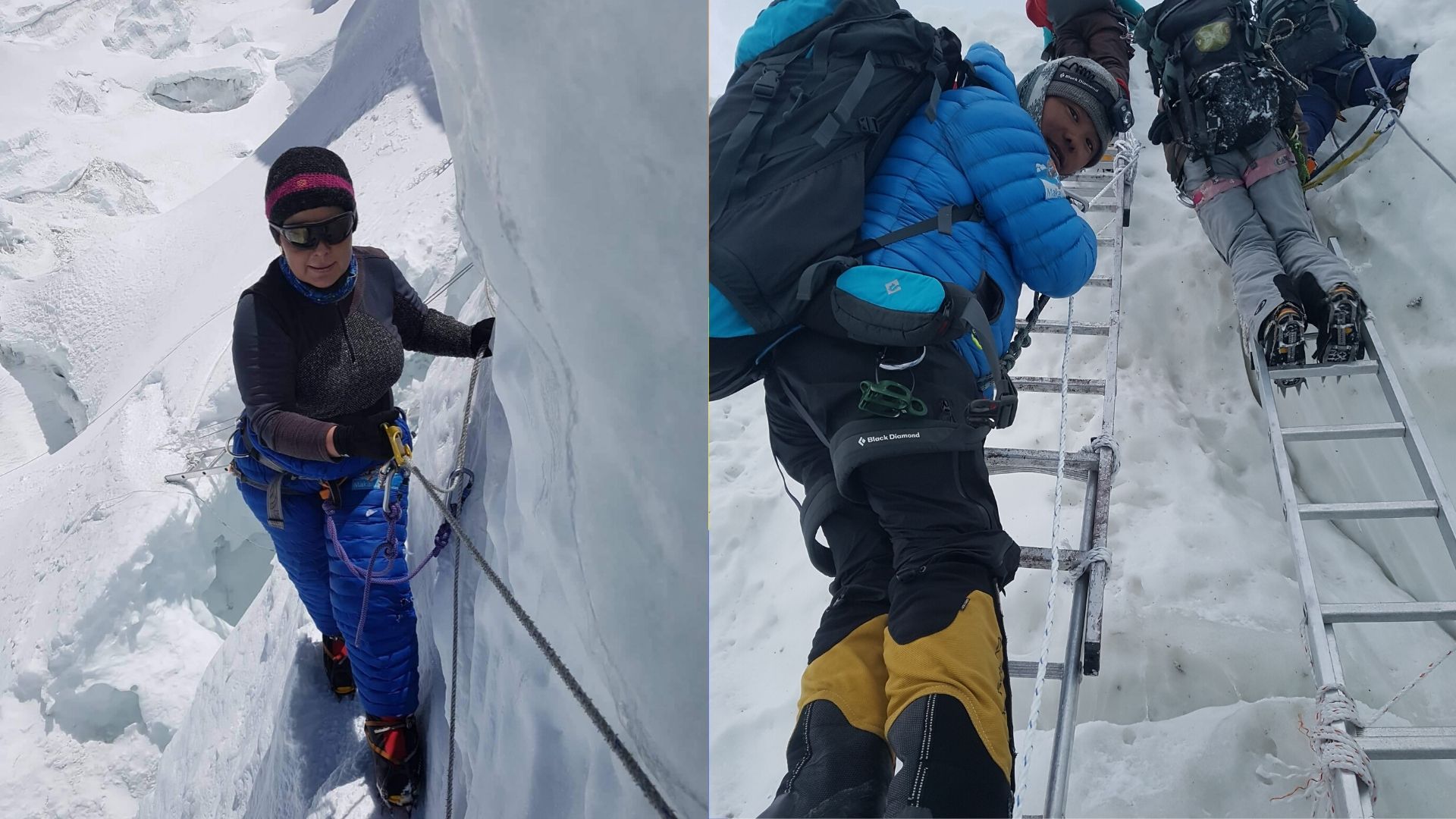
The Khumbu Icefall
One crack had to be bypassed along the edge of the valley, and there is dangerous in the sense that an avalanche can descend from above. One hundred-meter ladder held on a single ice screw storm turned over under the weight of people. It was also located above a very deep crack. Oxana barely overcame this area with her bad leg and was very tired after this journey.
After passing the icefall, the group arrived at the camp in the evening. They had to rest for a couple of days in the Second camp. During this time, judging by the top, the weather began to change, but there was a calculation to slip through the weather window.
Dorchi Sherpa Comments:
“It was a completely new experience for me – to climb an eight-thousand-meter mountain with the woman I love. In addition to equipment, we carried an additional load-the battle standarts of the military intelligence of South Ossetia and Russia, to solemnly unfurl them at the top of Mount Lhotse, honoring the memory of South Ossetia heroes.”
Oxana was in doubt about her abilities after all that had happened. Dorchi was always encouraging her: "Everything will work out, we can't fail, we have to go in!"
Dorchi was on his sixth trip to Lhotse, and he knew the mountain well. But over the years, the state of the slope has changed a lot. There was a lot of blue ice and rocks on the route.
The climbers had a lot of questions to the government rope team, which is obliged to monitor the state of the route. The road was just broken, but no one thought to repair it.
Dorchi Sherpa:
“At the moment when we went out to storm, the weather window was held, but the Khumbu icefall was broken in five places. There was serious damage to the railing, and there were no ladders in three places. It was decided, despite this, to continue climbing. This was the middle of the season, and the risk of rockfalls would have increased further.
With the broken path and Oxana's problematic knee, everything happened very slowly. But the success of this joint ascent was incredibly important for me, as I love my wife very much and also know what it means for her to climb to the mountains after that injury. Hers summit was my summit. I looked at the rugged mountains around us with her rapt eyes.”
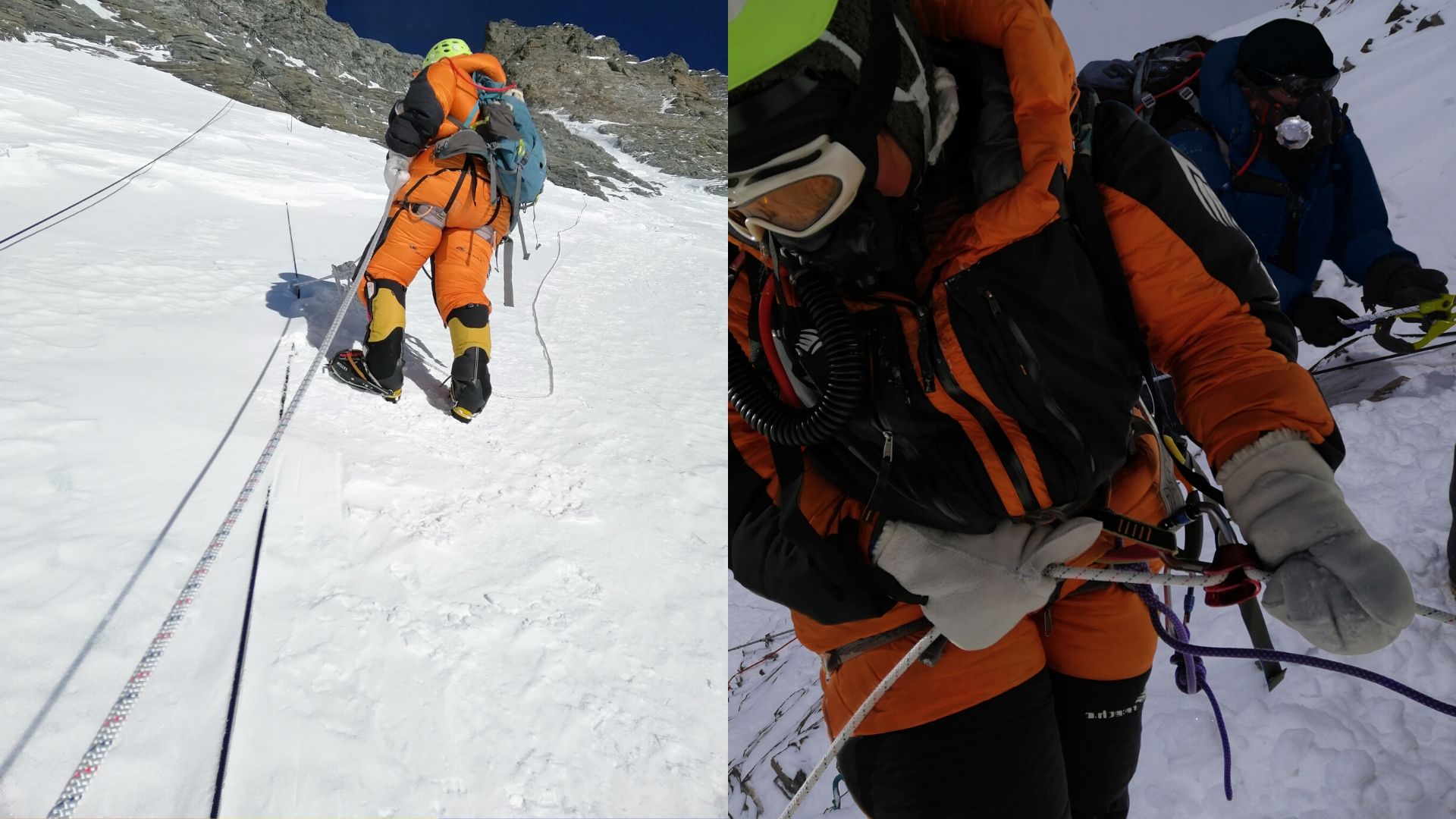
When the group left the 4th camp, there were good rope for climbing and descending in the couloir. But after the flu, Oxana could not breathe normally: everything inside hurt. The weather on the day of the summit push completely deteriorated, until dawn a hurricane arose. Oxana tried to return many times, but Dorchi stopped her and urged her to continue climbing.
Says Oxana:
“Last year at Lhotse Summit Push, it snowed and visibility was much worse. This time, such panoramas are crazy - everything is in the palm of your hand, in such snow swirls... It was very beautiful, but when we got to the couloir, a blizzard started. Many times the wind knocked us down.”
Fortunately, there were new ropes on this section without interruptions. Otherwise, for sure 100%, without fixed rope, you could fly away. This rope was fixed by a completely different team - not the one that monitored the icefall. That's how someone at a low altitude just fills a pocket, and someone at a high altitude does the job at 100%+.
Says Dorchi:
“We left camp 4 at 9 PM and were at the top at 13.30. Due to the storm, and Oxana's leg, we strongly violated the rule of the return point, which occurs at 12 am. This was my decision: to ignore the rules for the sake of Oxana. It was important for me to go to the top with her.”
The state of the route was very difficult in this snowless year. The descent was also slow, there were a lot of rocks and ice in the couloir: with a crippled leg, it was very difficult for Oxana to balance on the front teeth of the crampons.
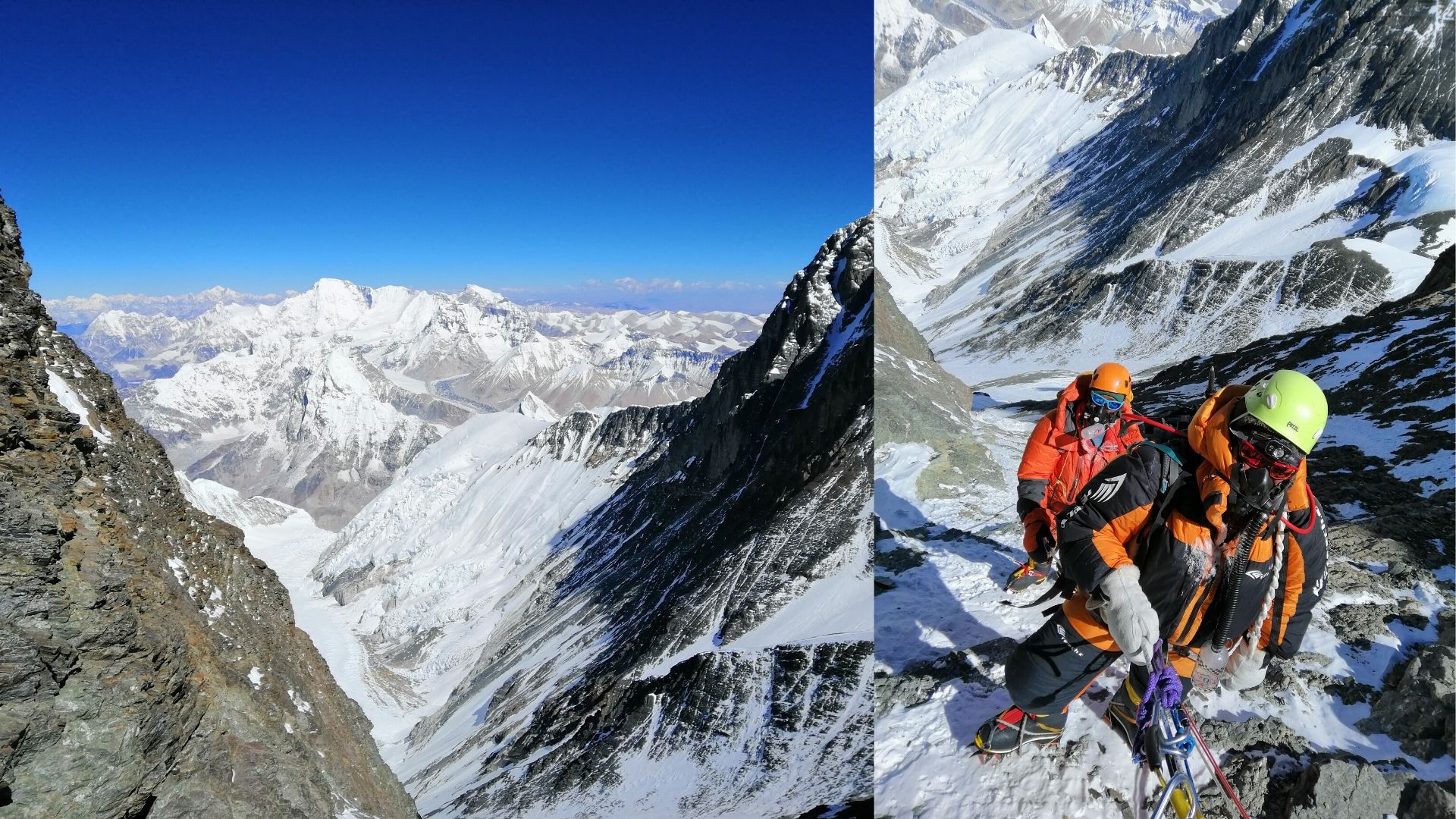
Says Oxana:
“The Lhotse expedition- 2019 was an unforgettable adventure and an unforgettable peak. We returned to camp 4 only at night, and a day later to camp 3. The descent to camp 2 took us another day, and after spending the night we finally went down to the base.”
The entire route was marked by a large number of rocky and icy areas, the Khumbu icefall was covered with new deep cracks.
Under all circumstances, for Oxana, the ascent to the Summit of Lhotse of 2019 has become harder and tougher than in 2018.
For Oxana, this was her second ascent to this peak, and she thus set a women's world record.
Was Talking
Galina Pogodina
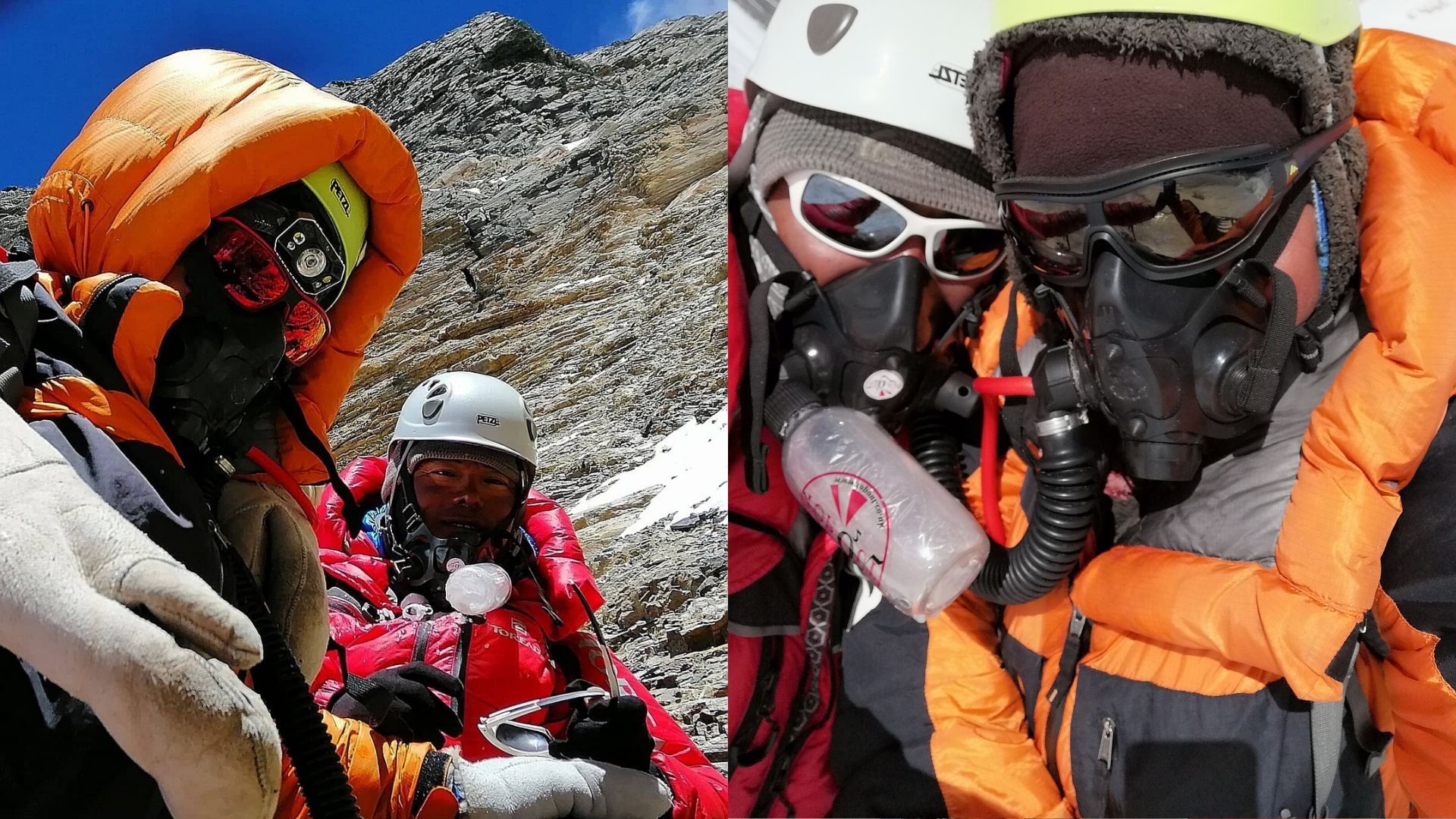
PERSONAL EQUIPMENT
(1) Down suits (dangri) 1
(2) Summit shoe 1
(3) Walking shoe 1
(4) Crampon 1
(5) Summit Glove (Mitten) 1
(6) Normal gloves 2
(7) Summit Snow goggles 1
(8) Glacier glasses 1
(9) Ice axe 1
(10) Harness 1
(11) jumer 1
(12) Carabiners (normal) 3
(13) Sleeping bag (-40C) 1
(14) Down filled Mattress 1
(15) Summit socks 2
(16) Normal socks 3
(17) Climbing bag (40 ltr) 1
(18) Helmet 1
(19) Down jacket 1
(20) Down trouser 1
(21) 8 finger / descender 1
(22) Headlamp (Icon or Spot) 1
(23) Gore-tex jacket 1
(24) Gore-tex trouser 1
(25) Fleece jacket 1
(26) Fleece trouser 1
(27) Fleece liner gloves 3
(28) Screw Gate Carabiner 1
(29) Balaclava (windstopper) 1
(30) Thermos bottle 1
(31) Base layer (woolen) 2 (set)
(32) Water bottle normal 1
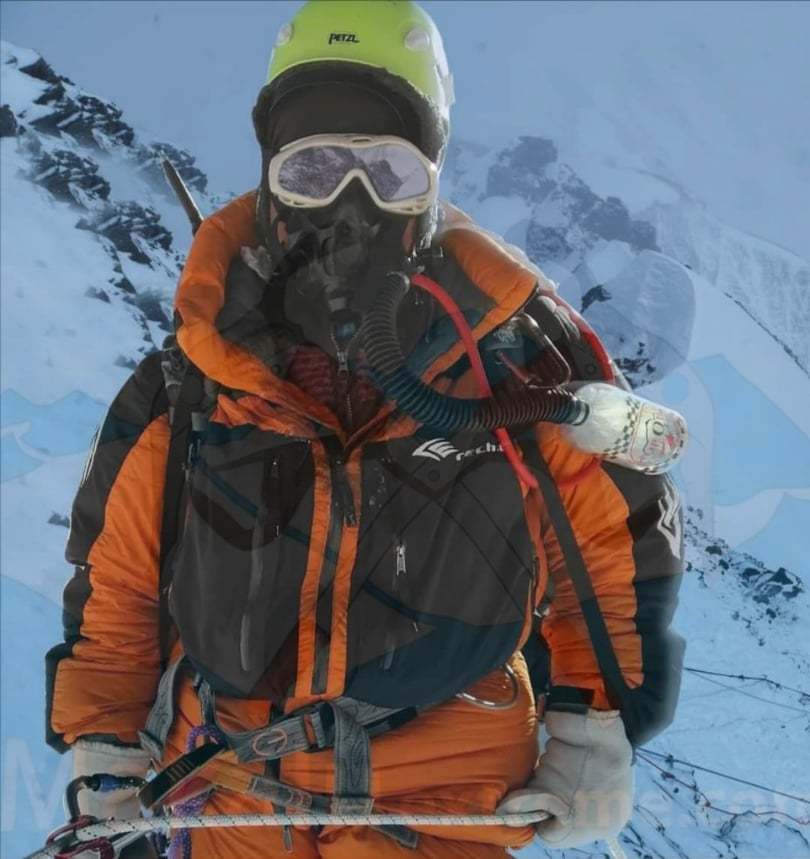
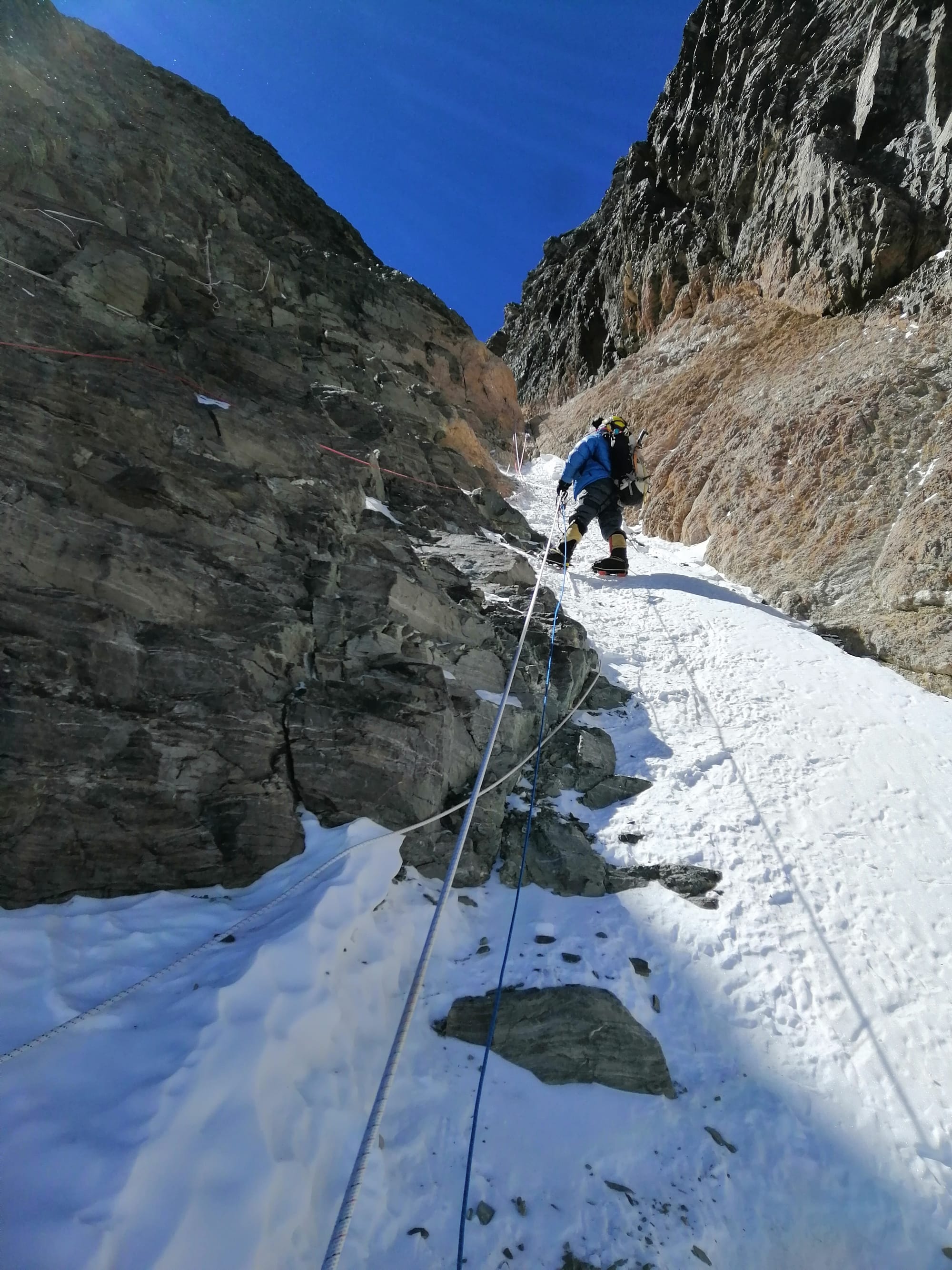
Makalu Extreme Treks and Expeditions will provide to our Full and VIP service members One Base Camp Warm Jacket and one Expedition Duffle back size XL with company logo
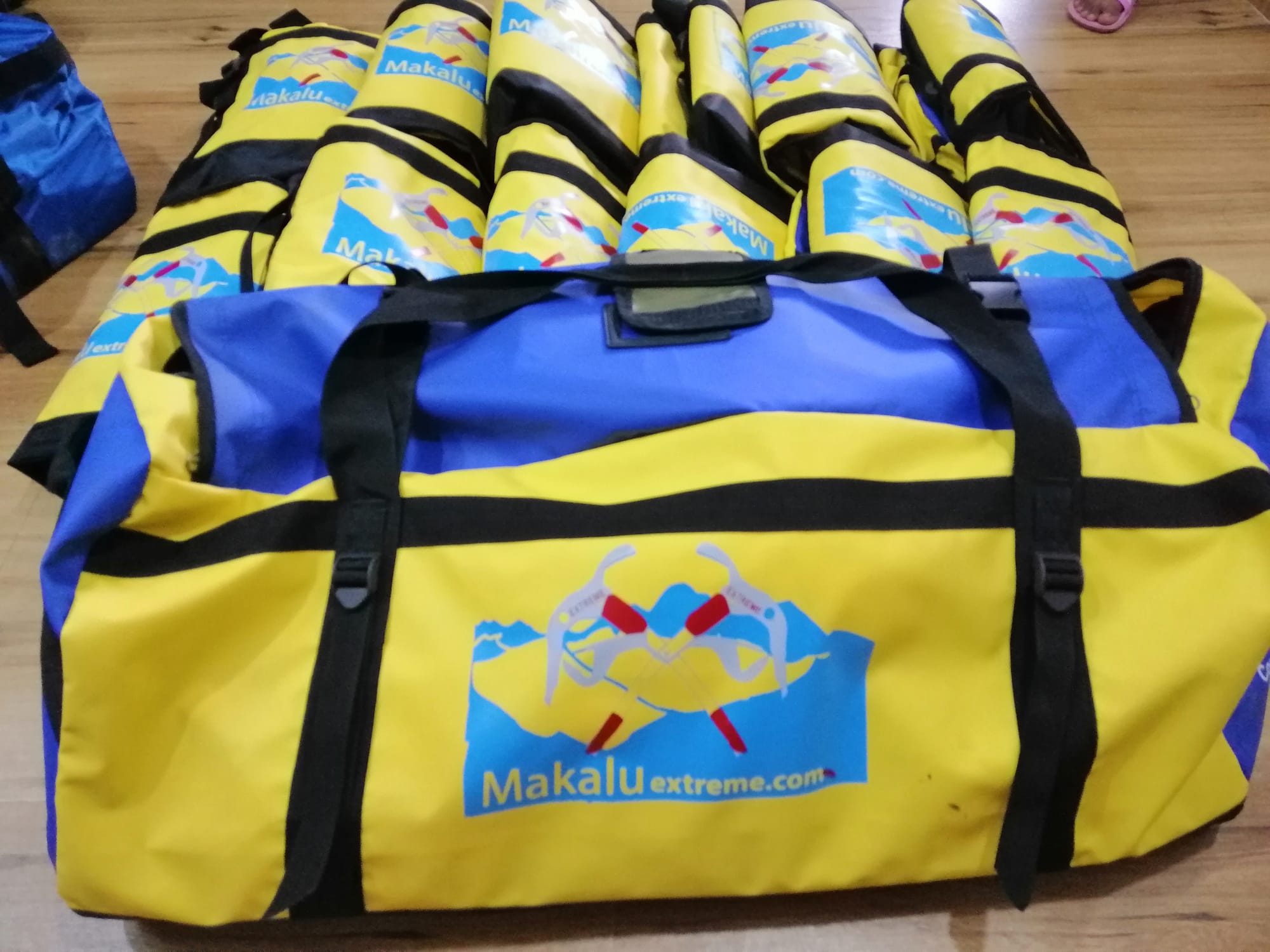
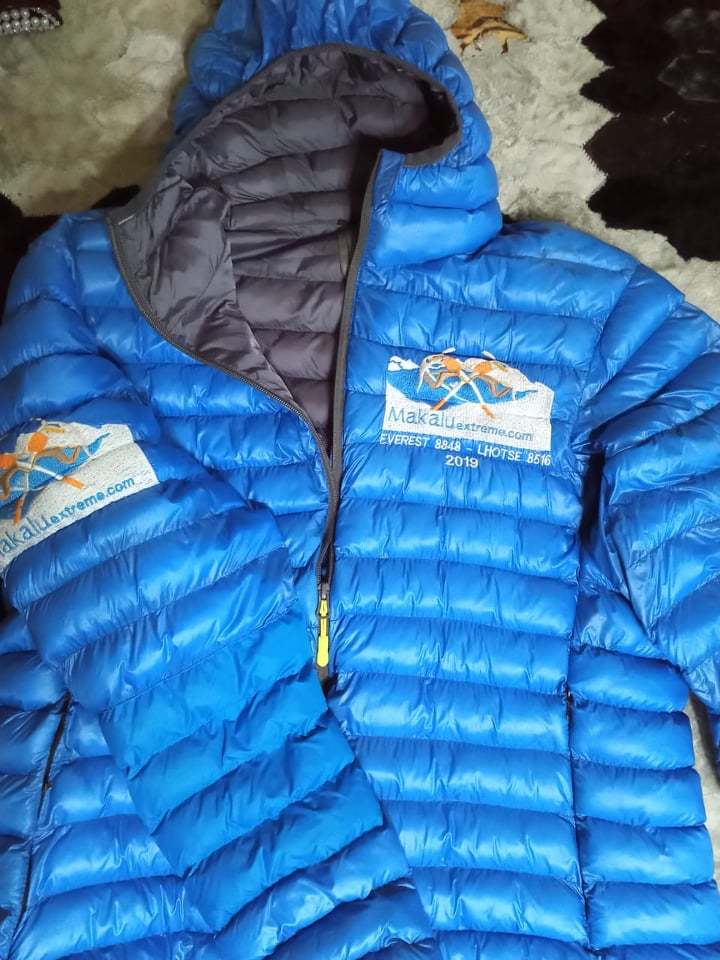
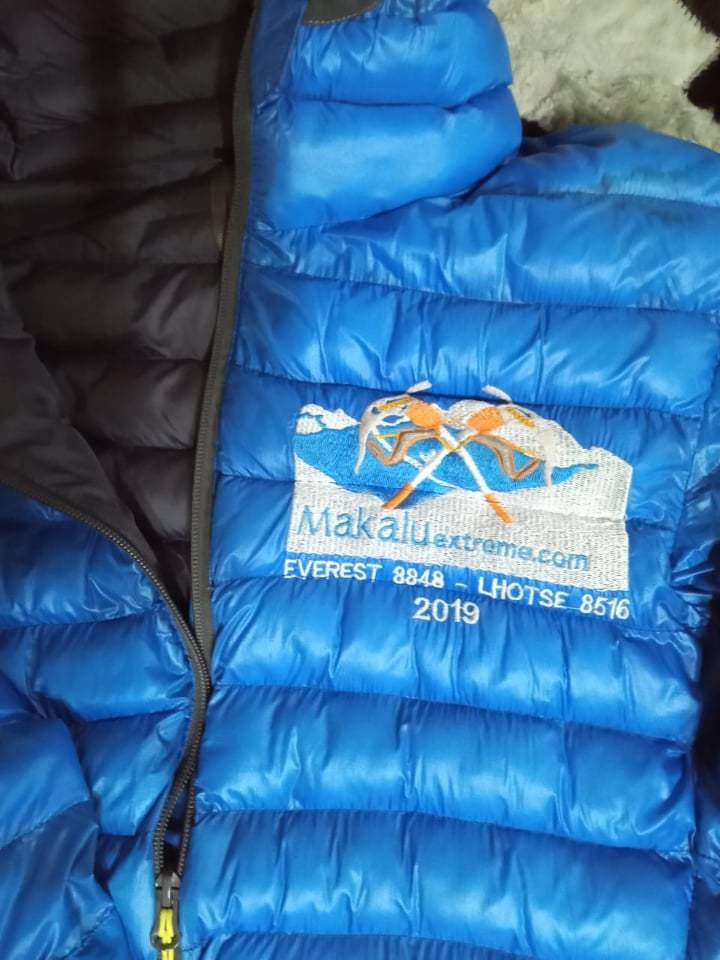
Here is some photos to illustration what kind of meals usually you can have at our Lhotse 8516 climbing expeditions
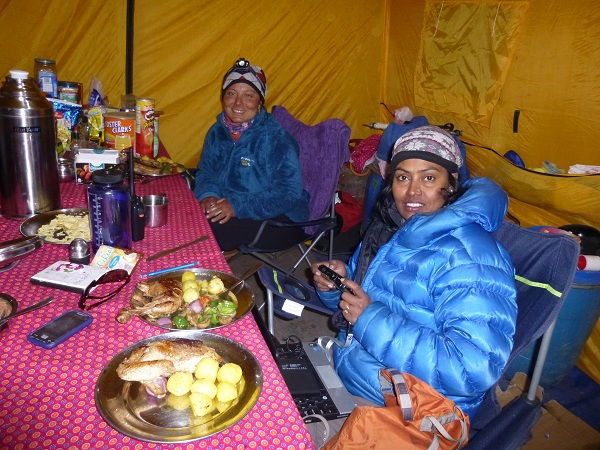
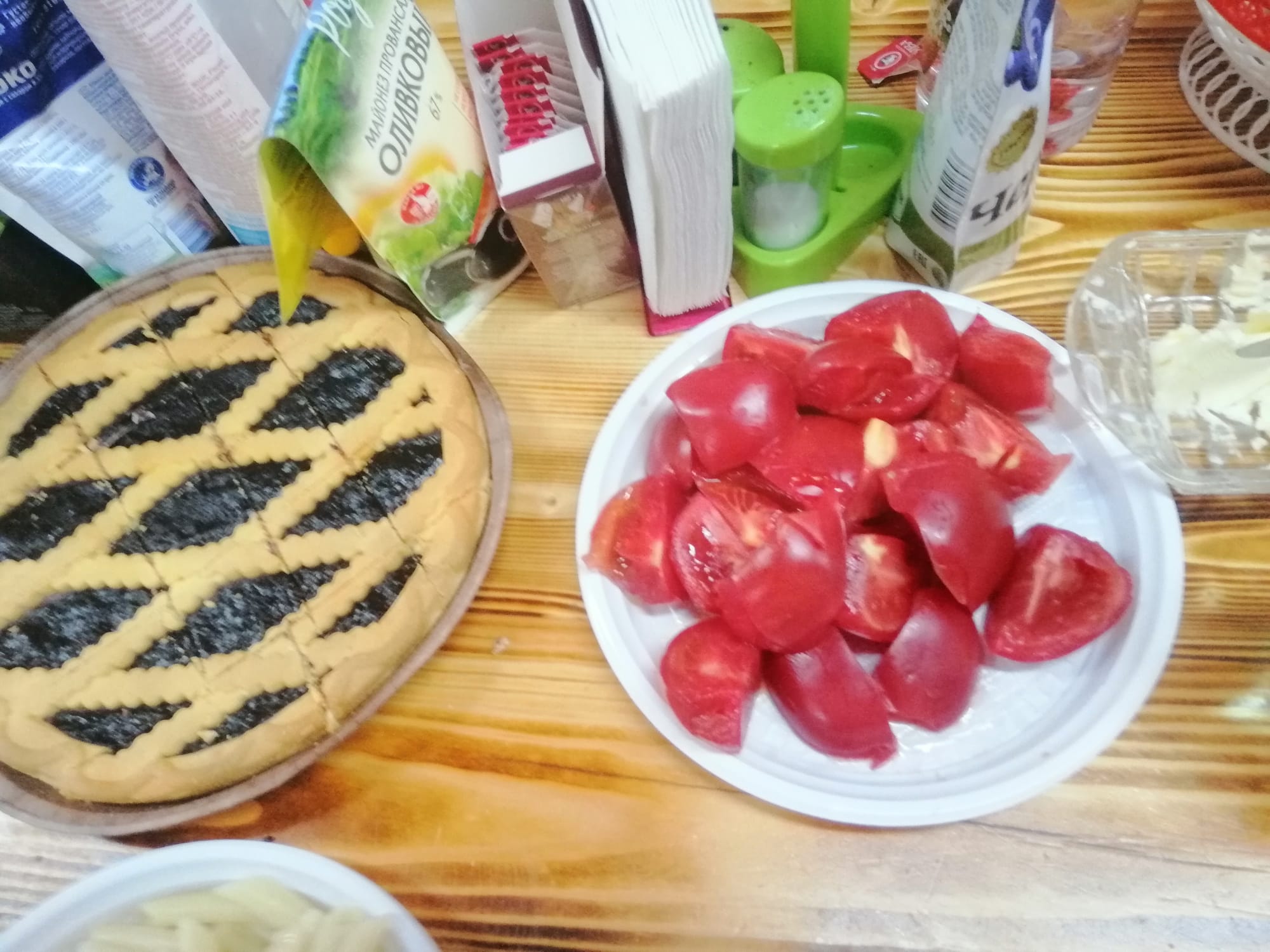

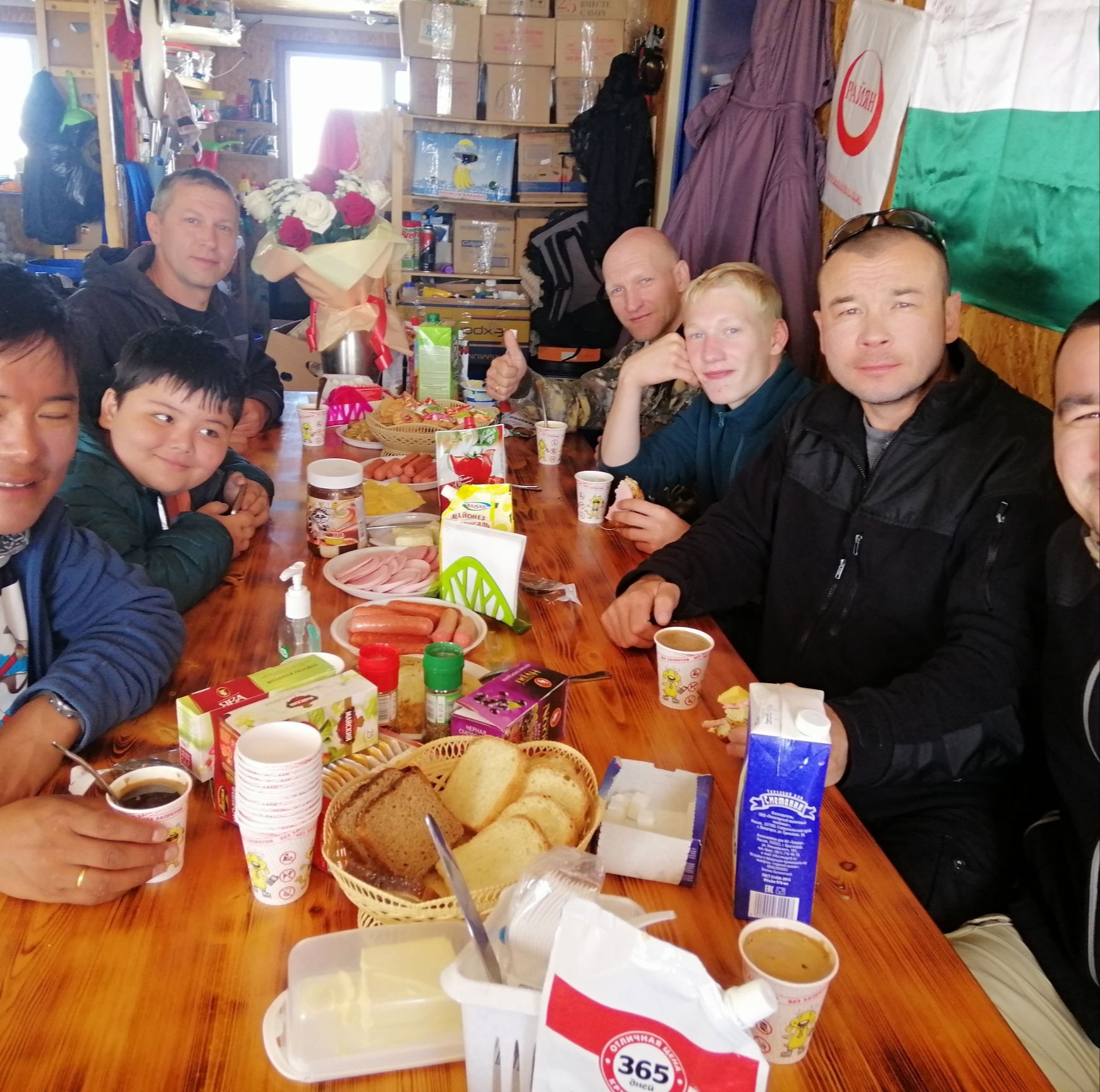
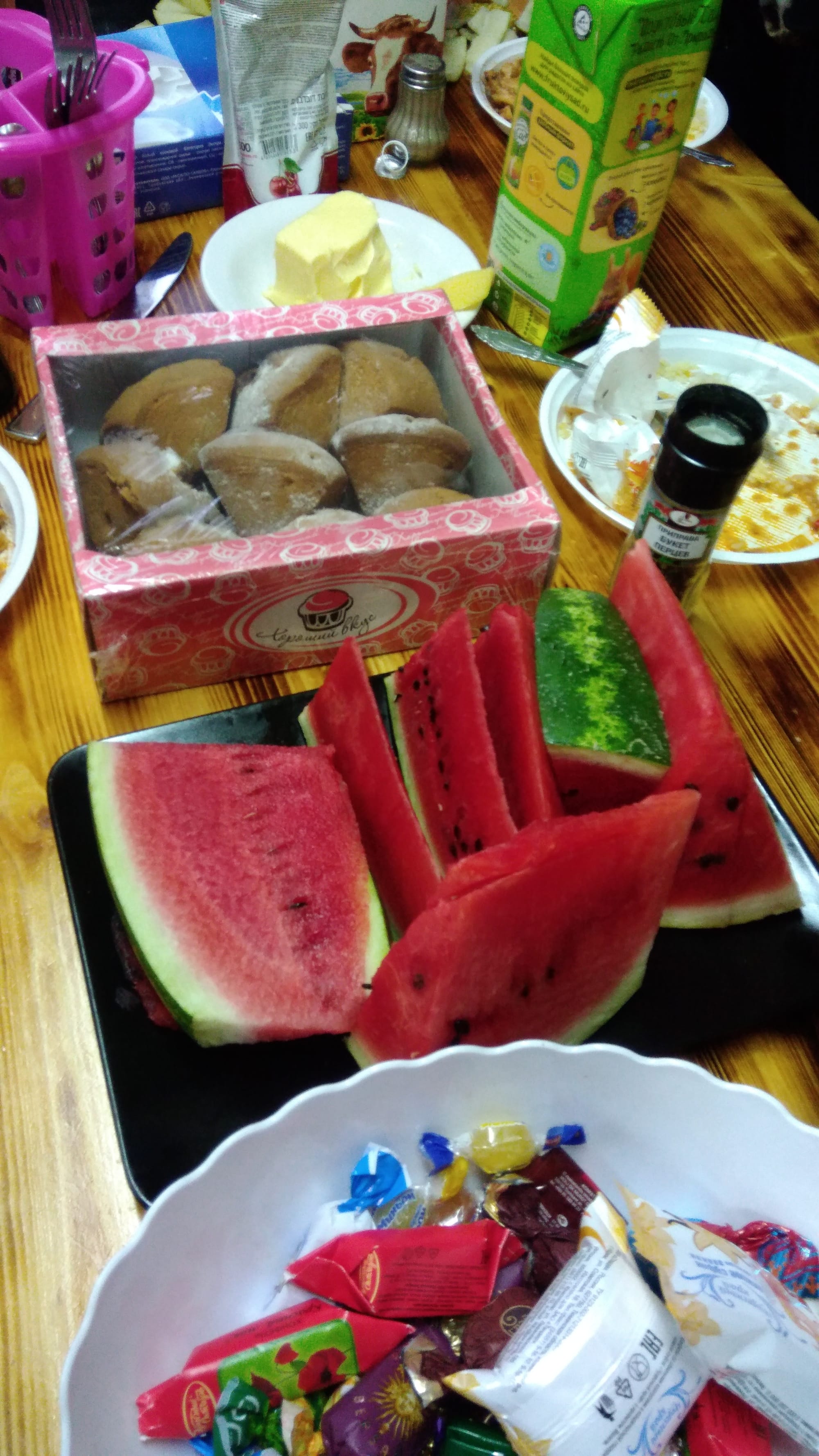

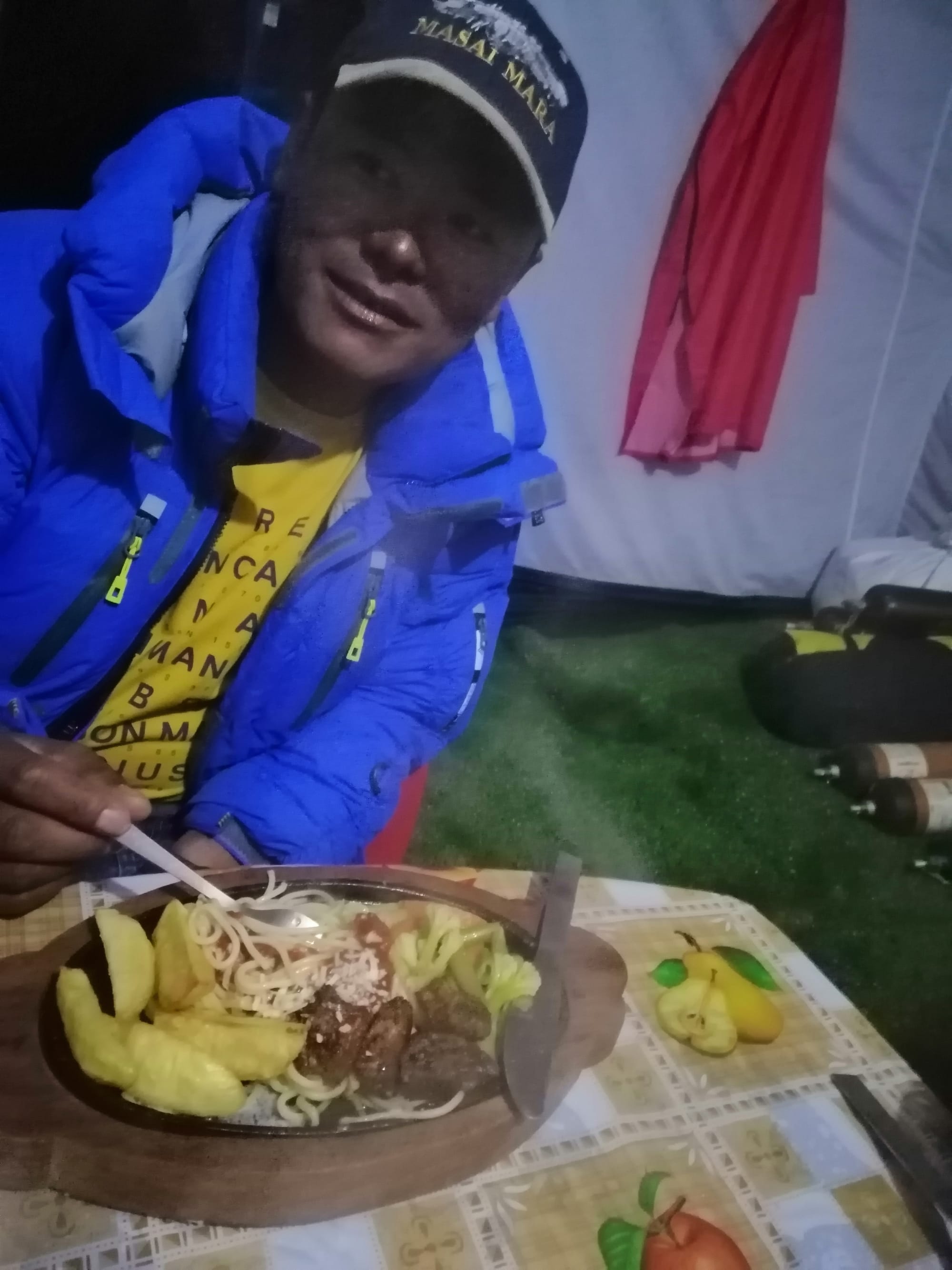
Here is photos of our hotel, where will stay all our full and VIP service members of Lhotse 8516 climbing expedition
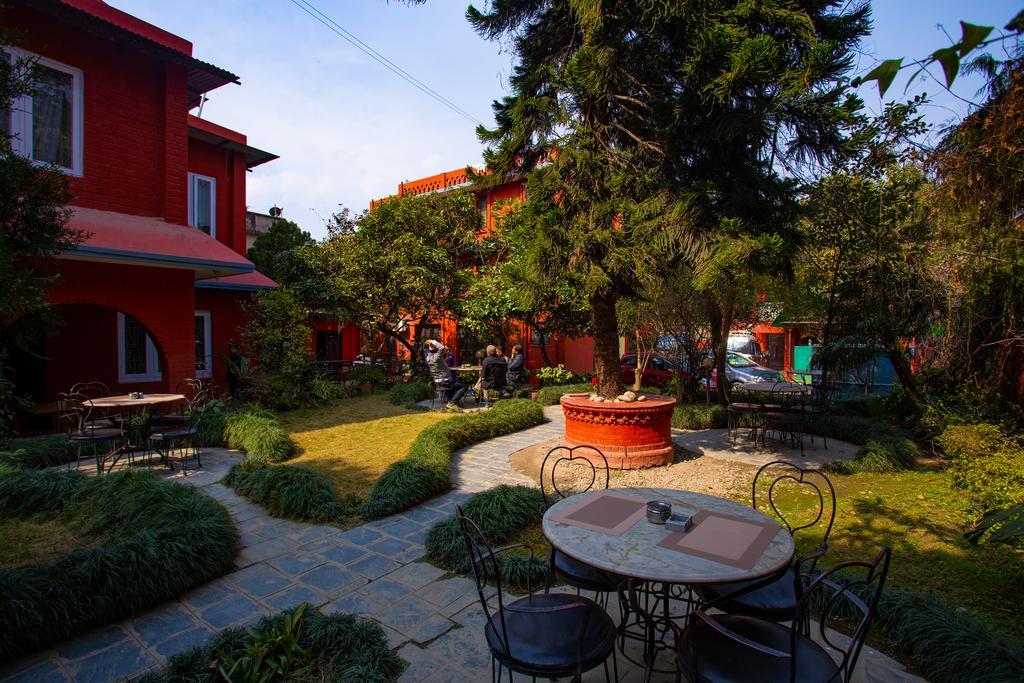

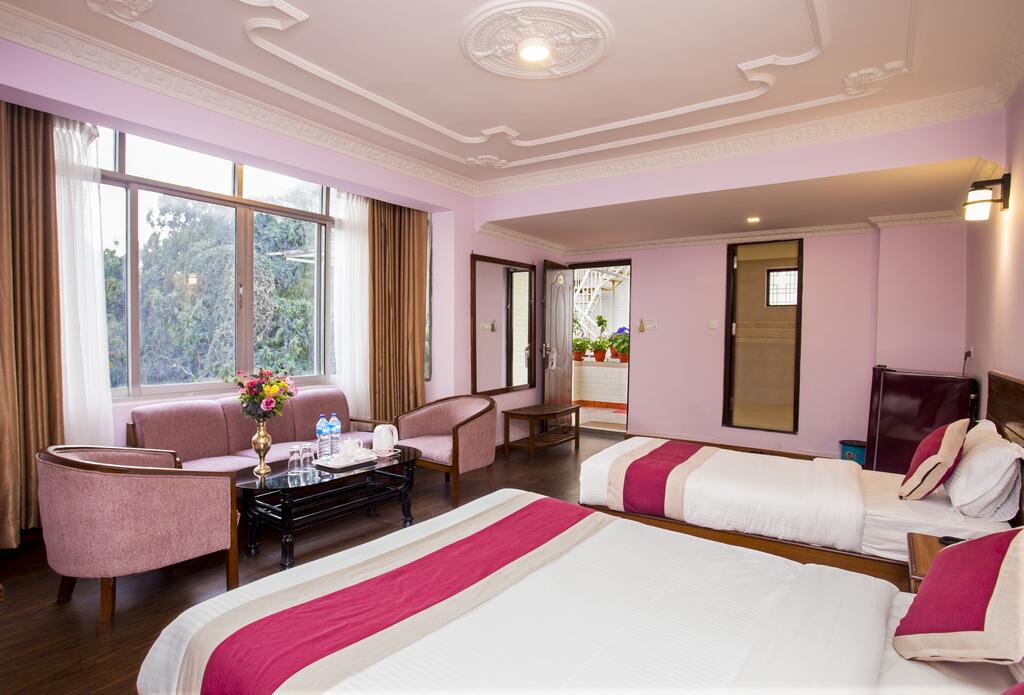
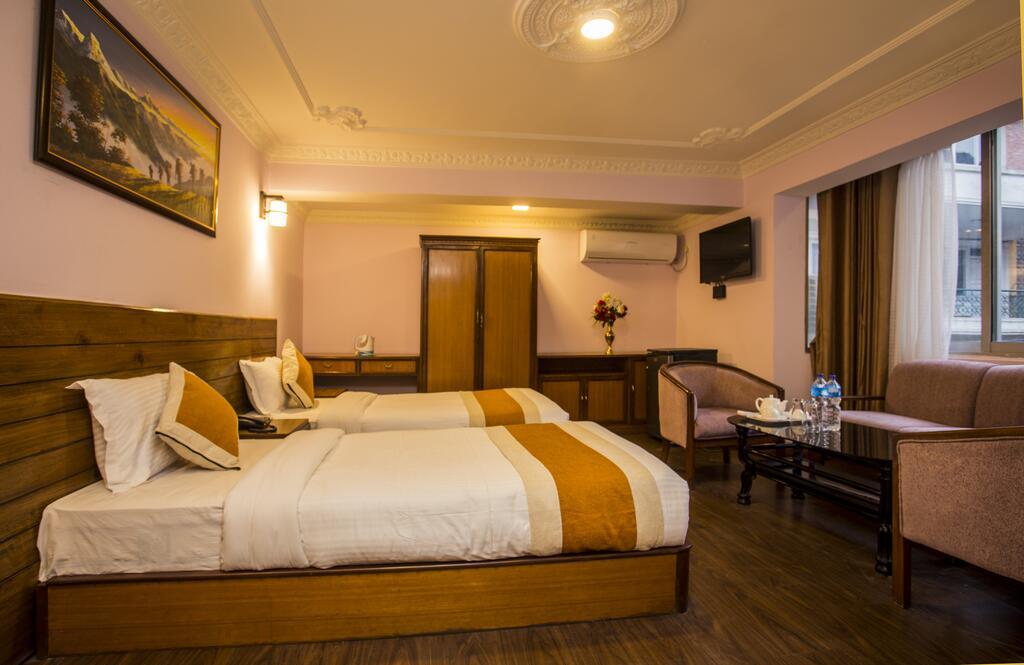

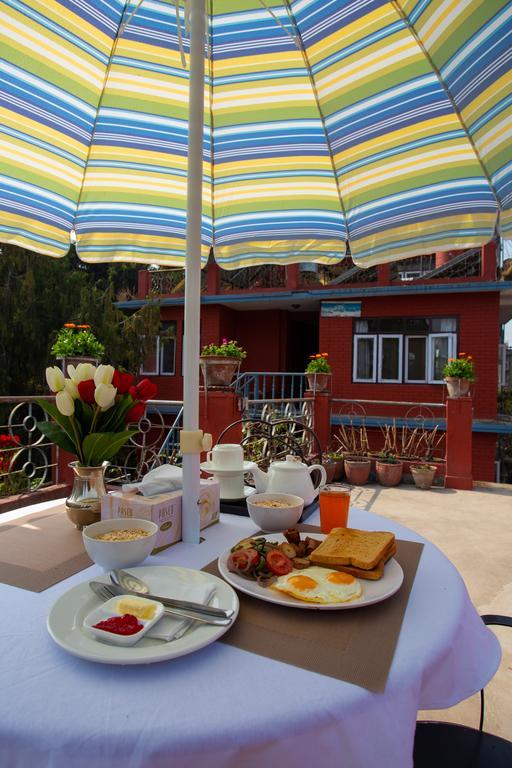
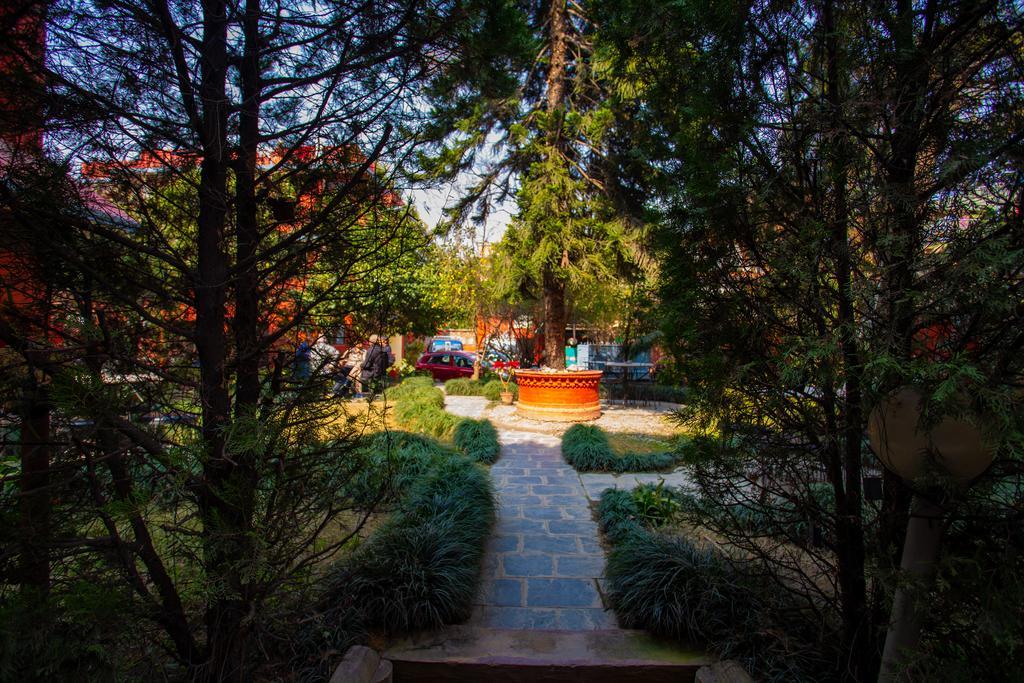
ALL MATERIALS AND PHOTOS OF THE SITE ARE THE PROPERTY OF MAKALU EXTREME CLIMBING ADVENTURE. THEIR USE IS PERMITTED ONLY WITH THE CONSENT OF THE OWNERS OF THE COMPANY.
